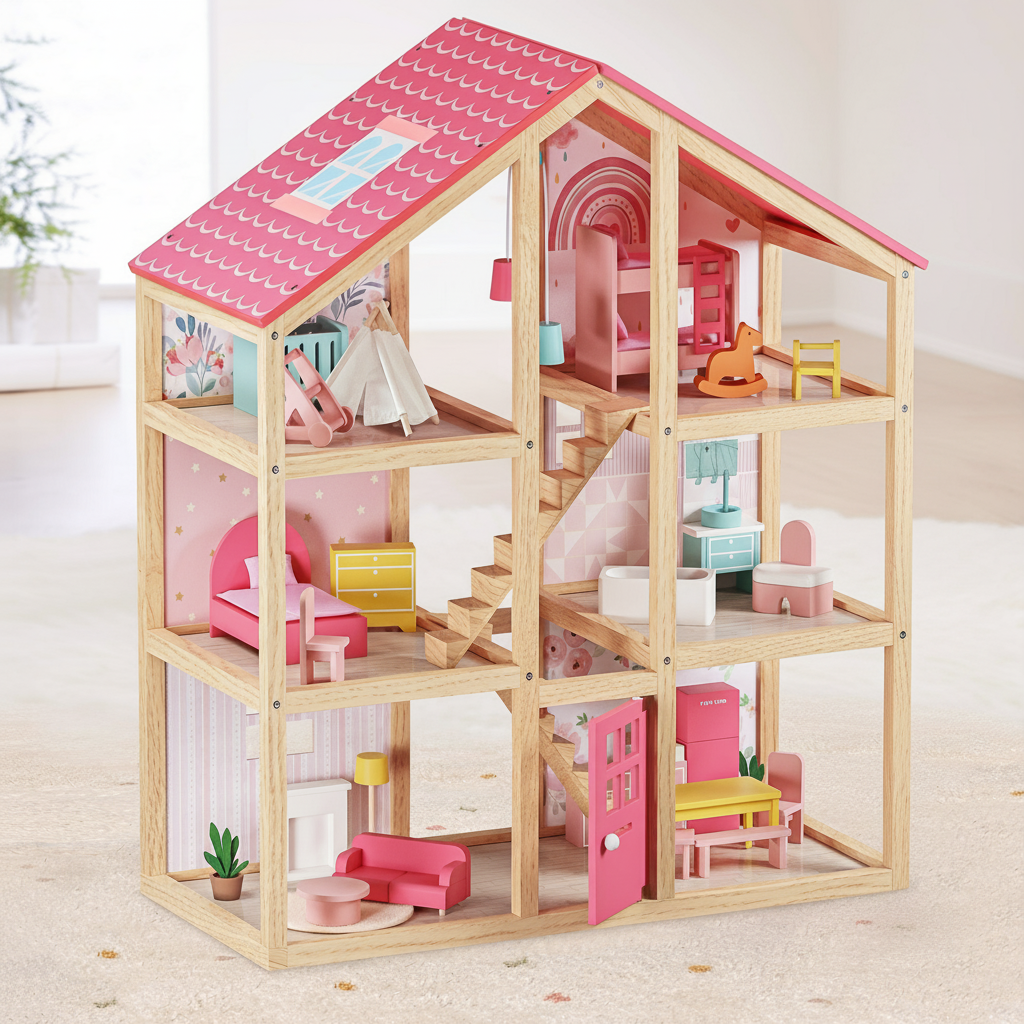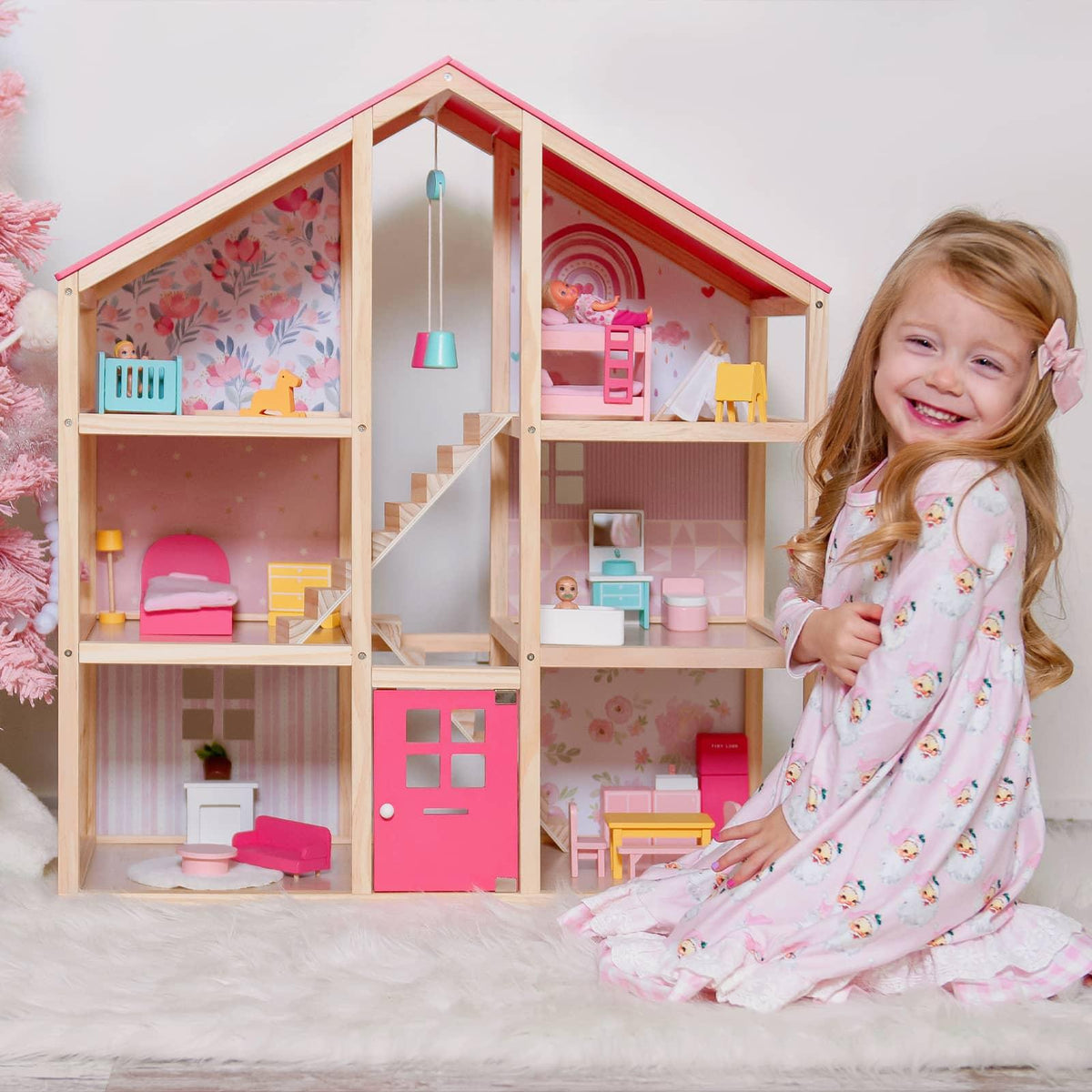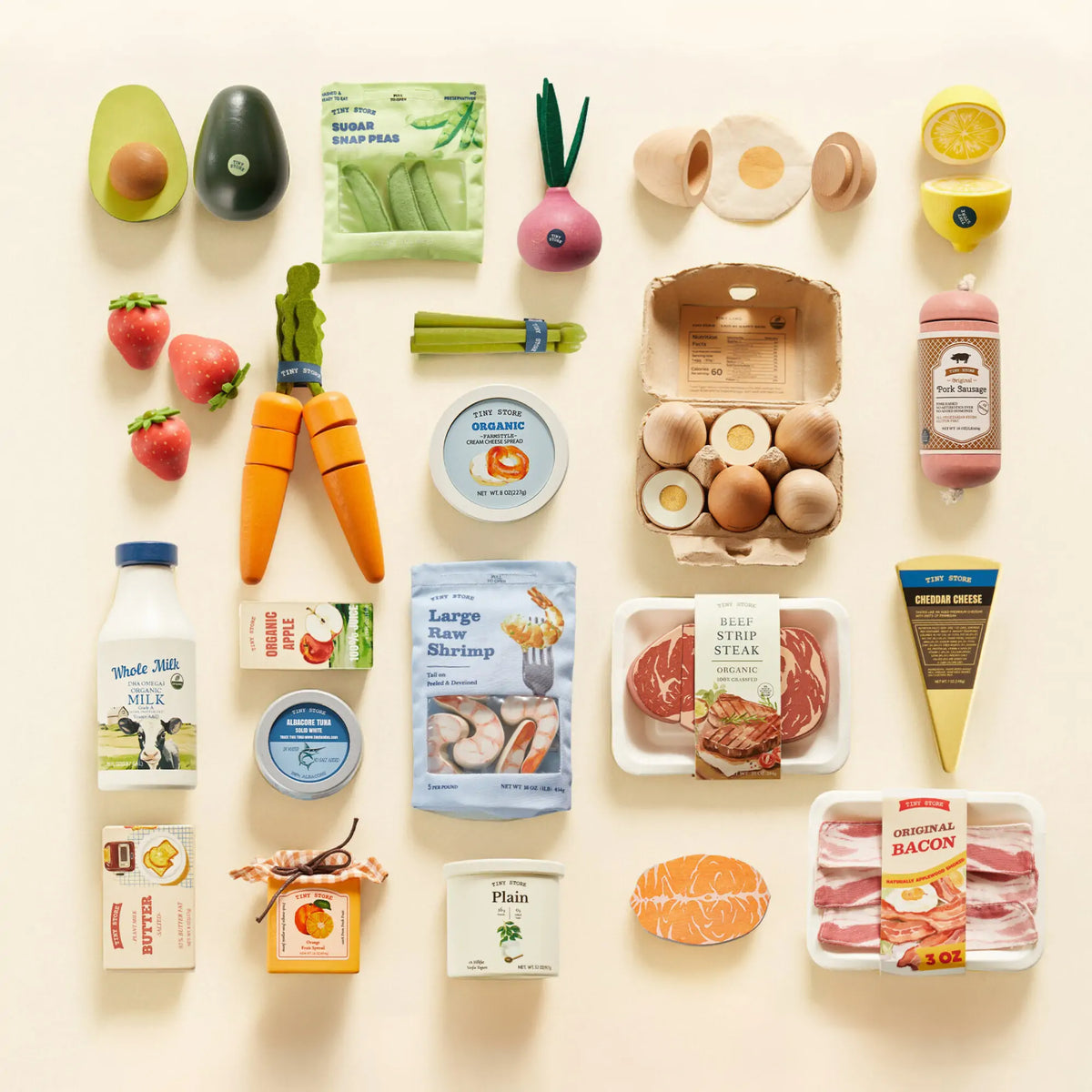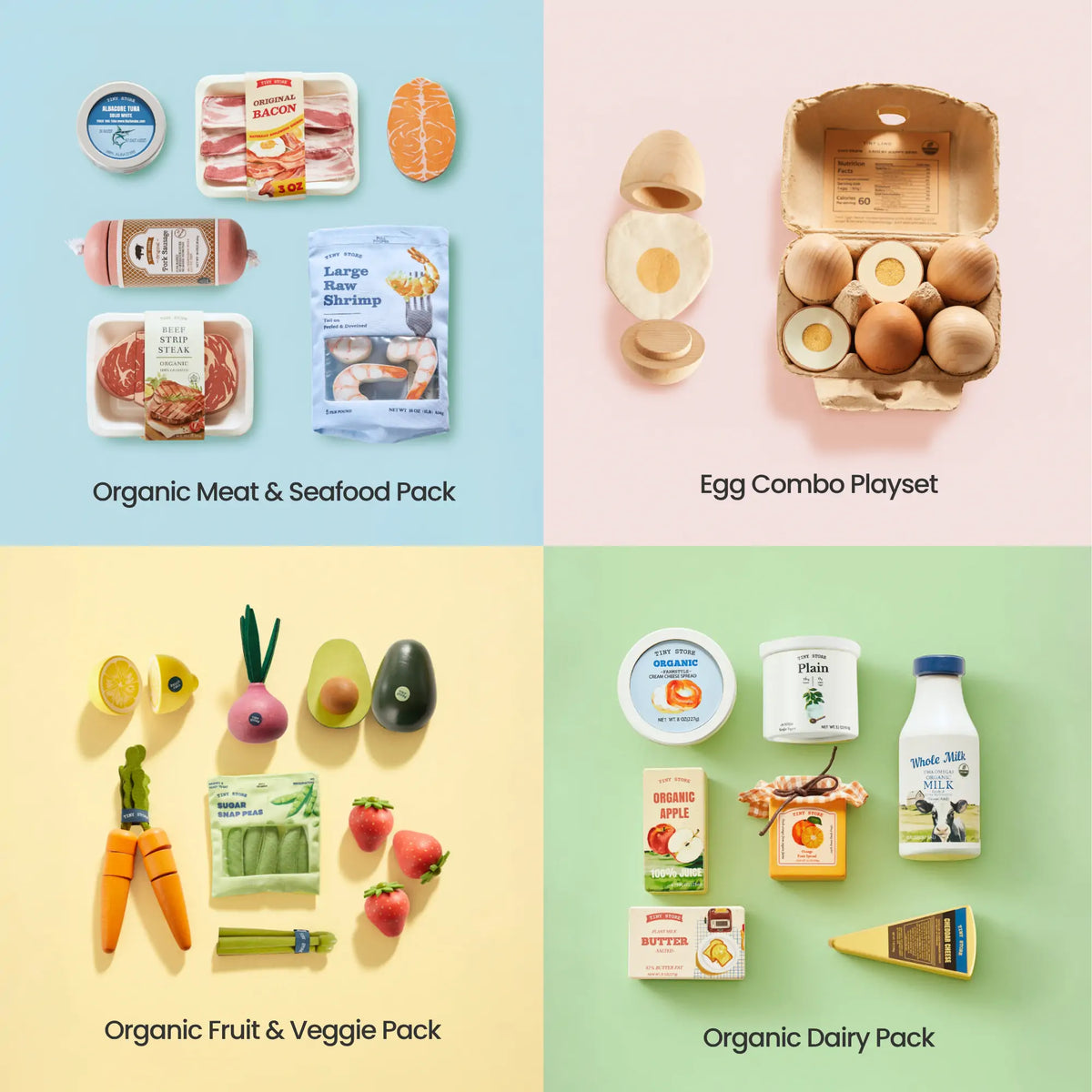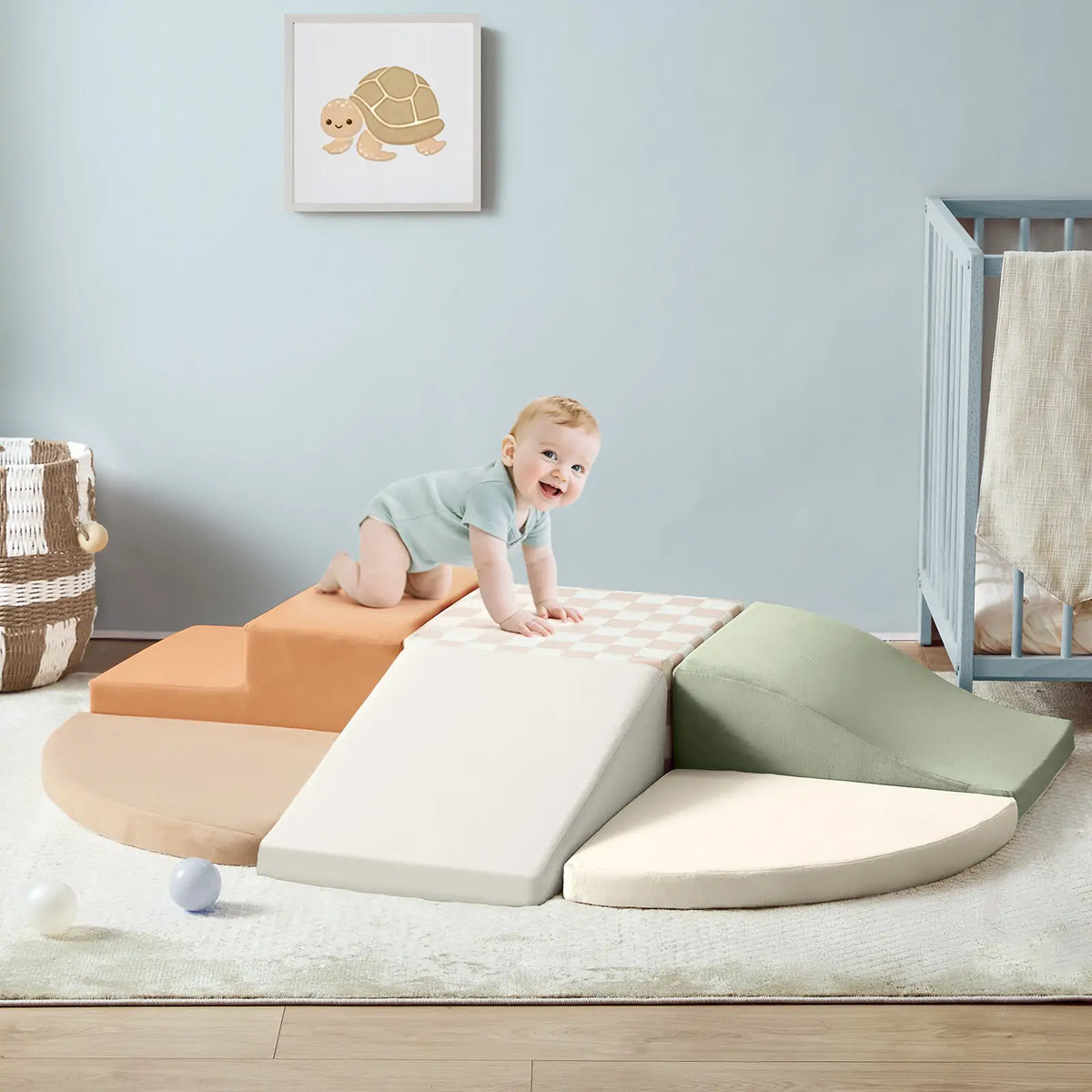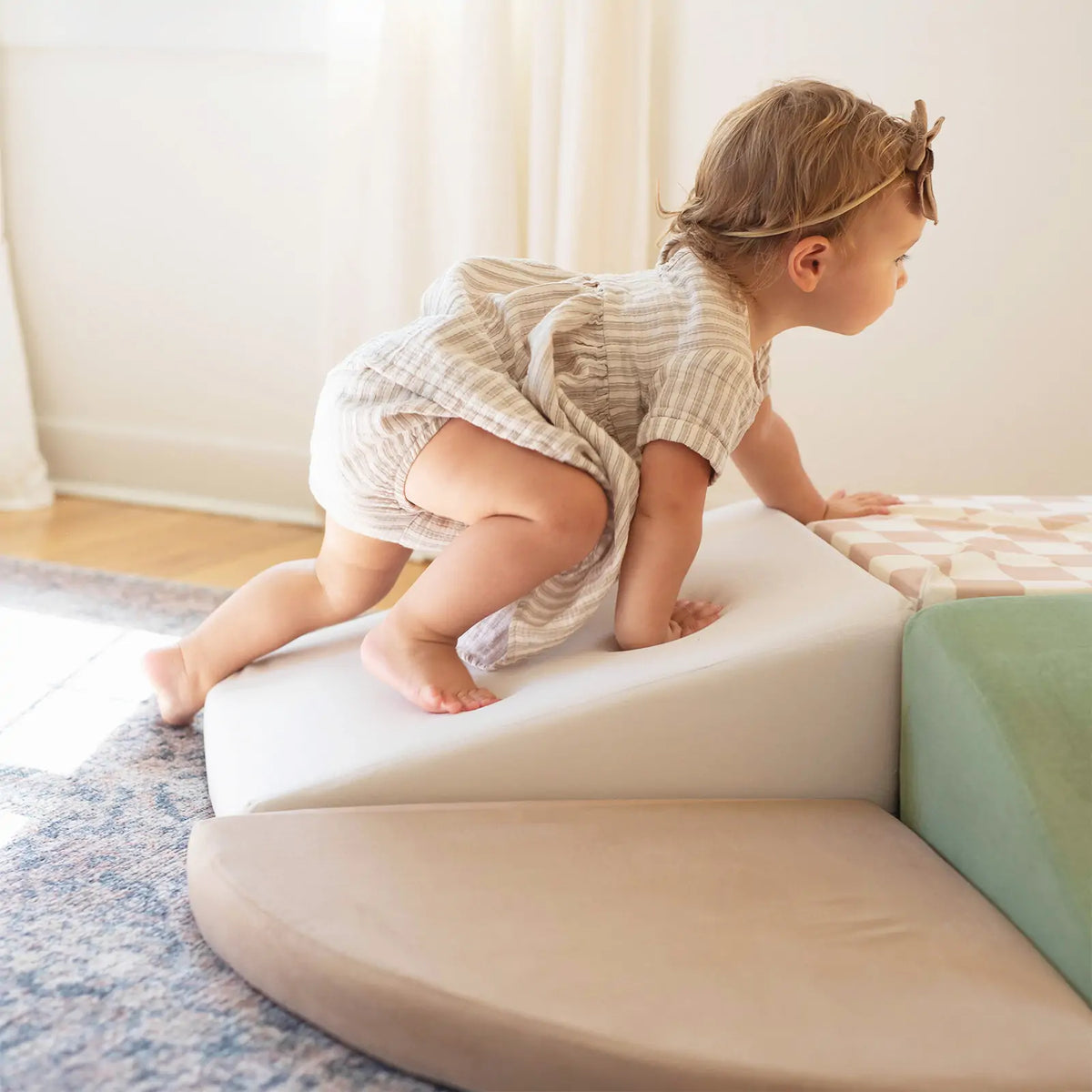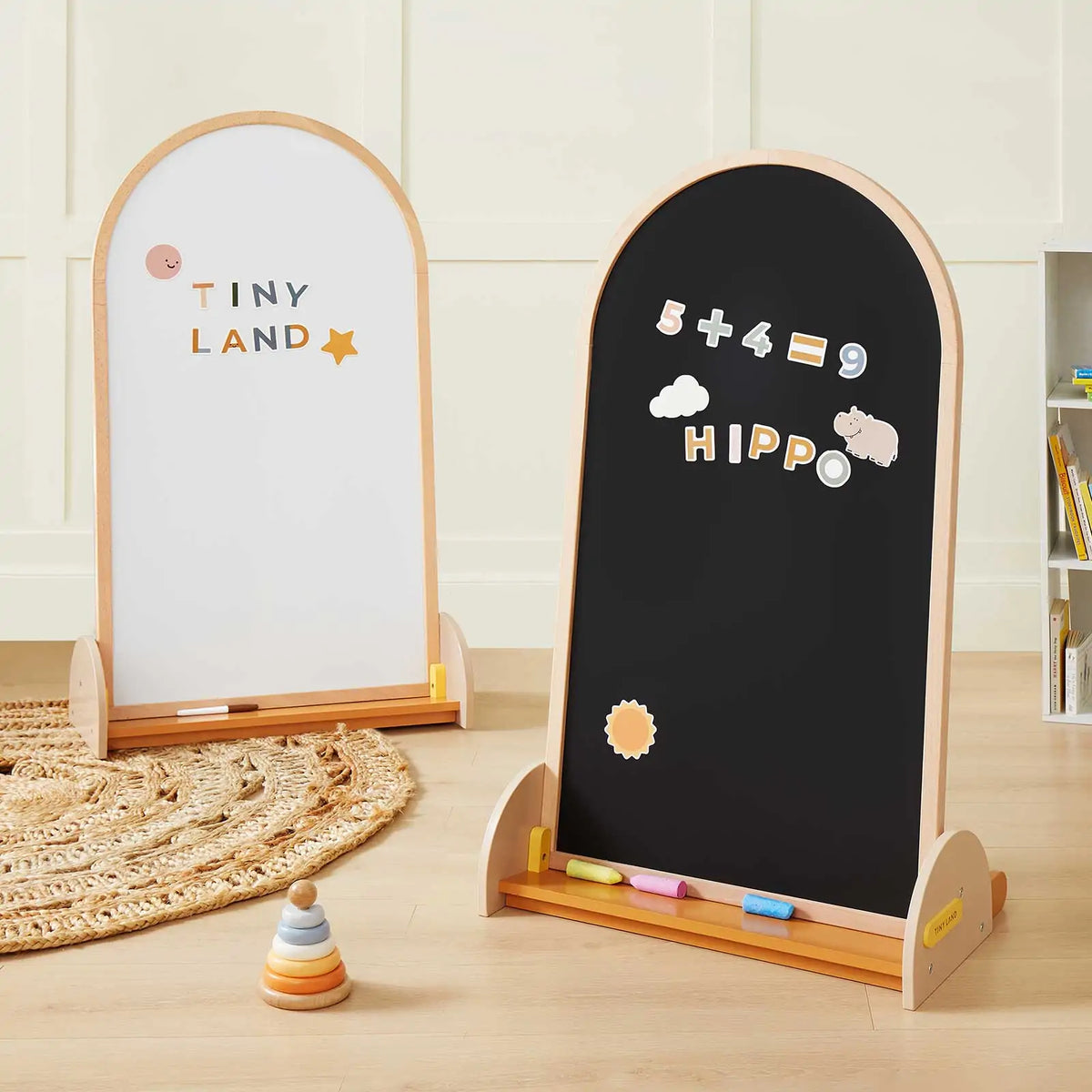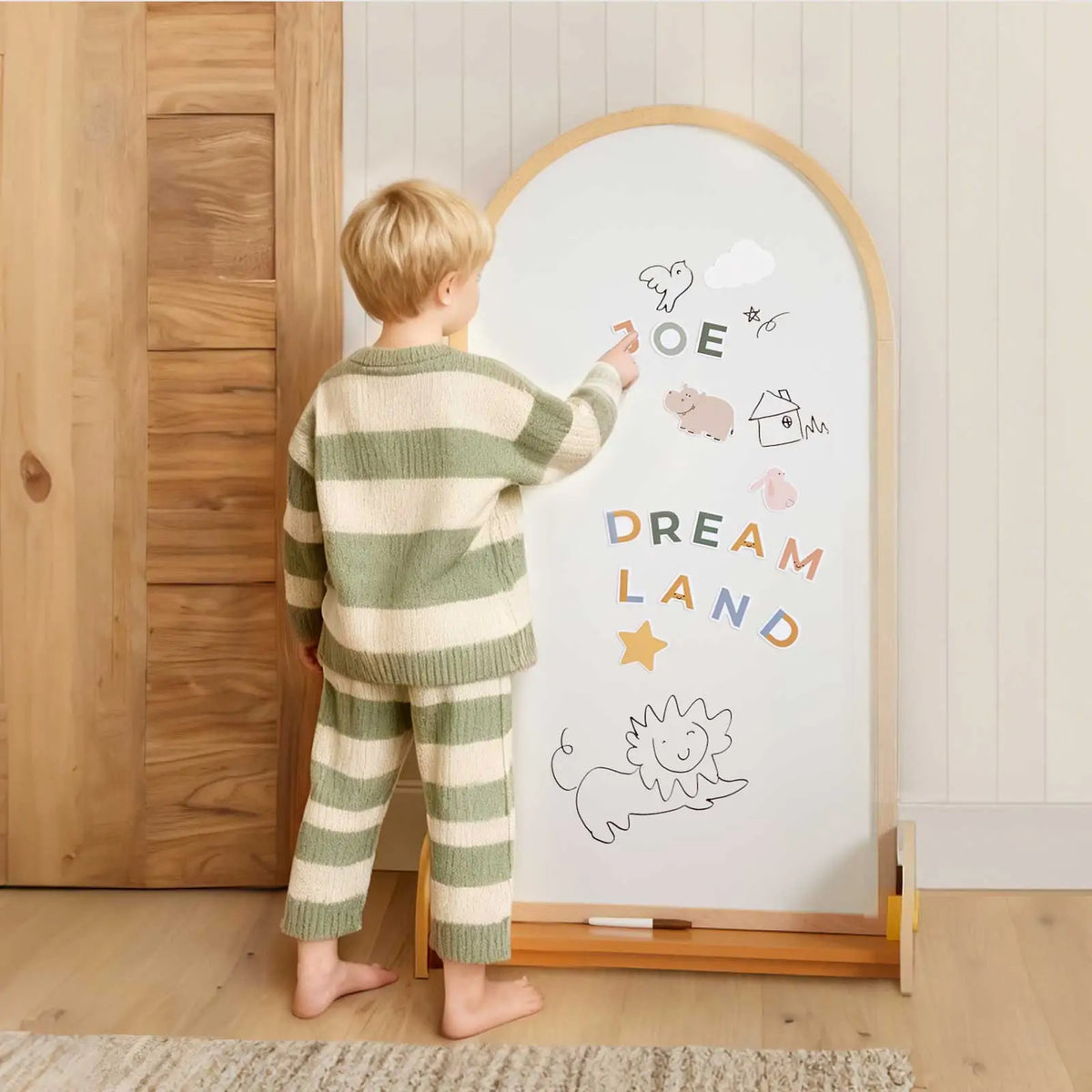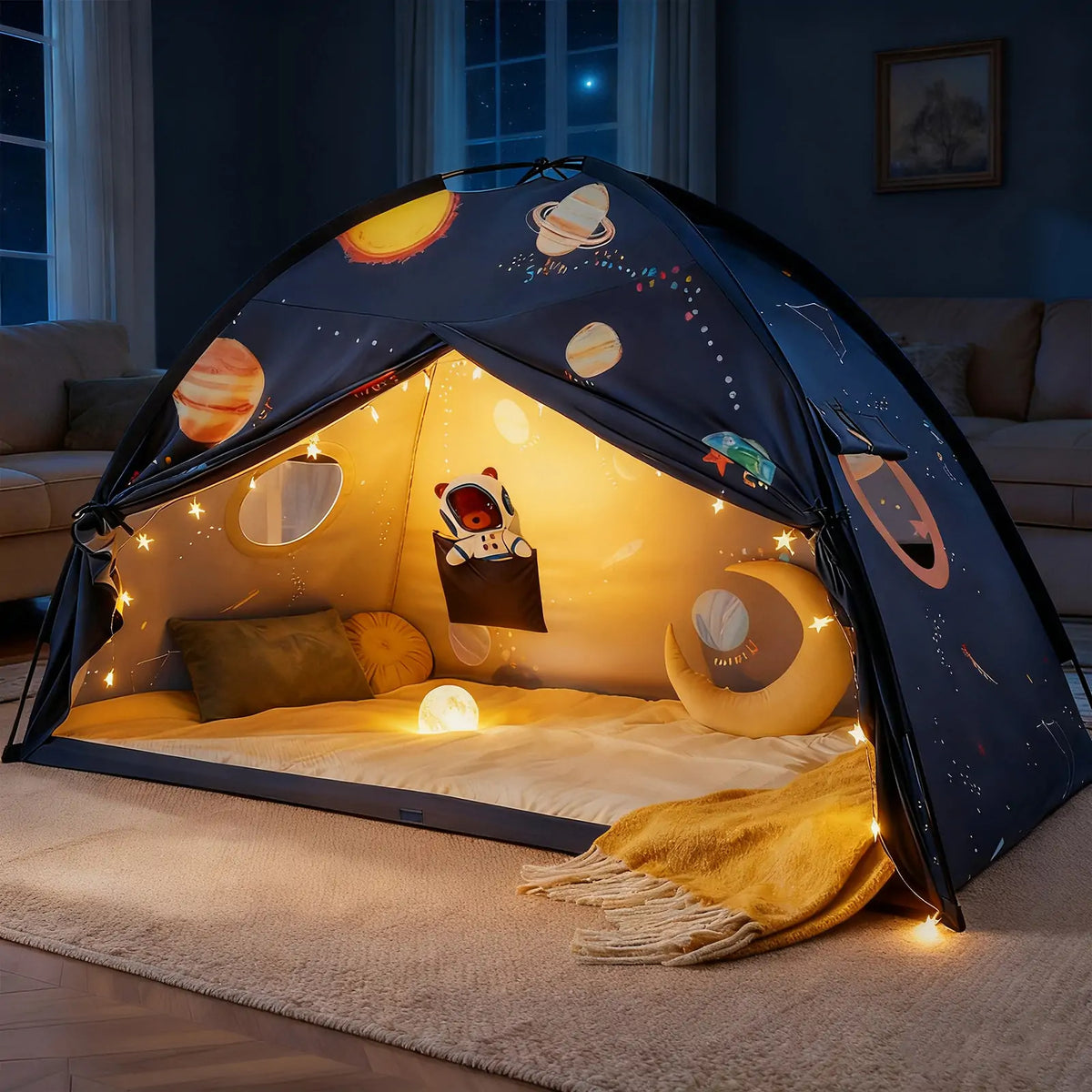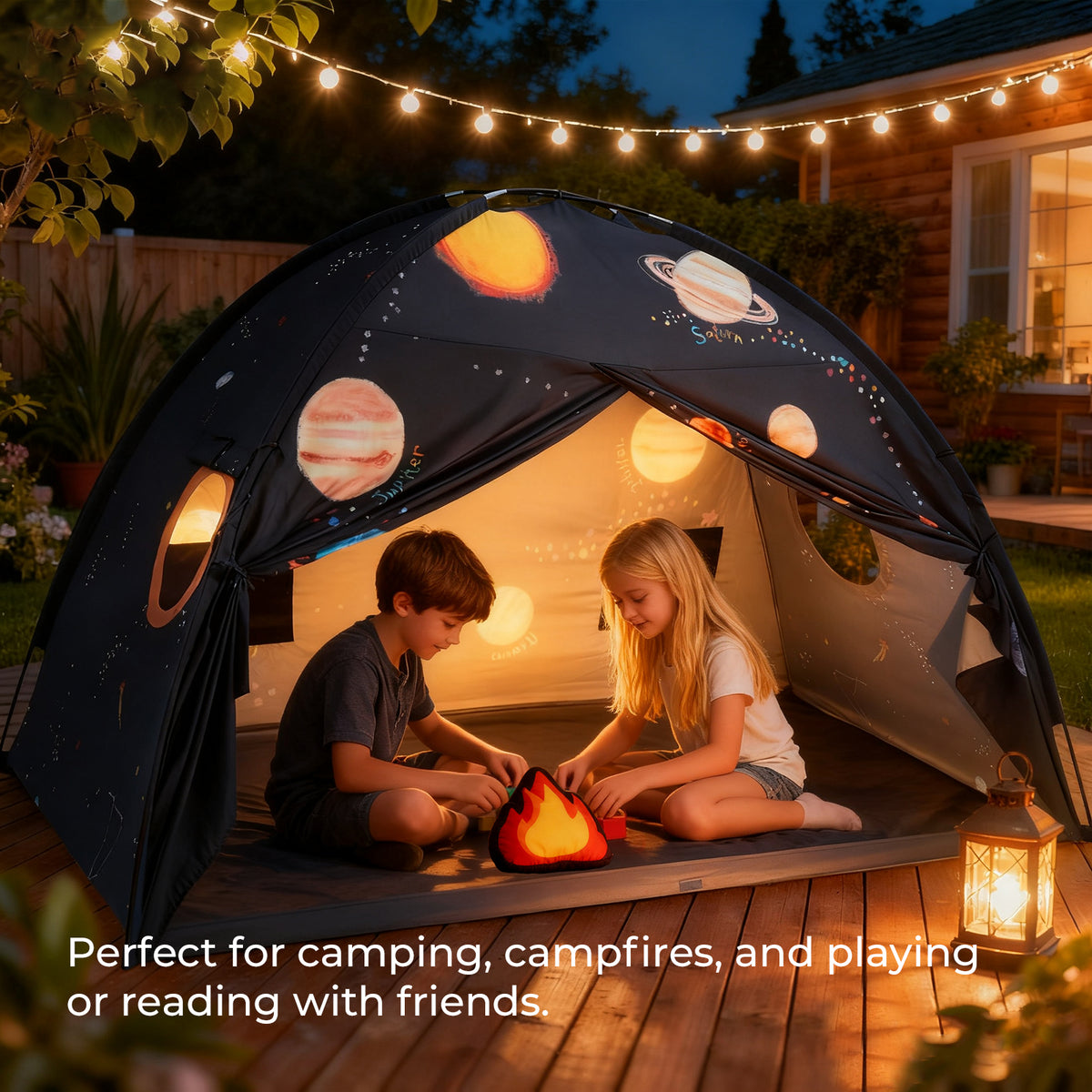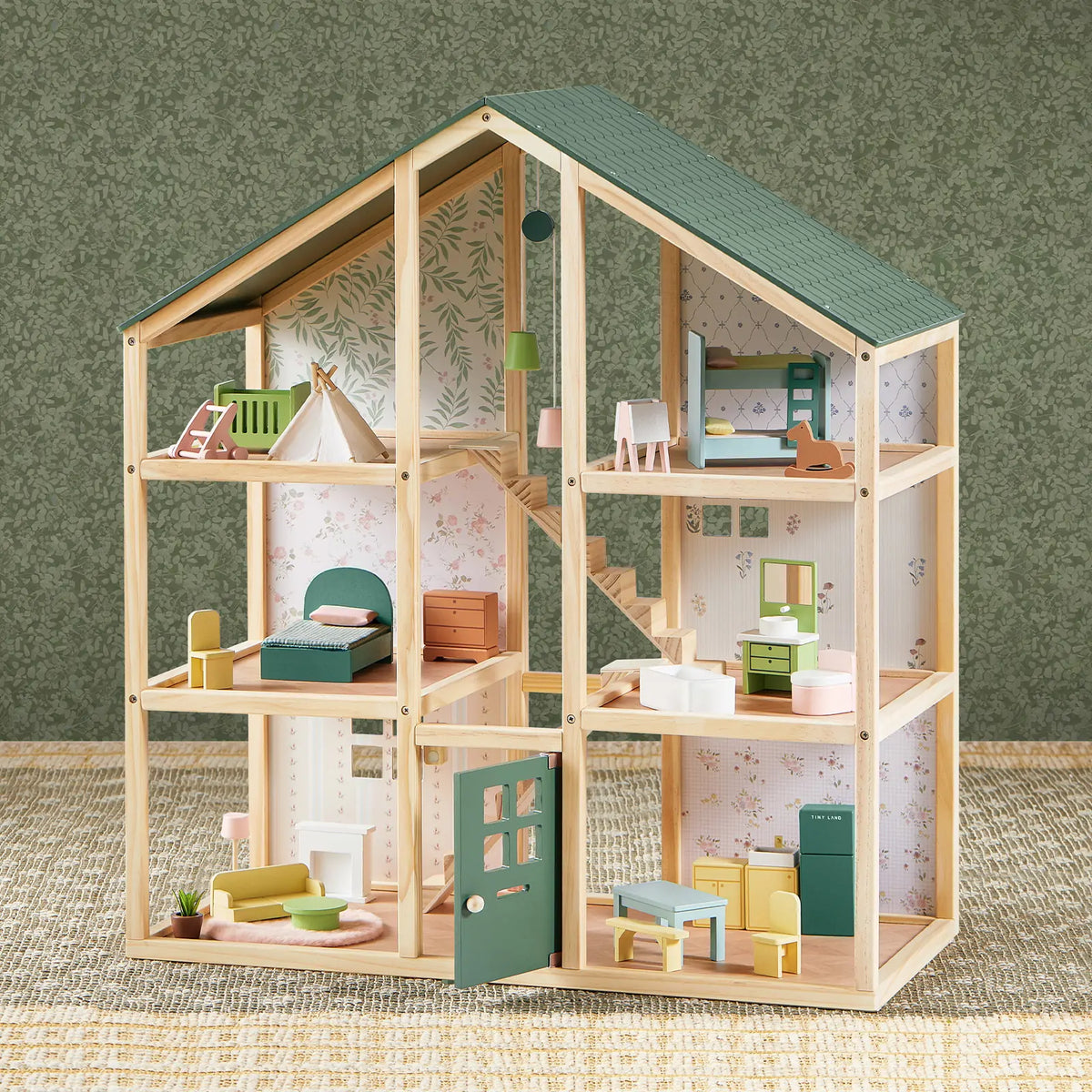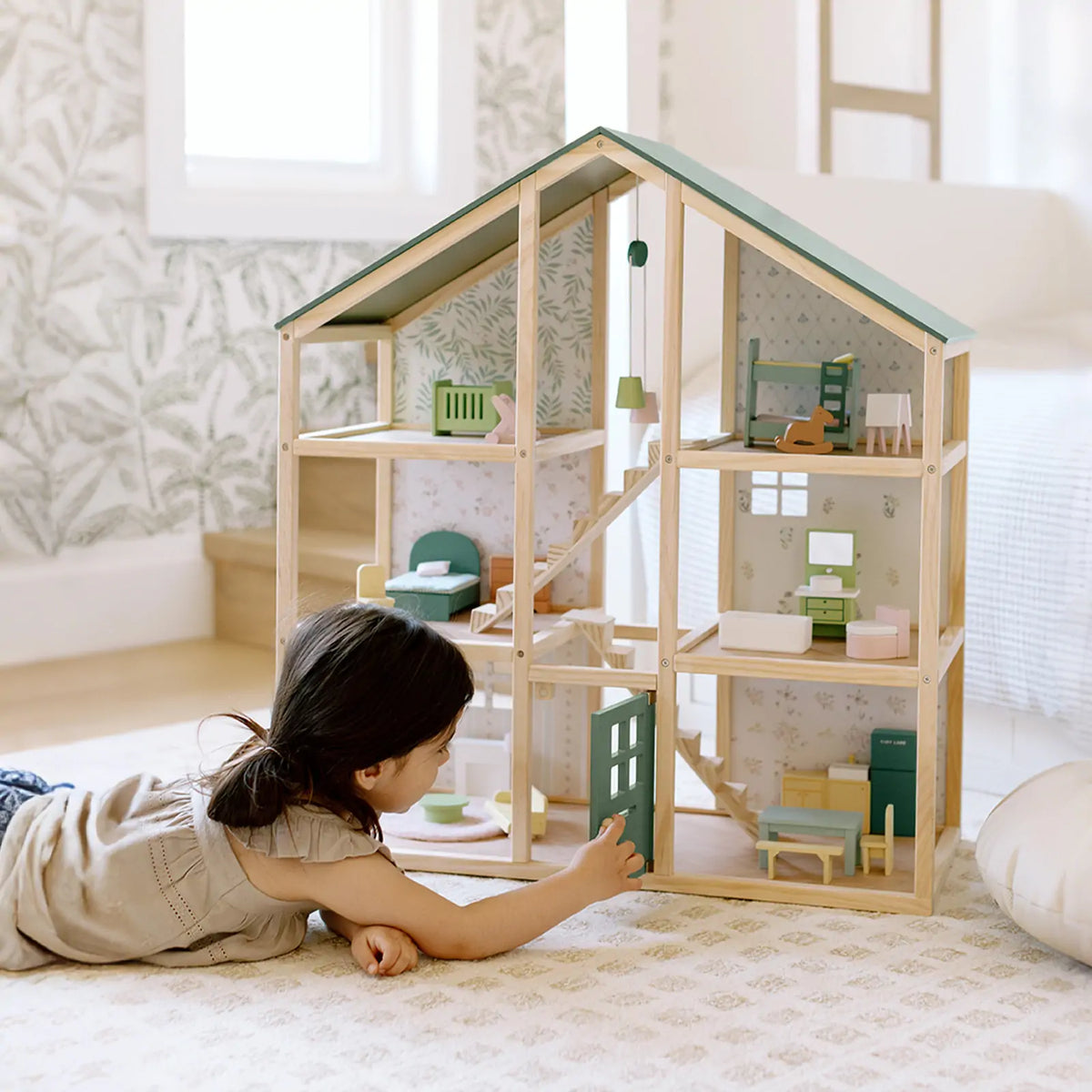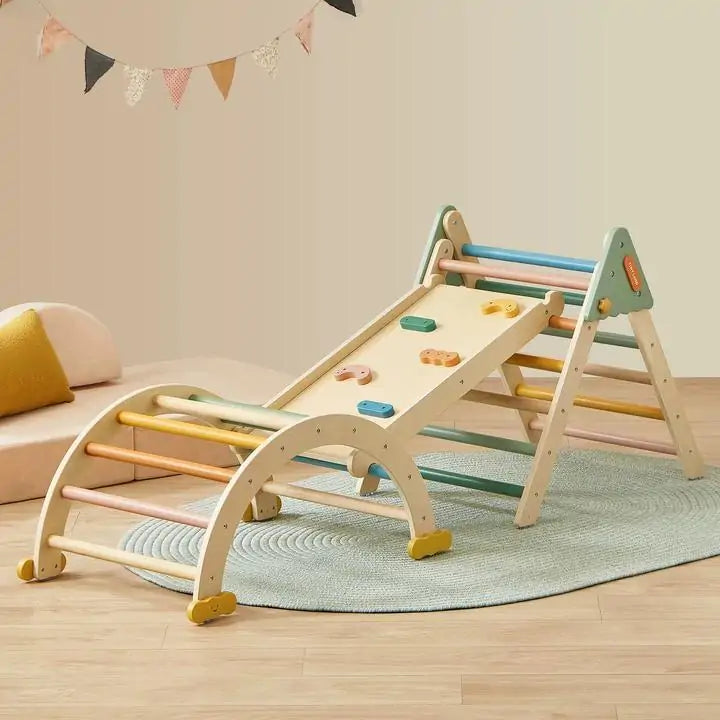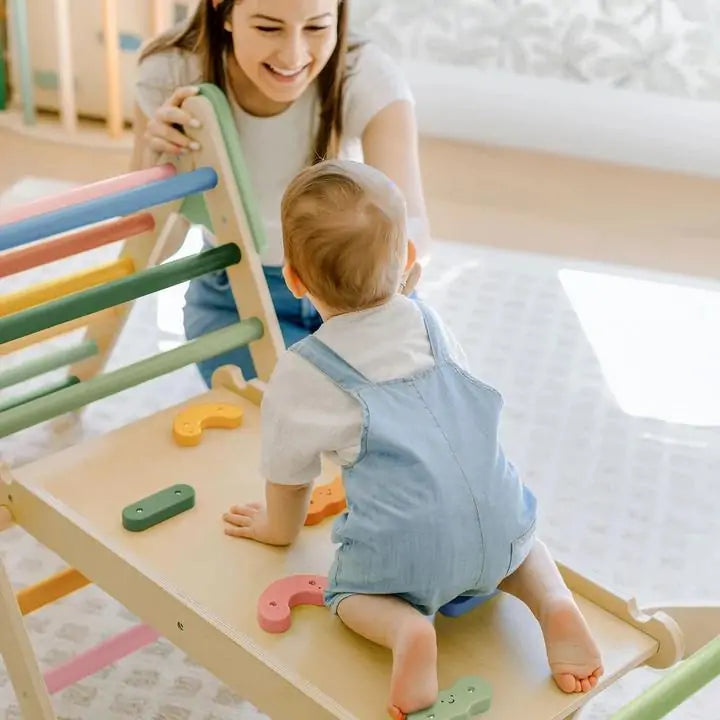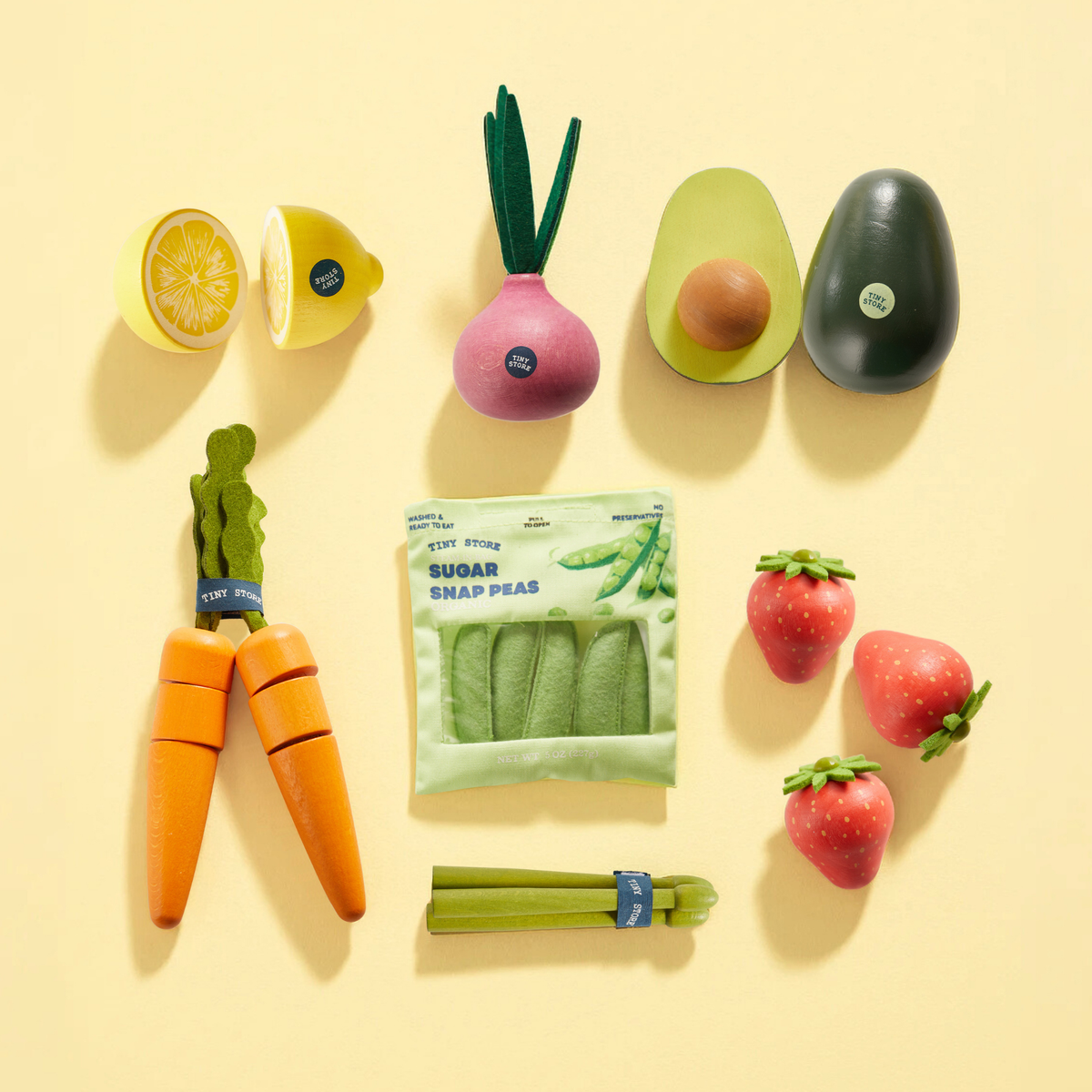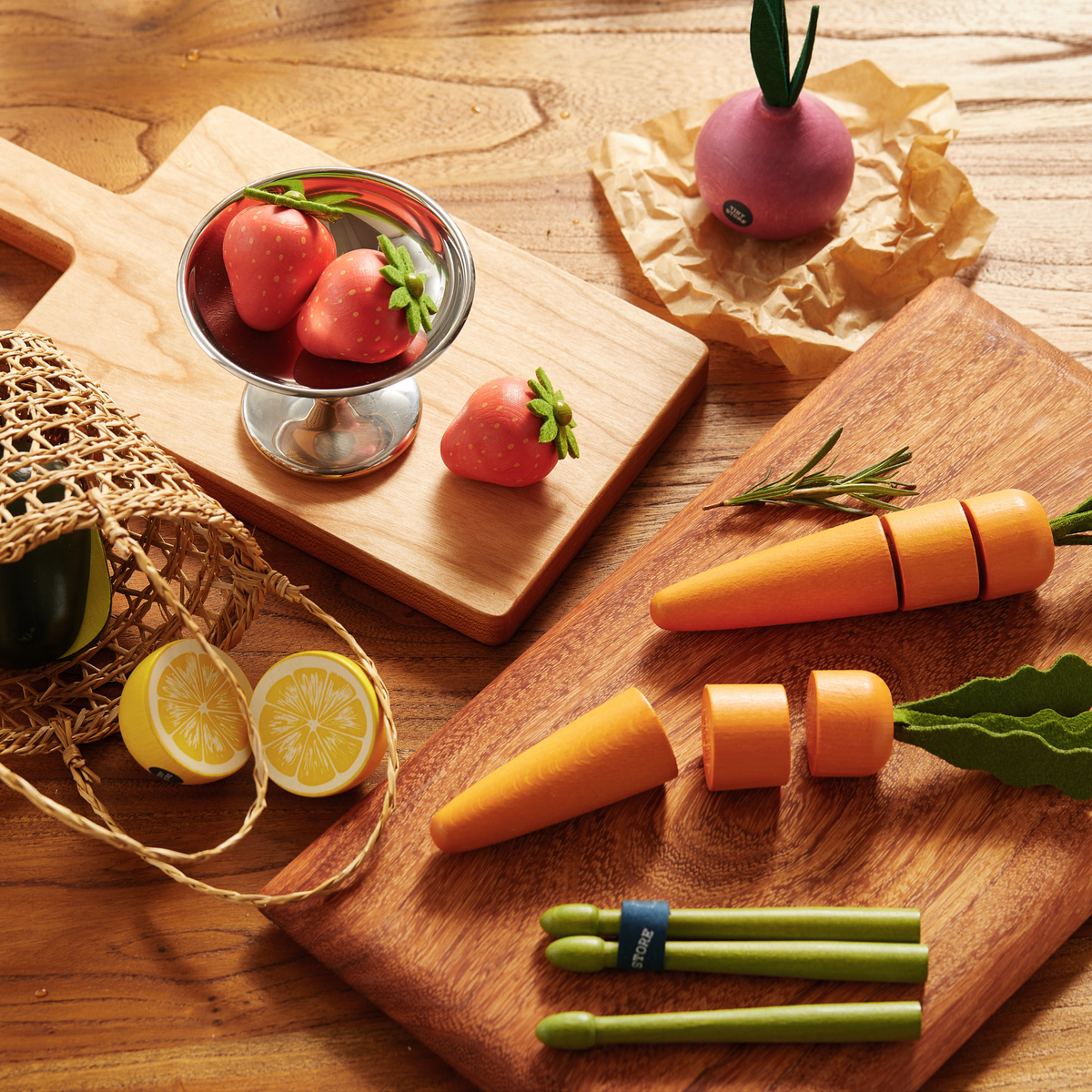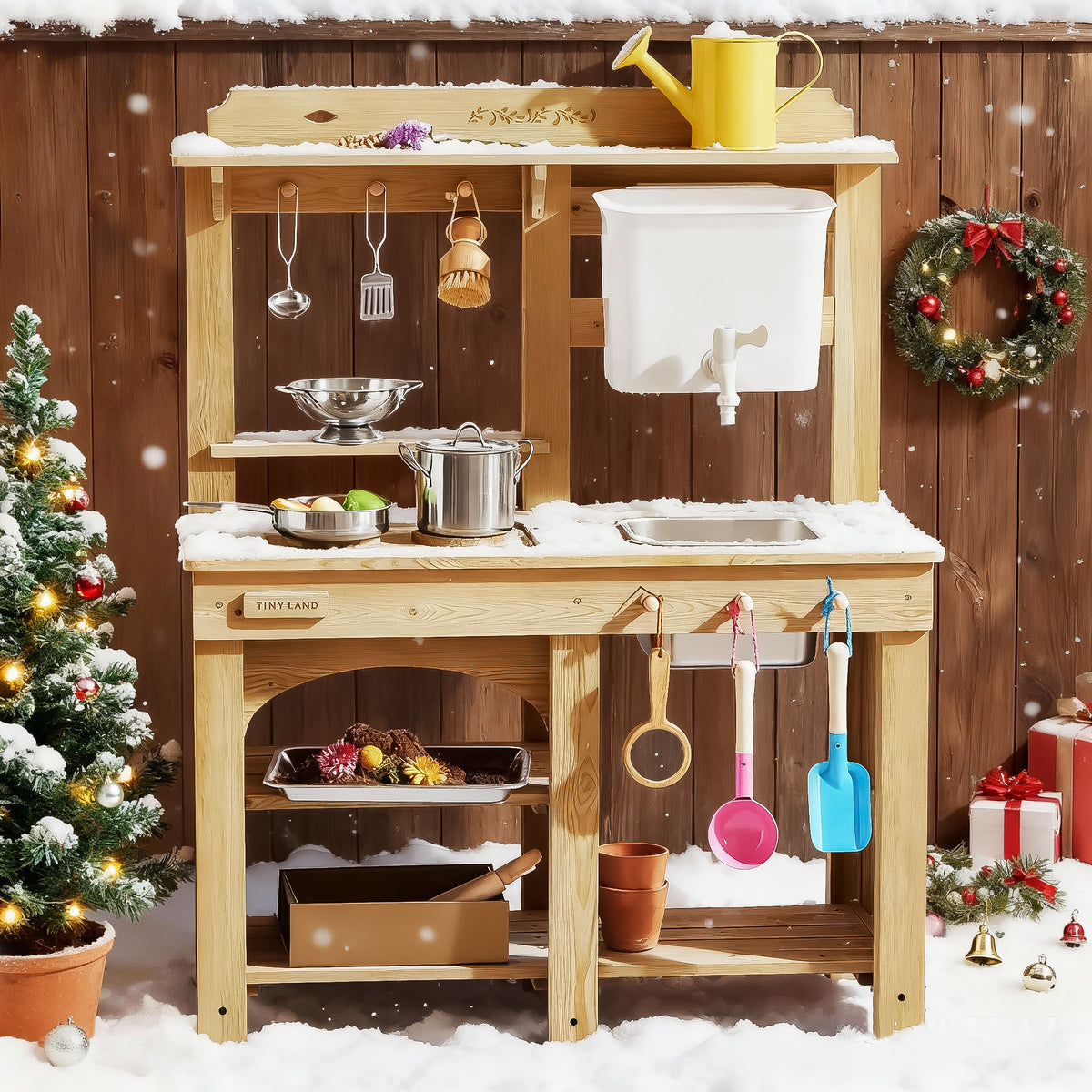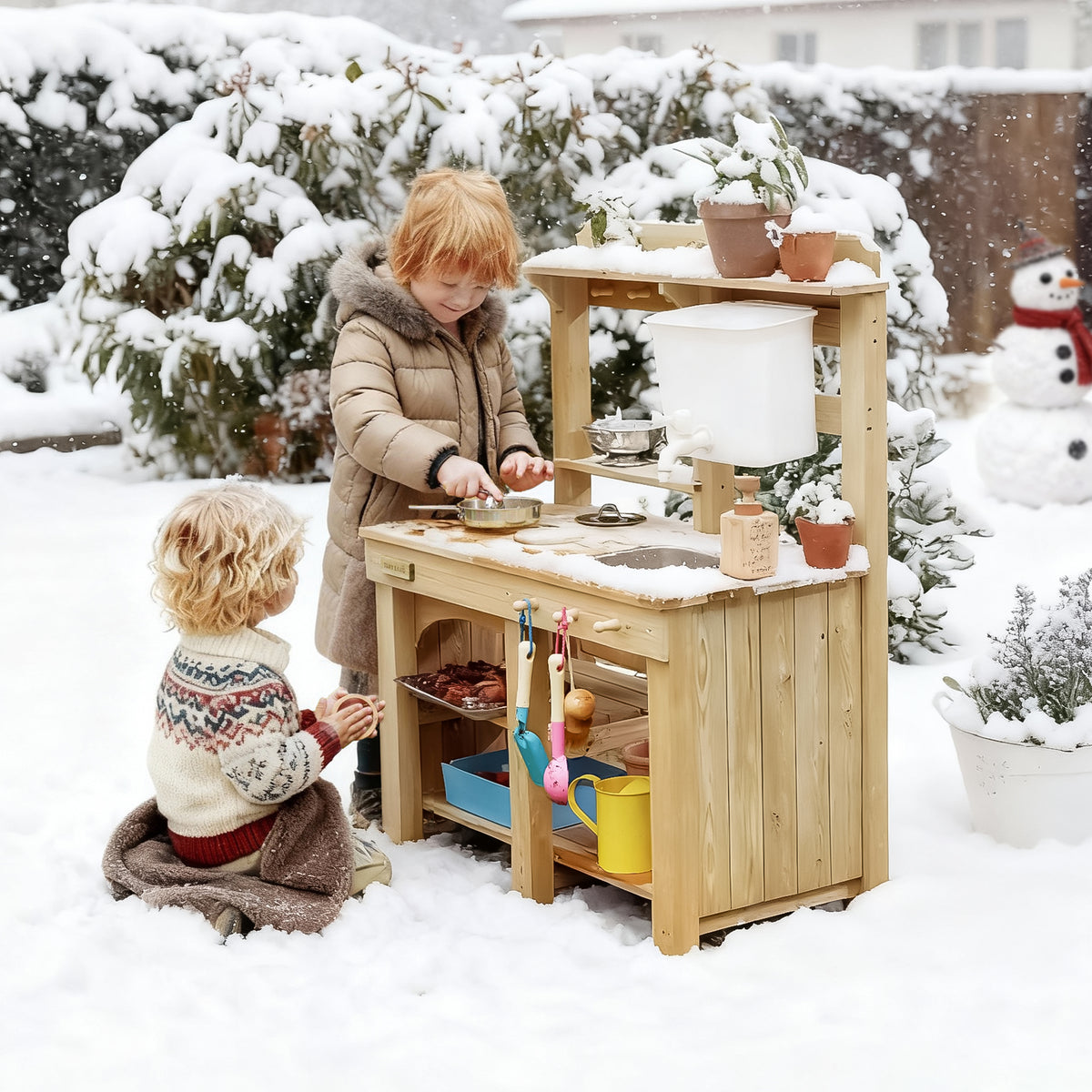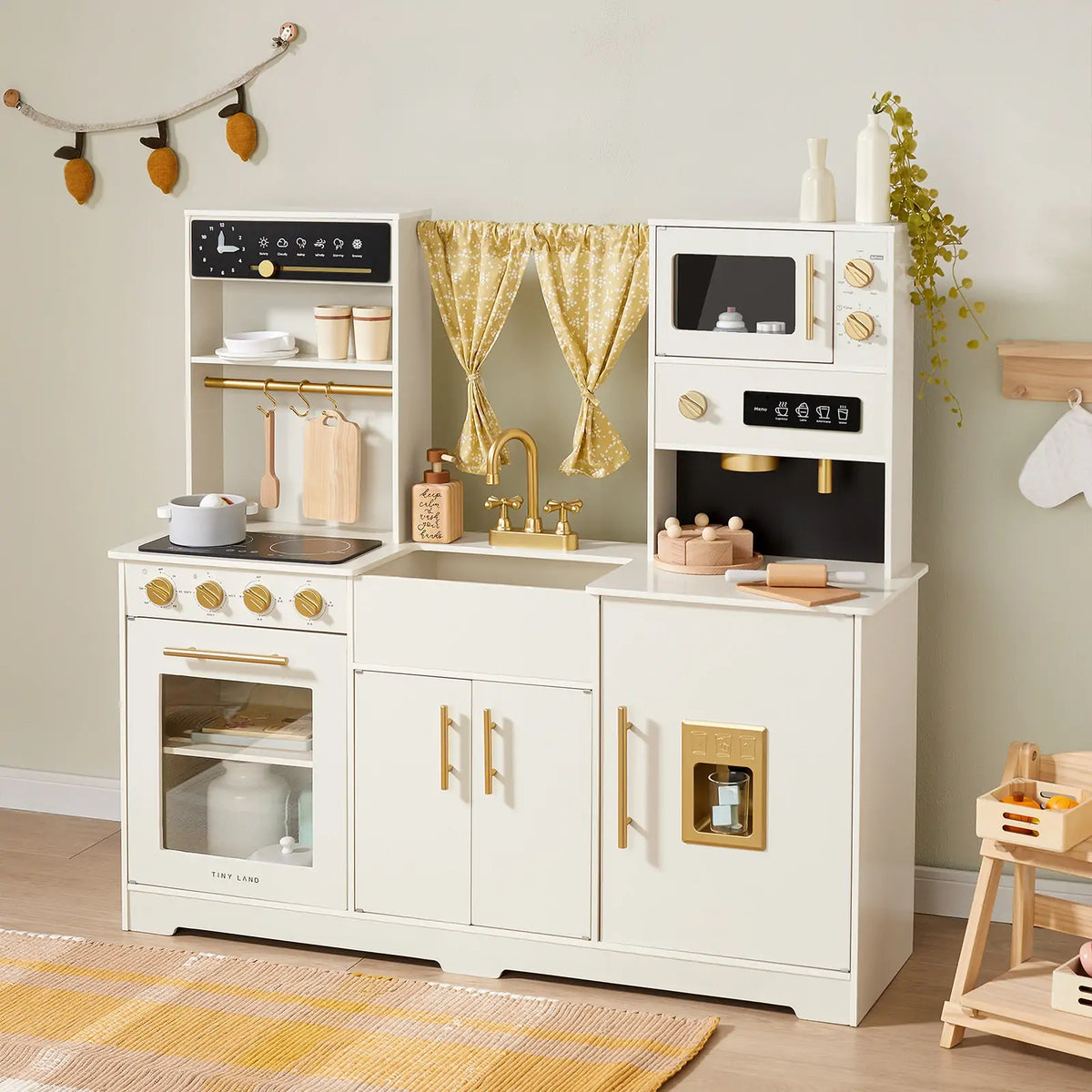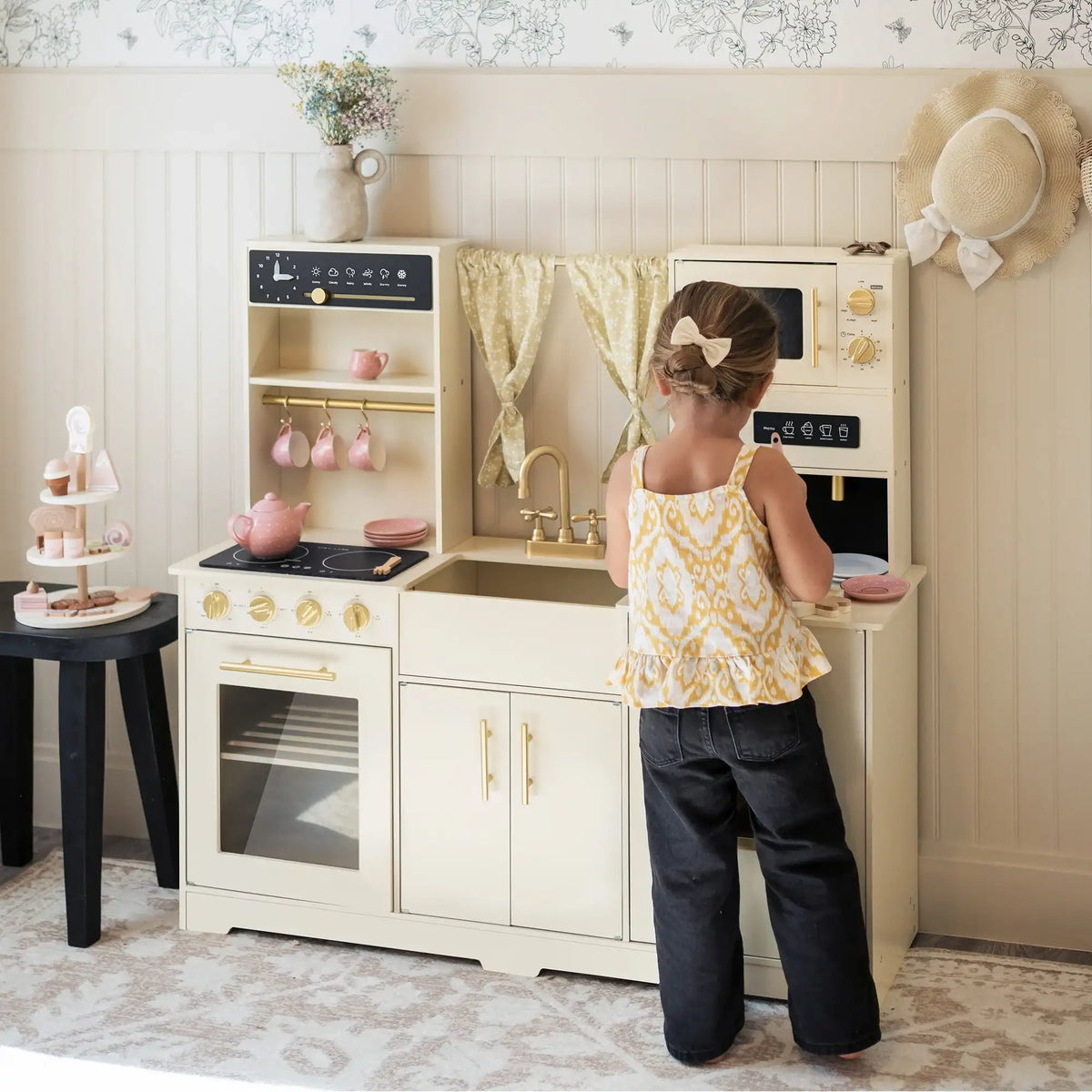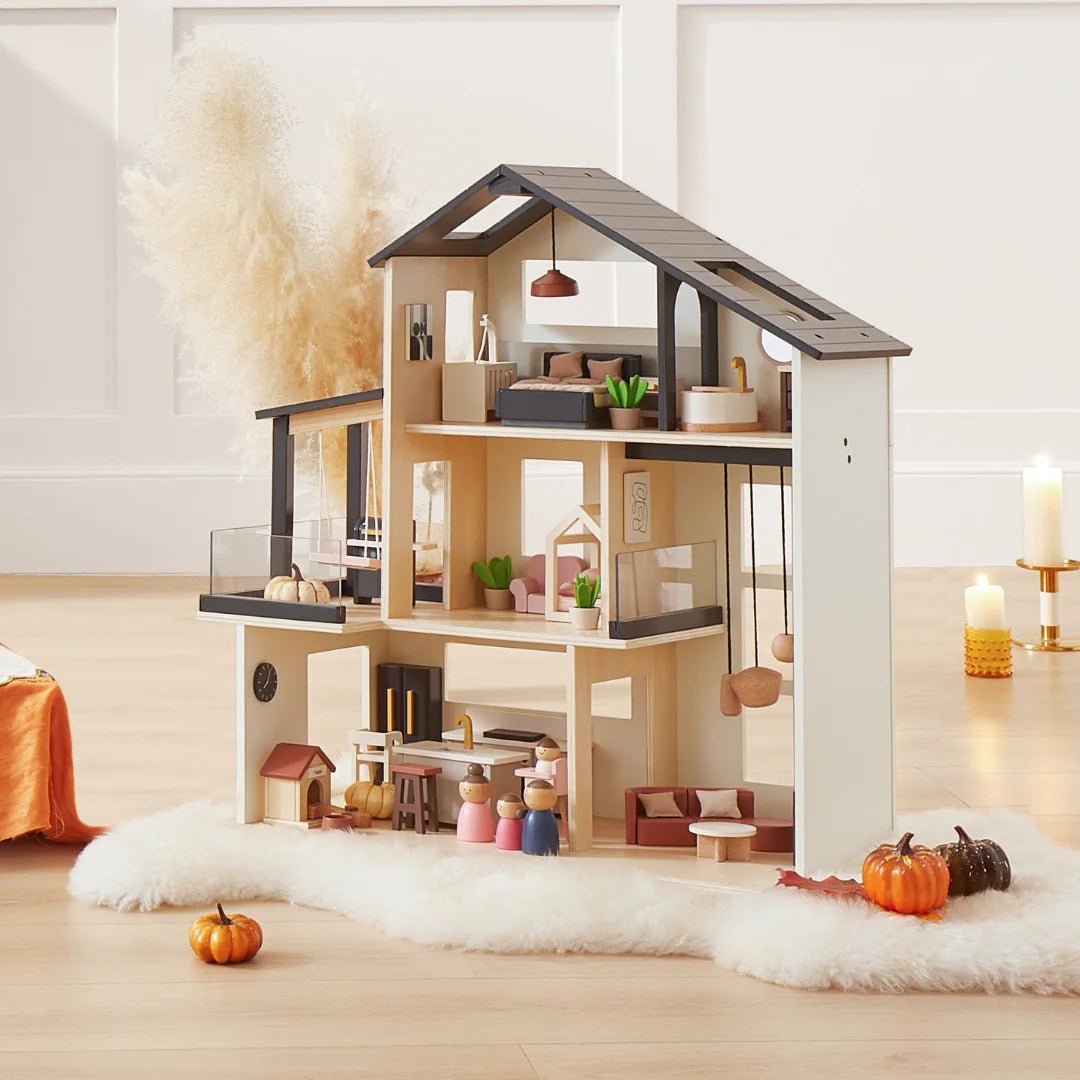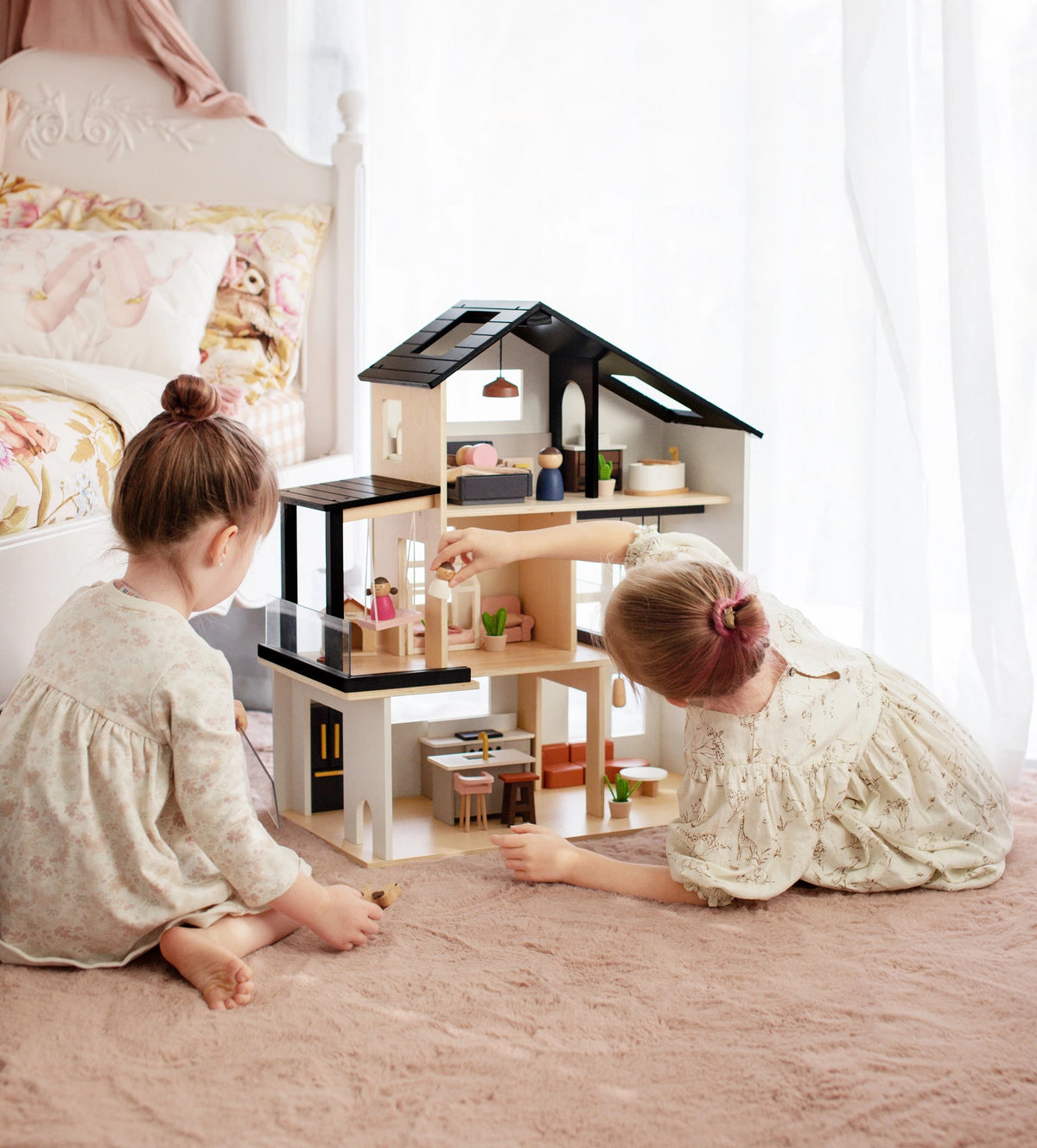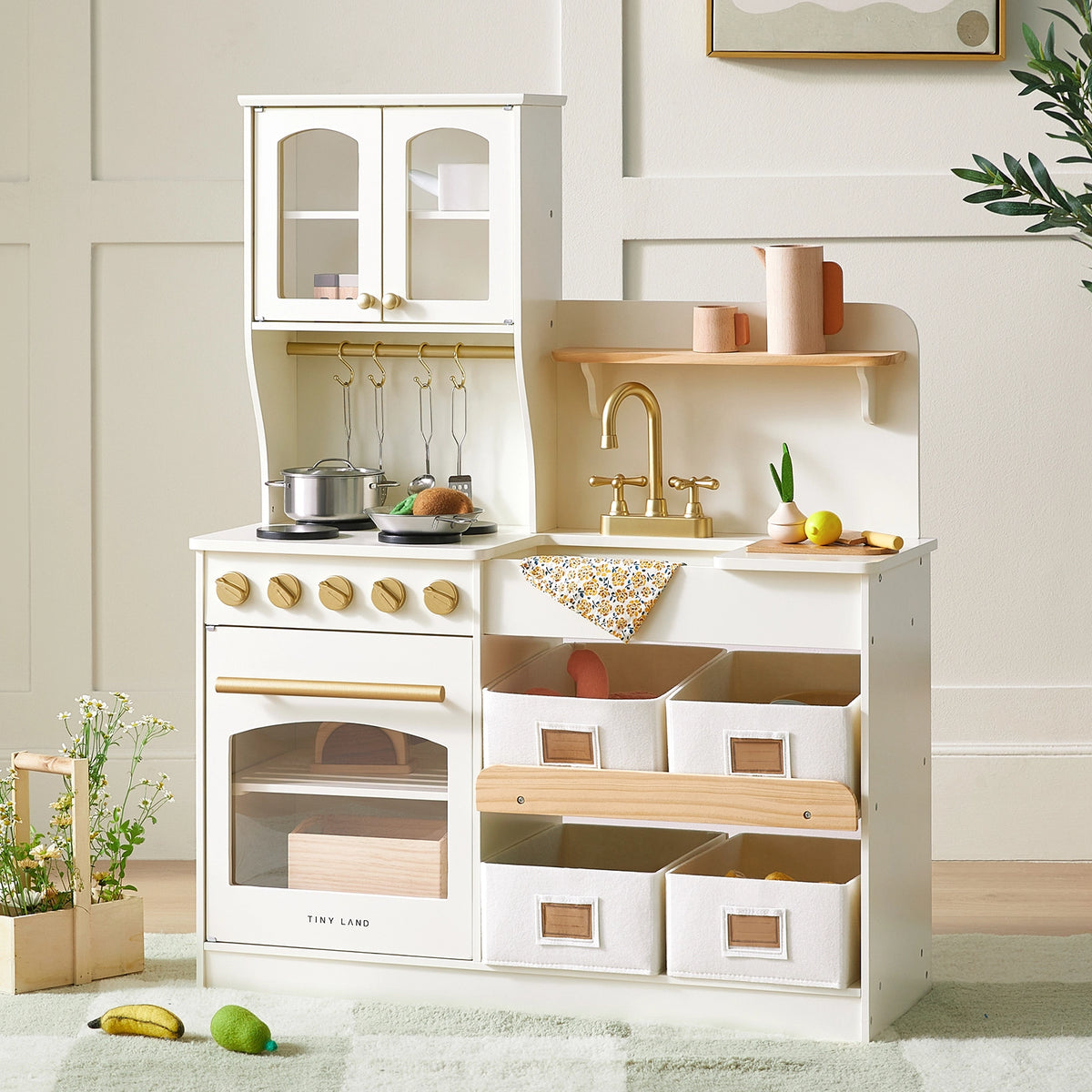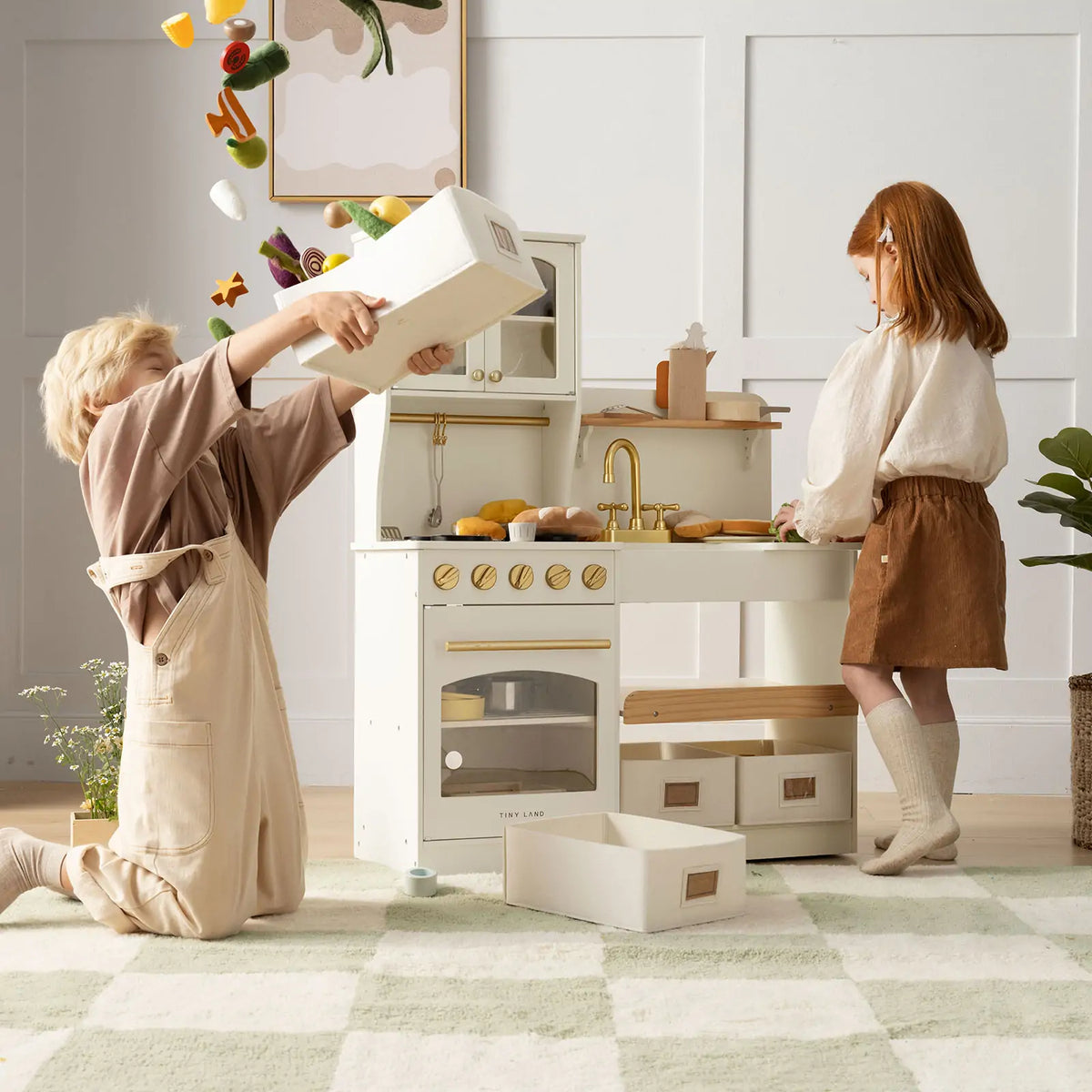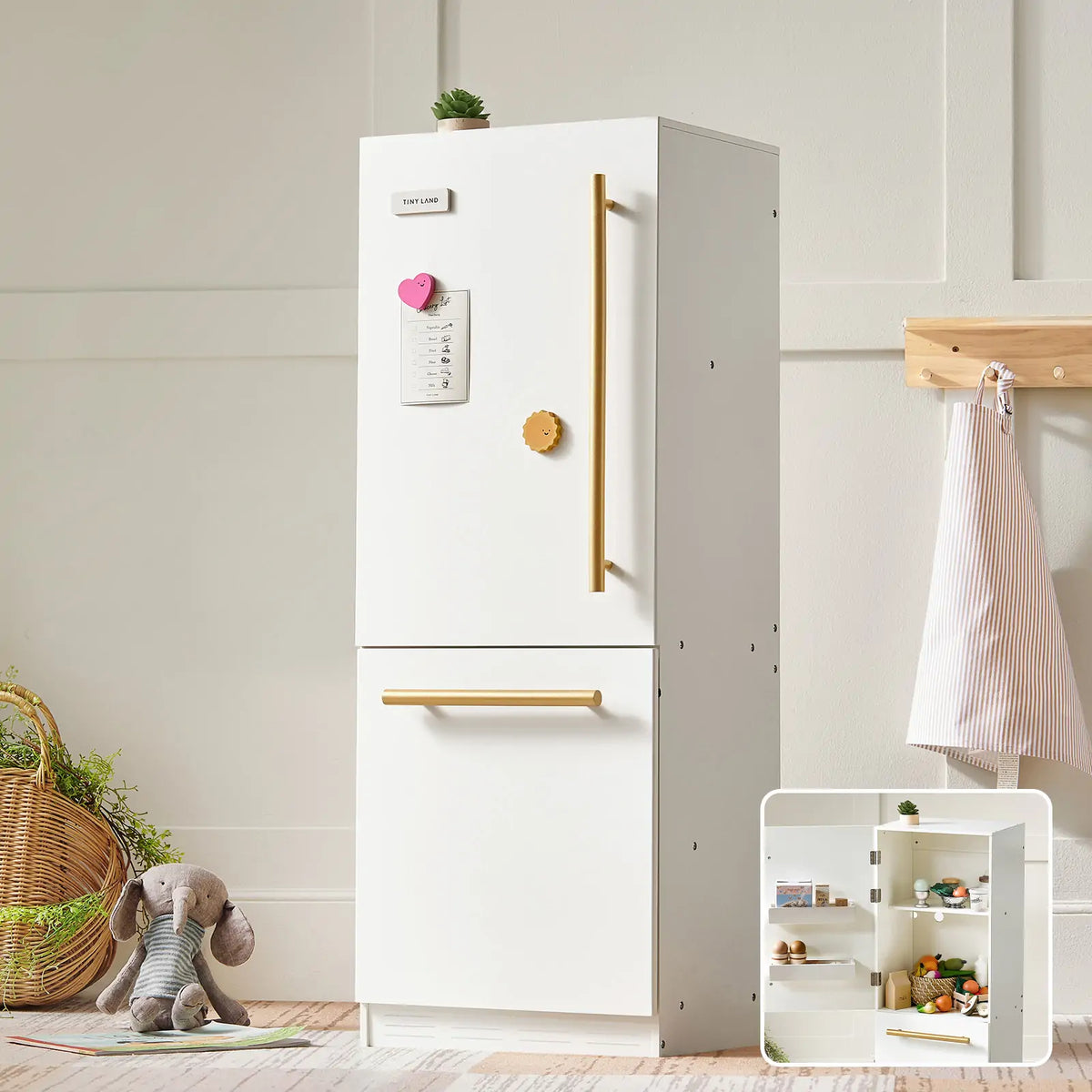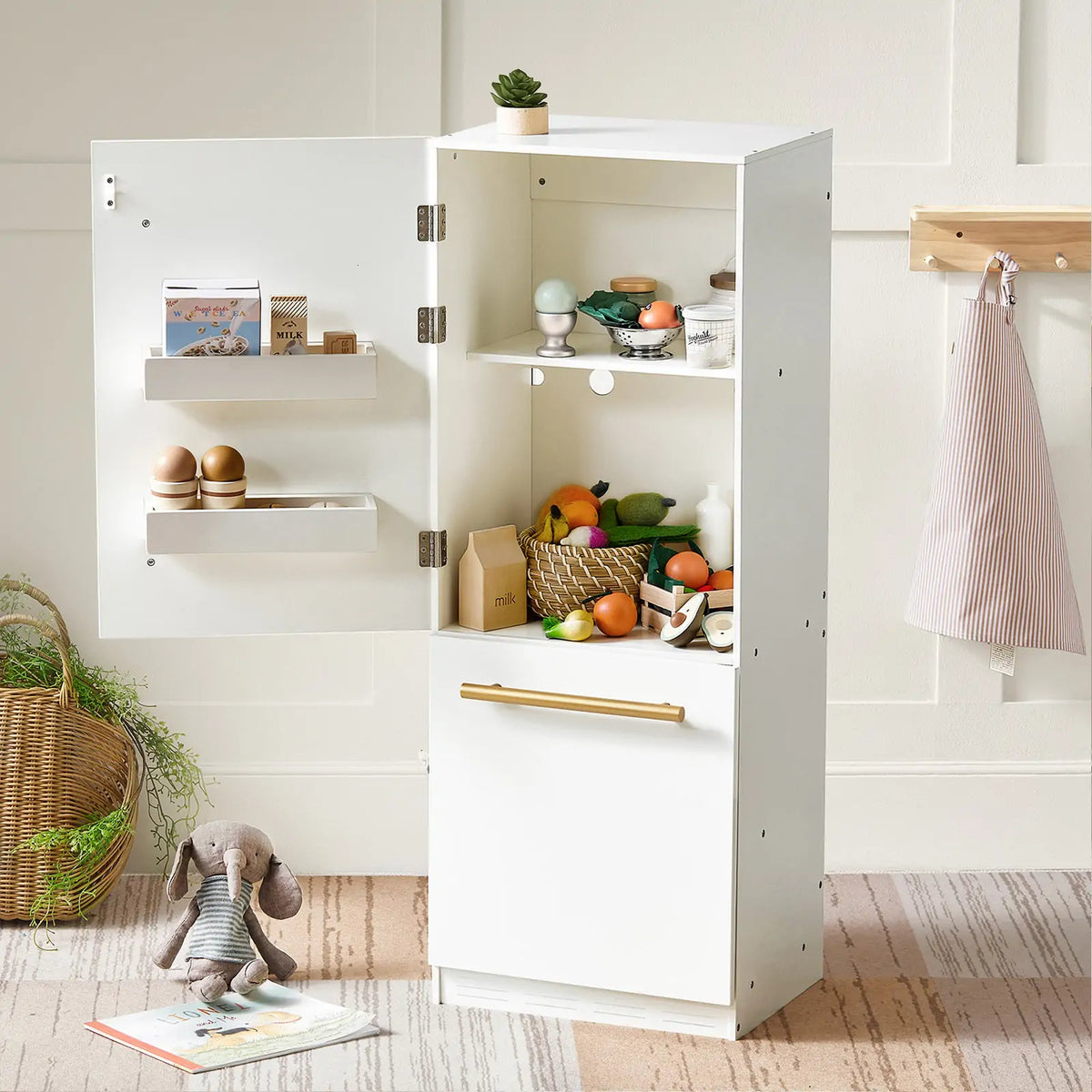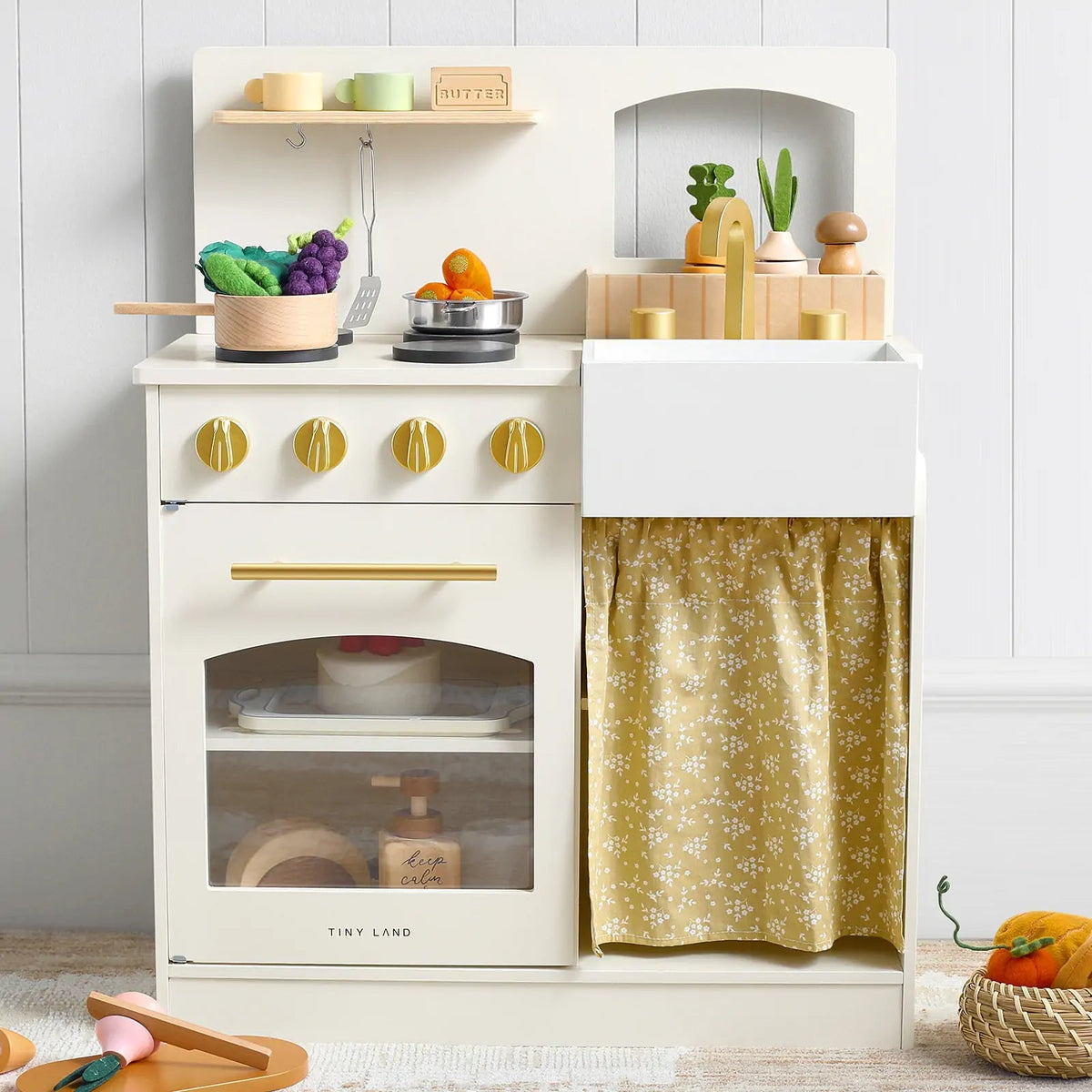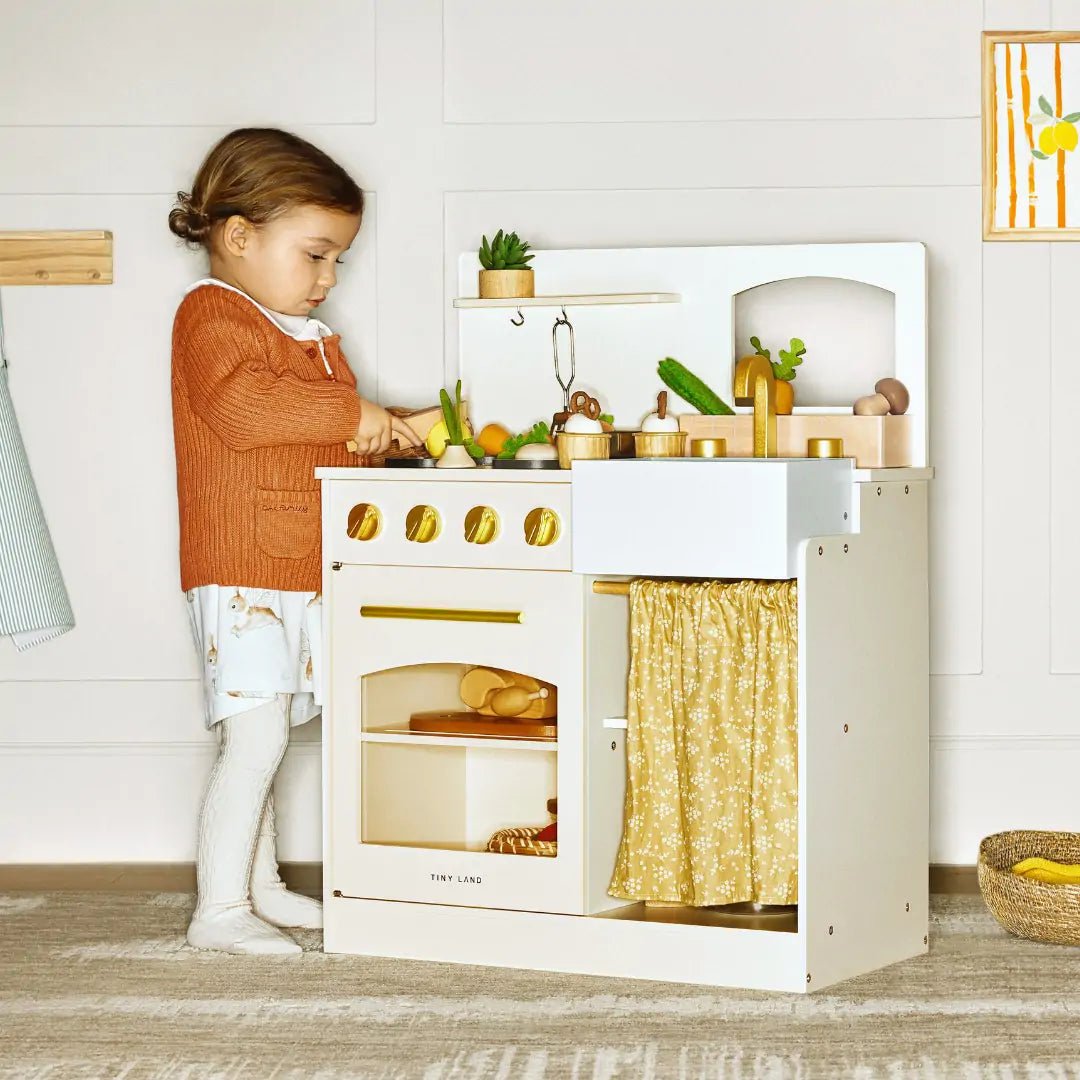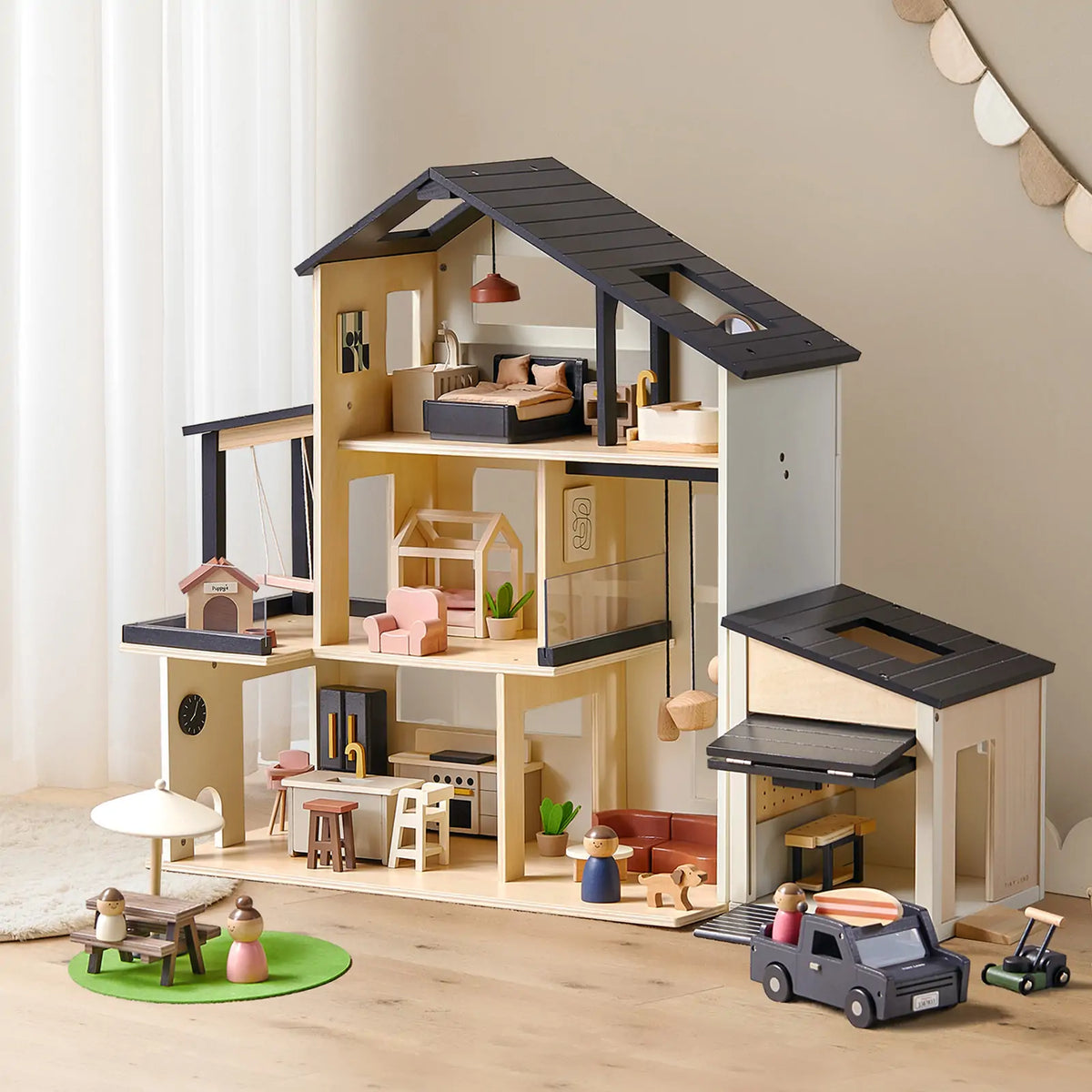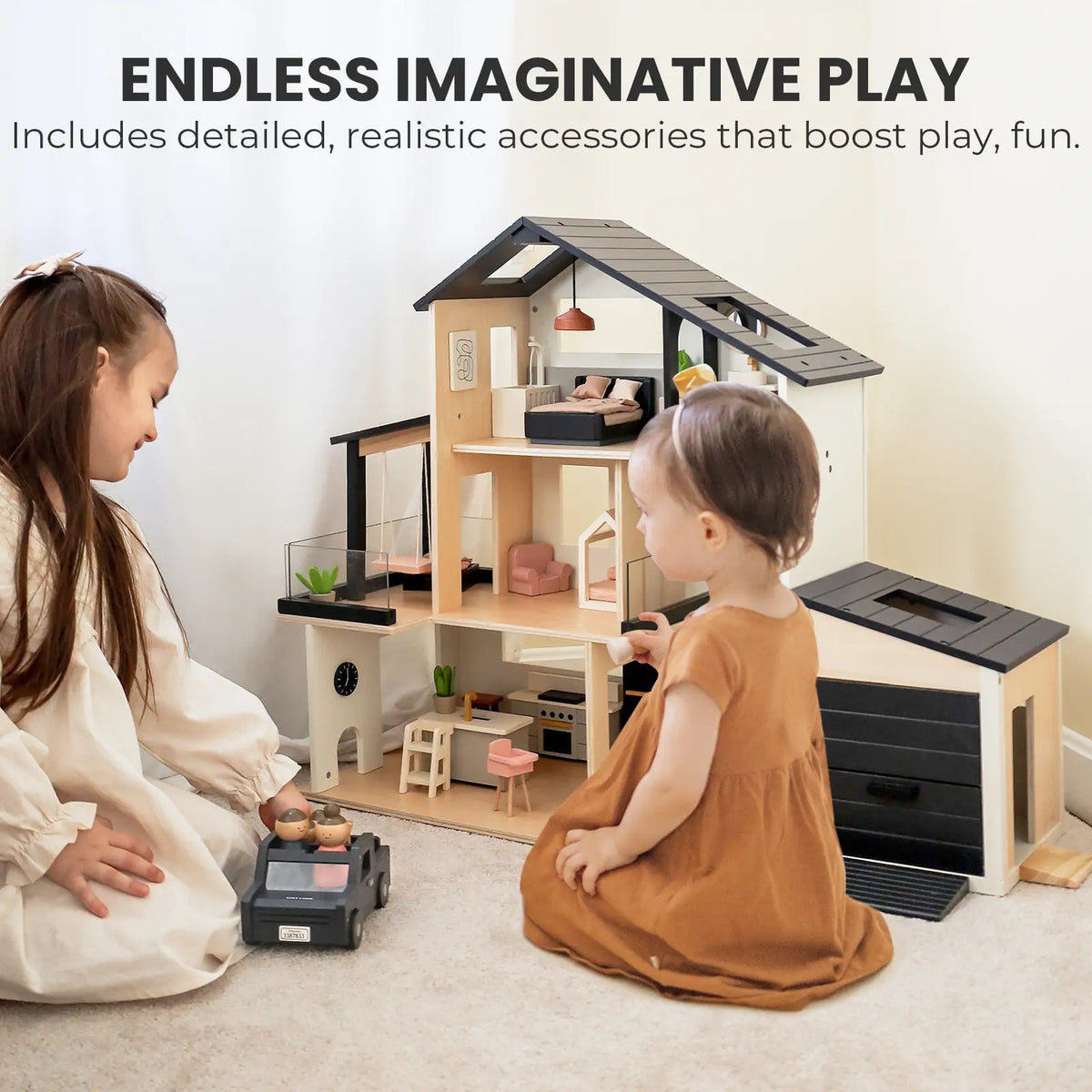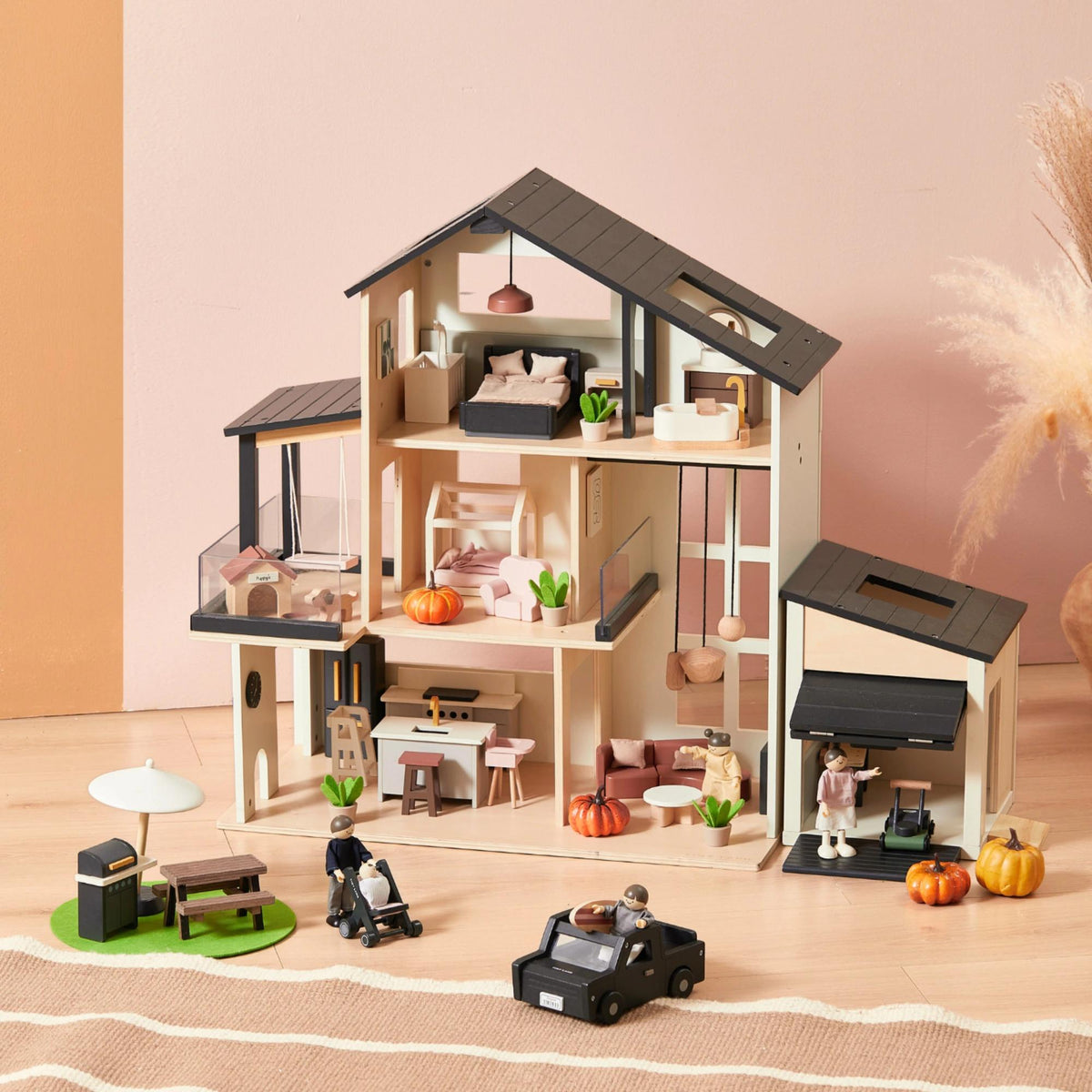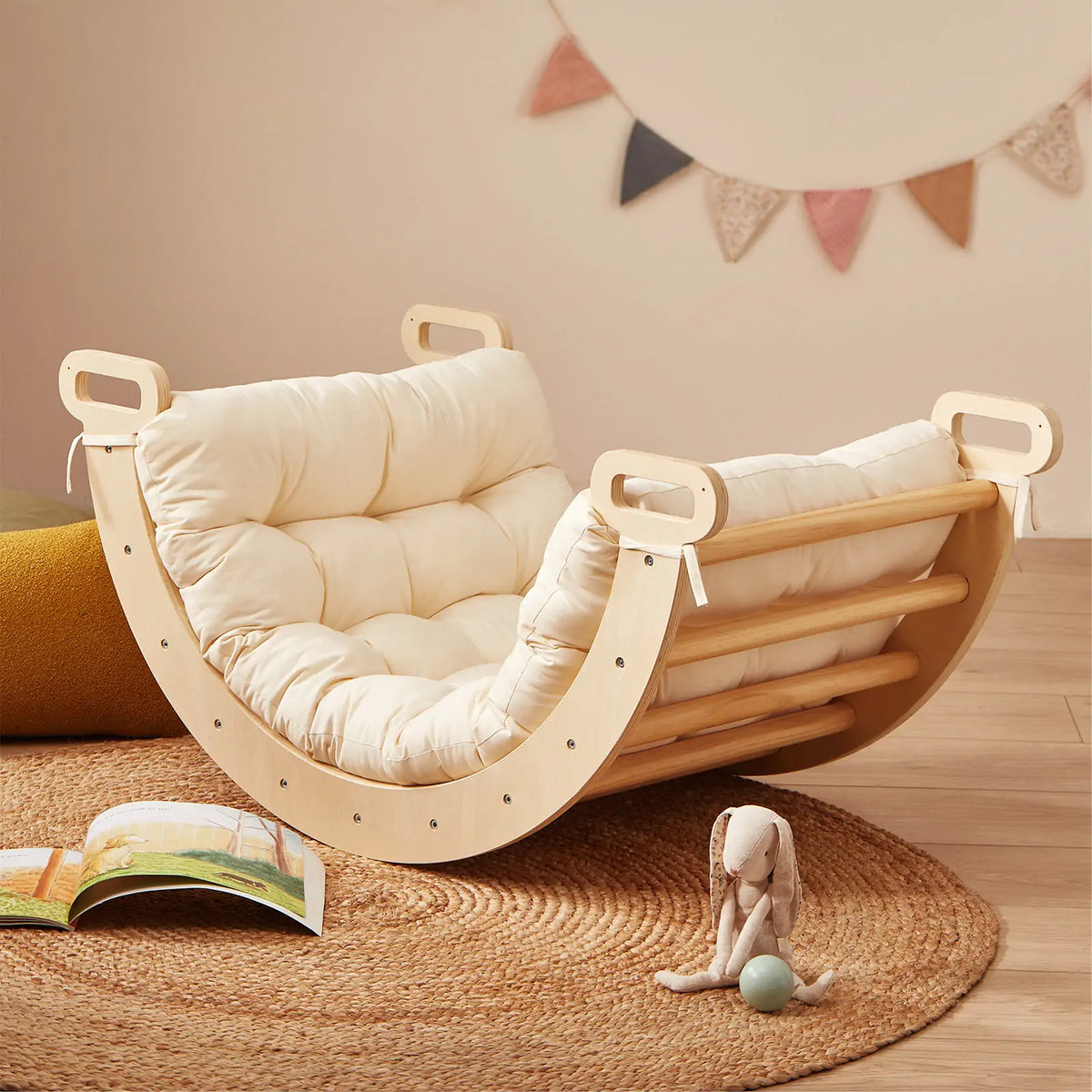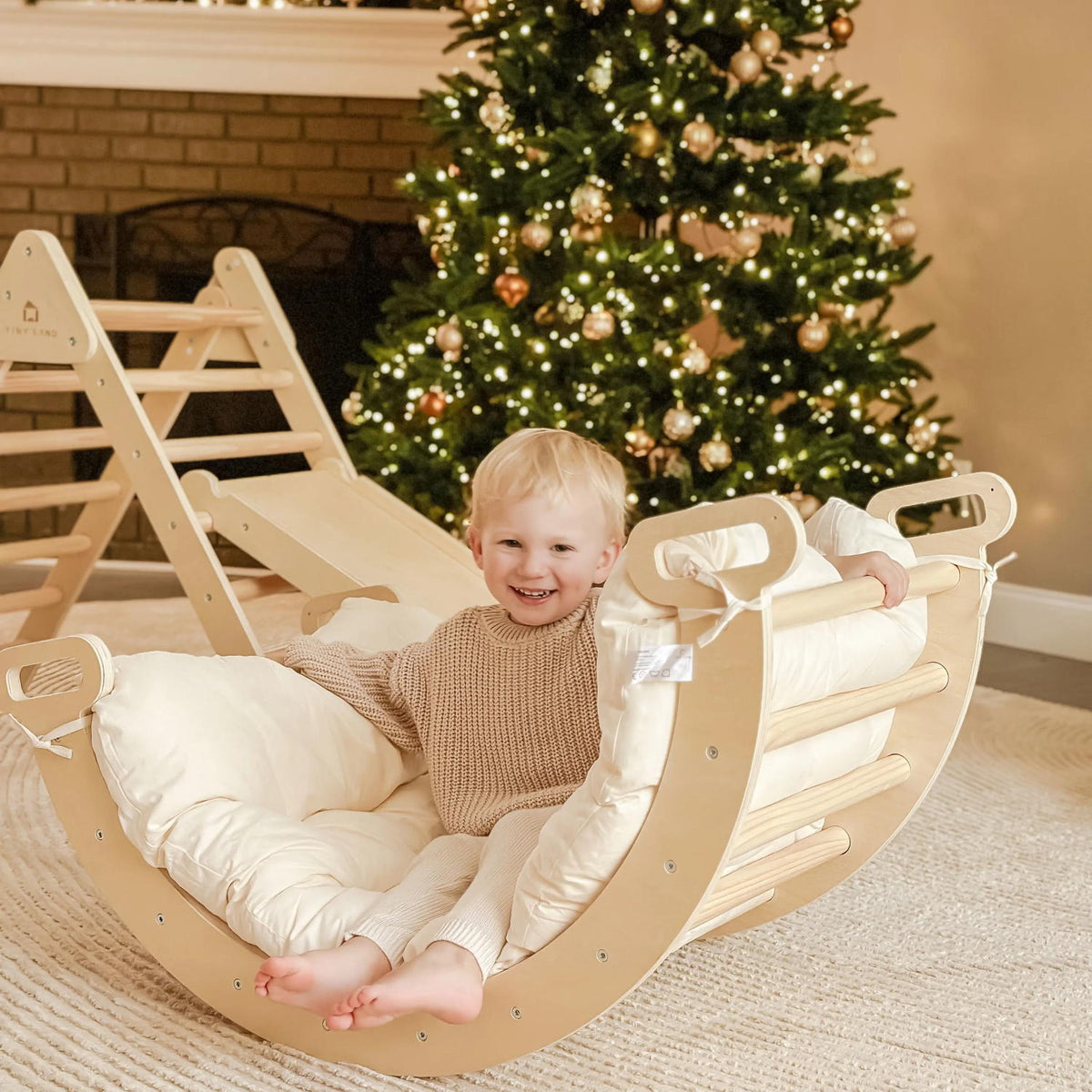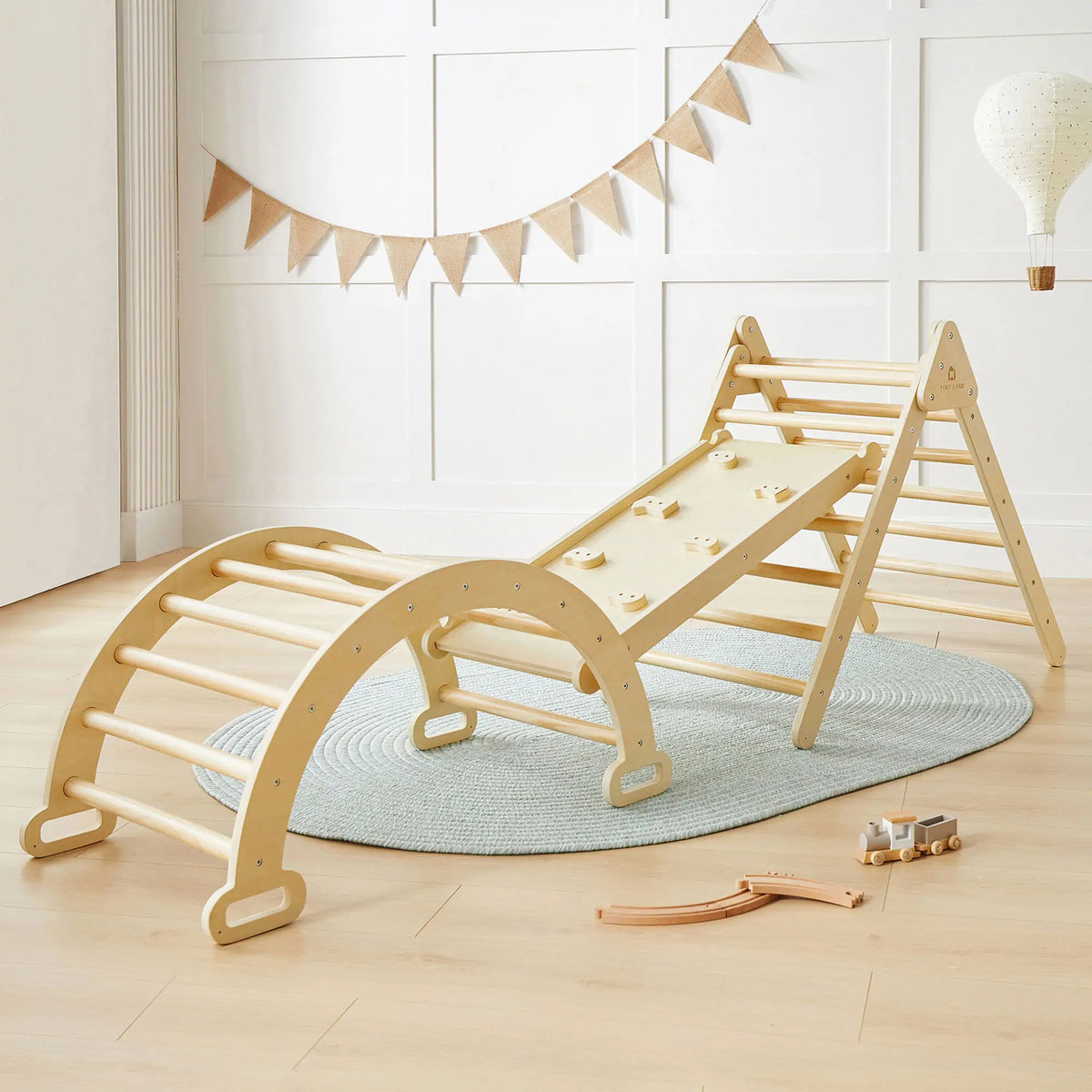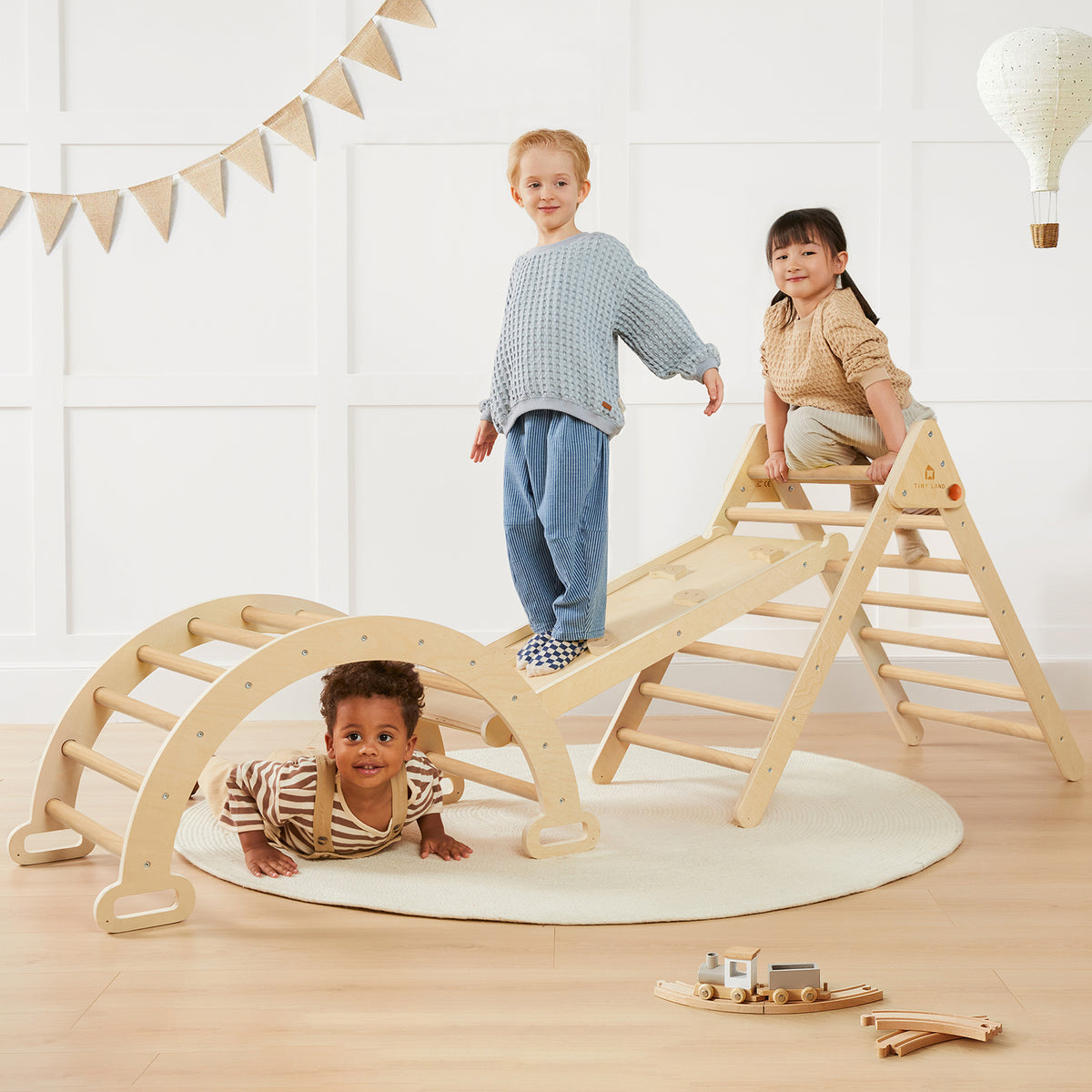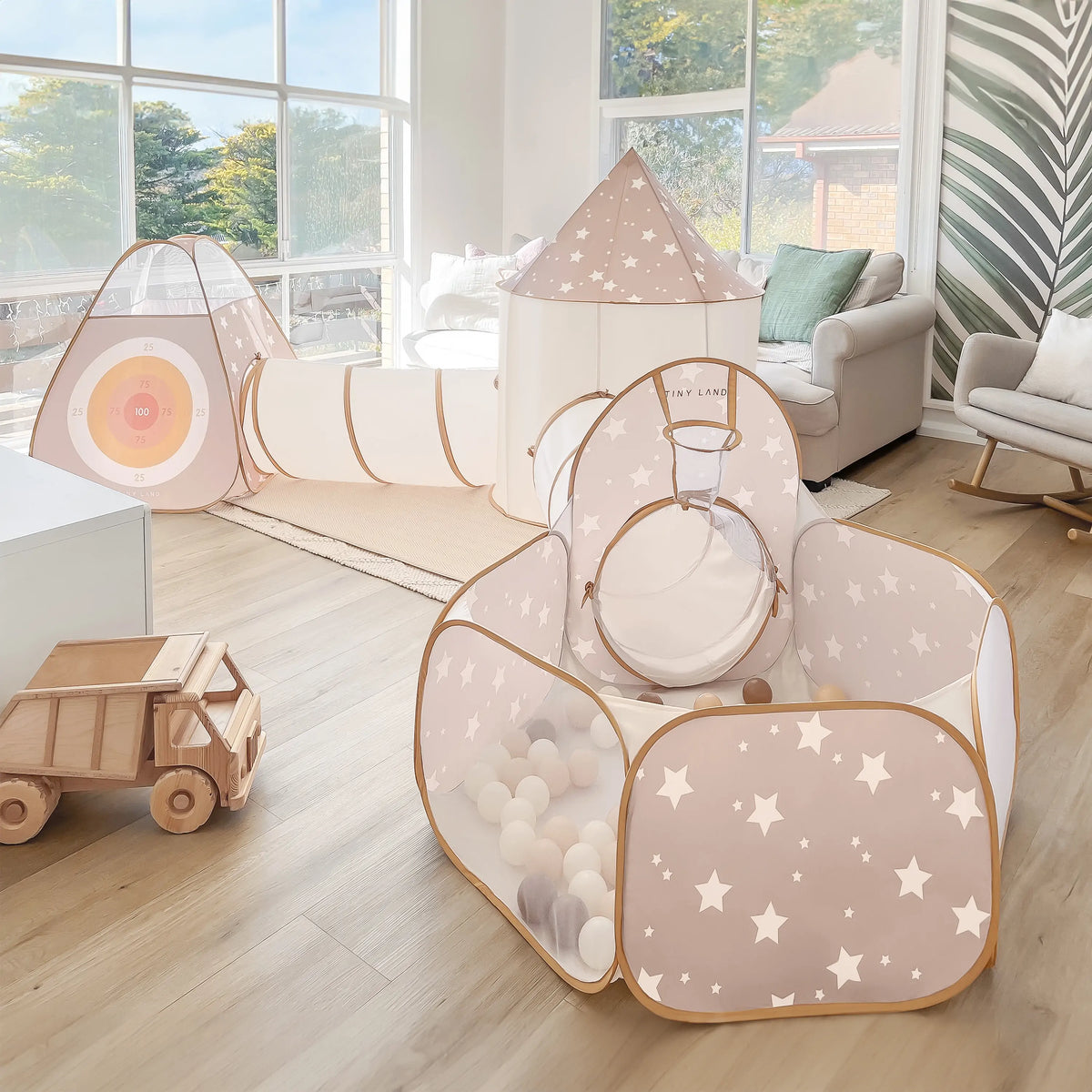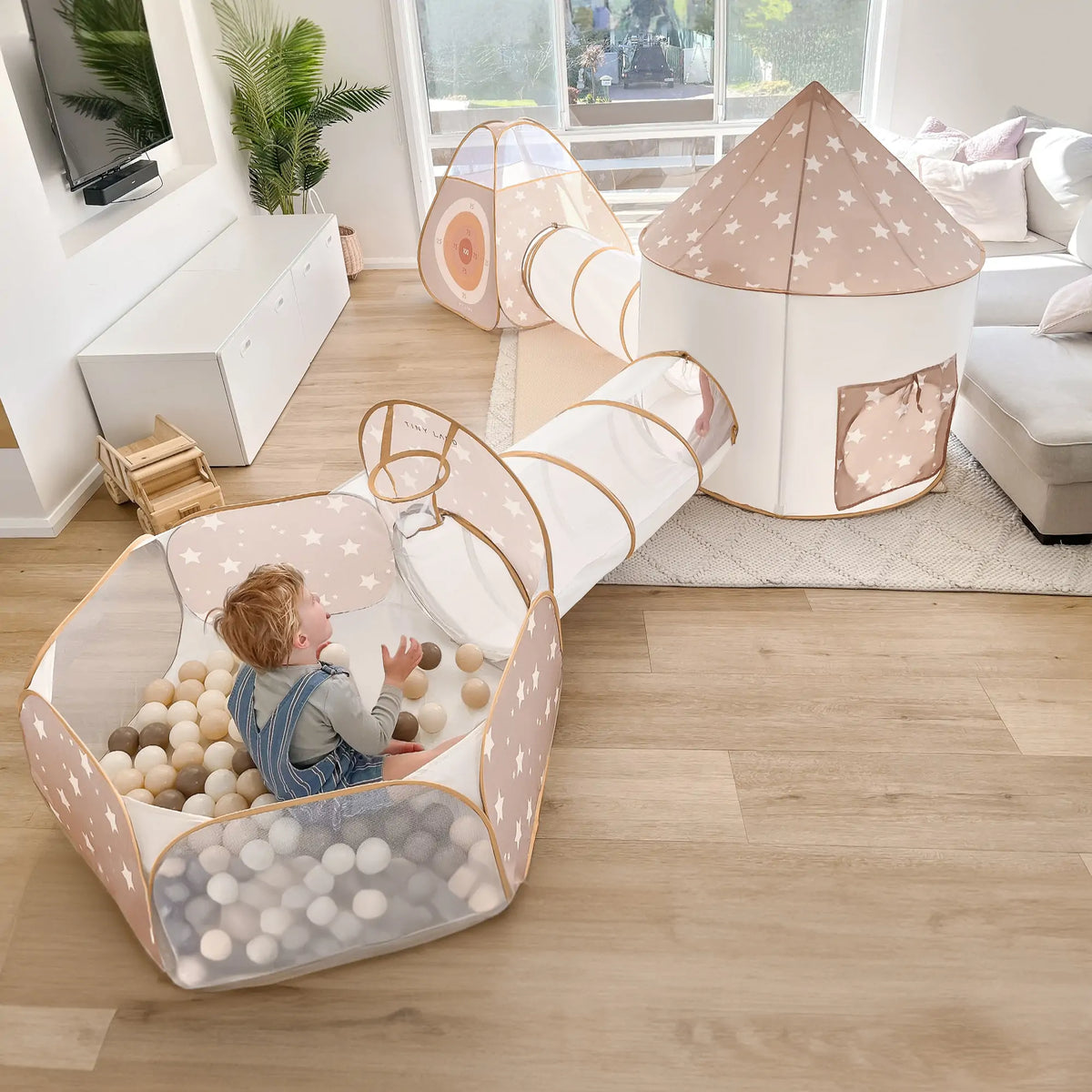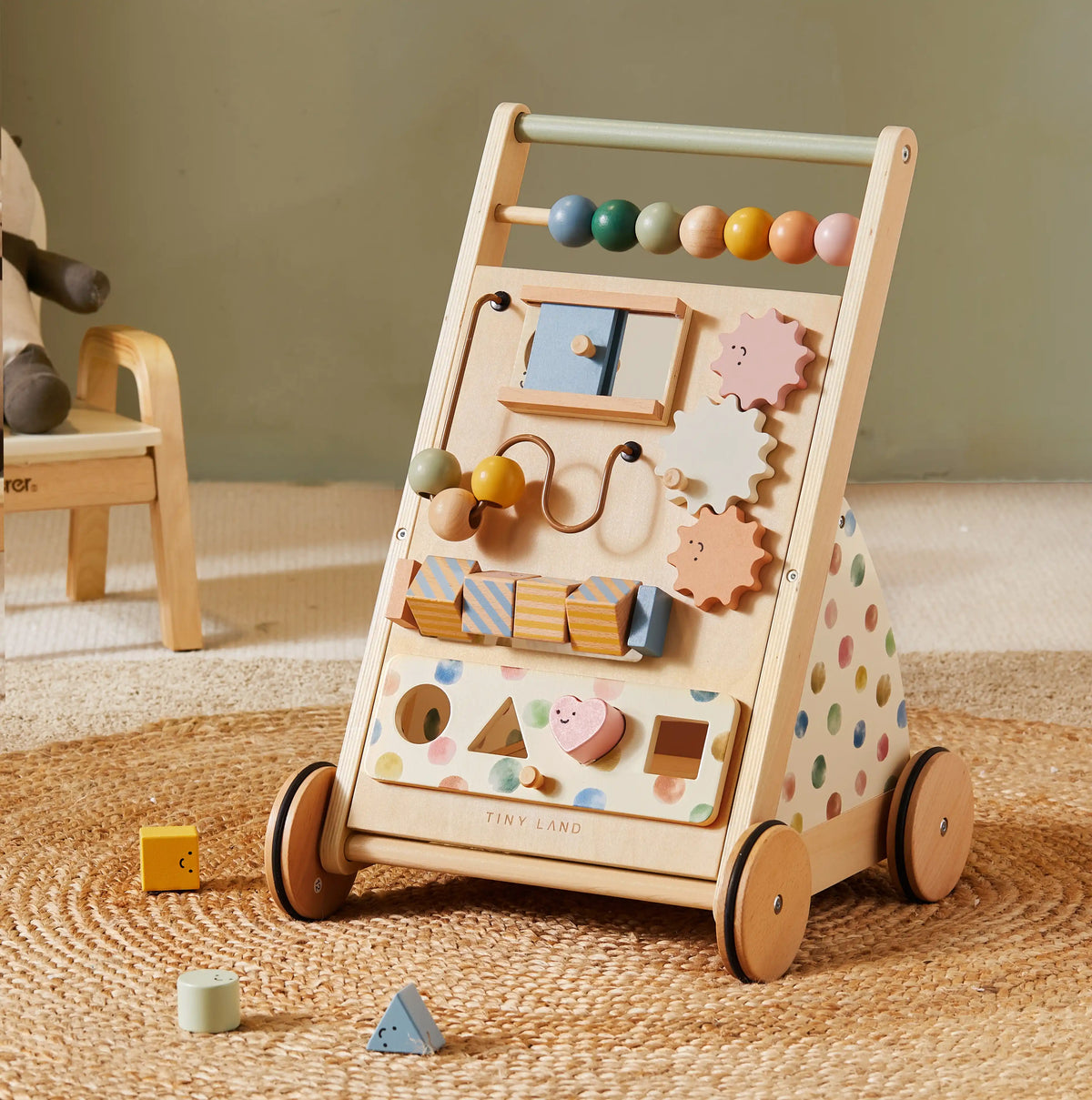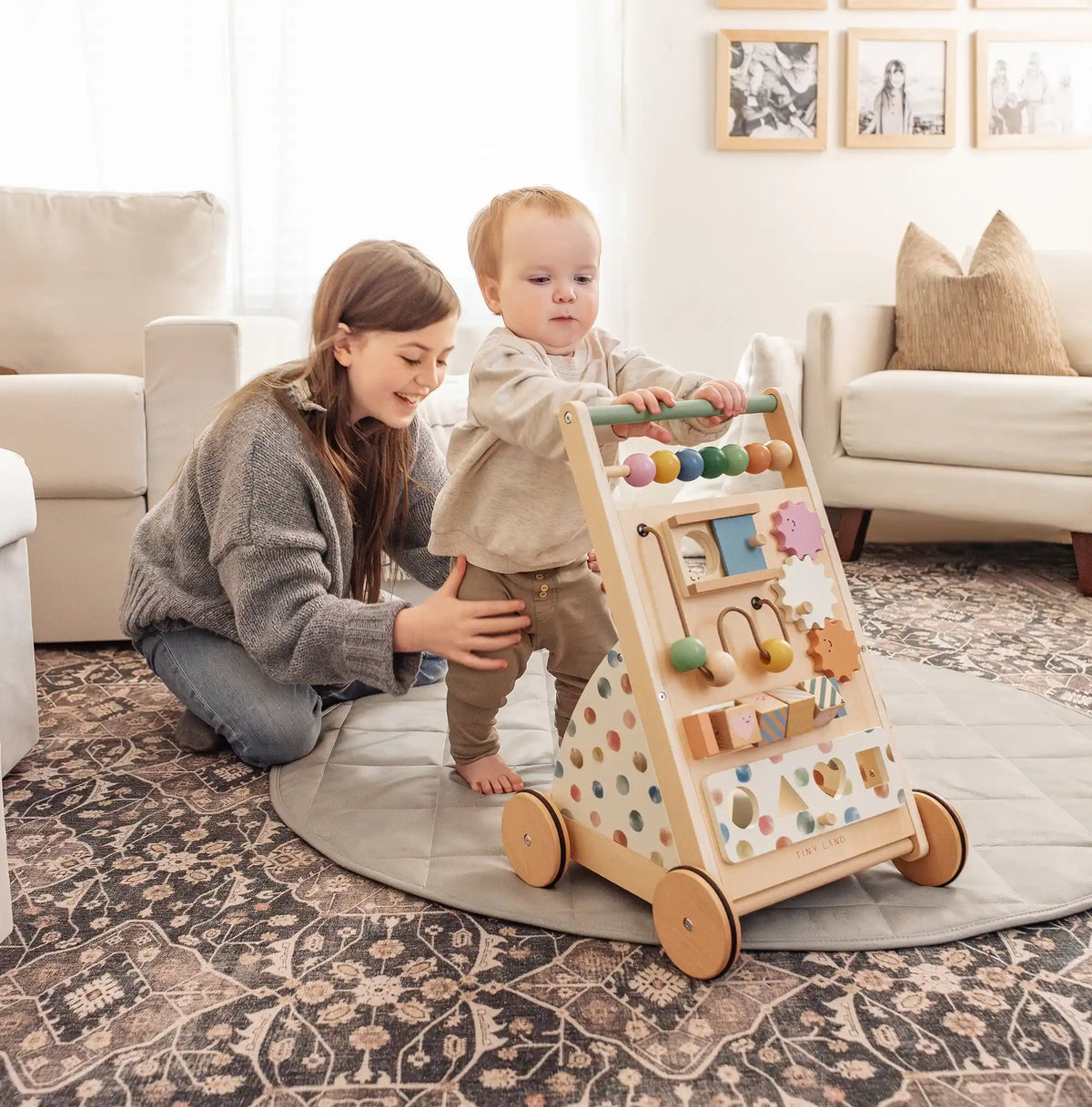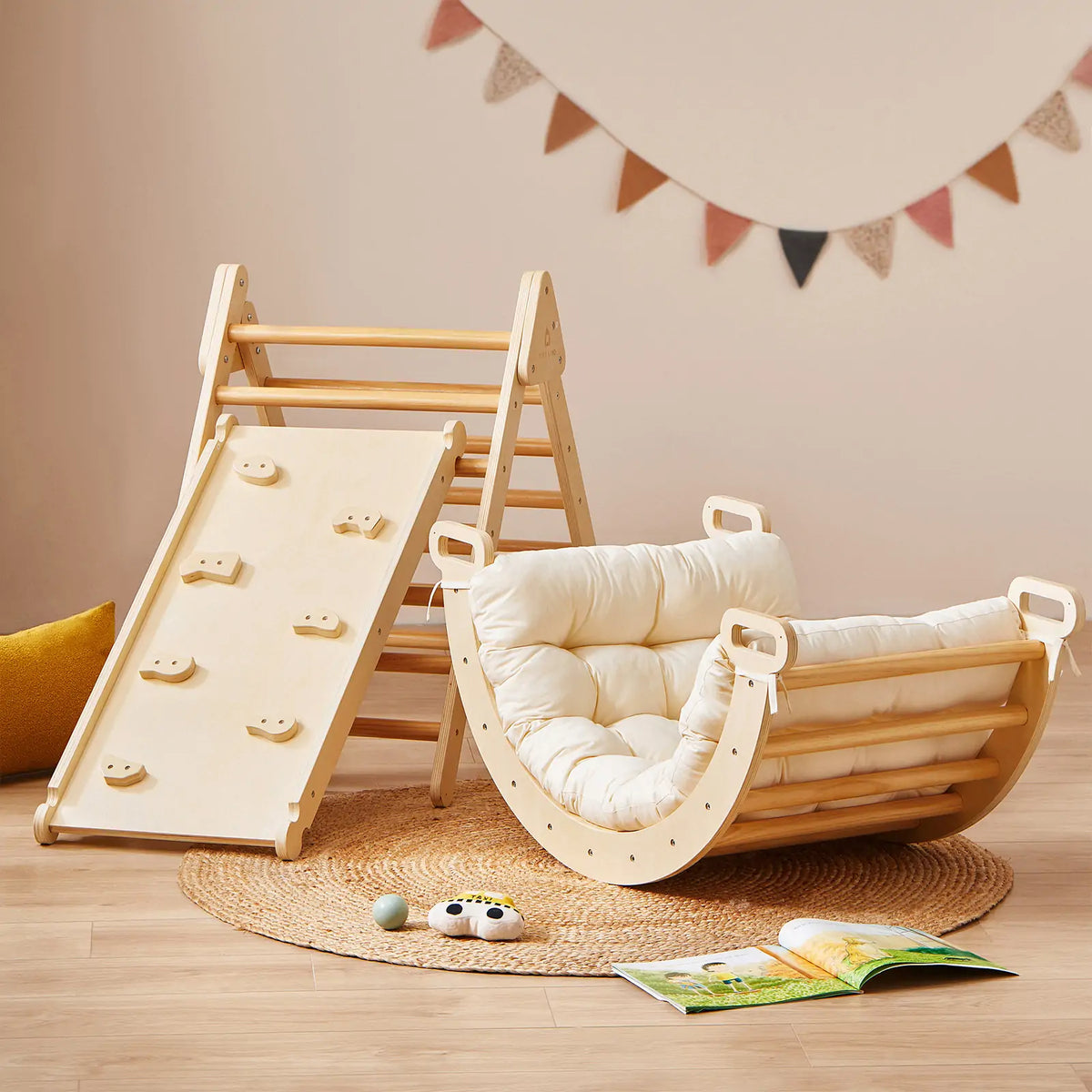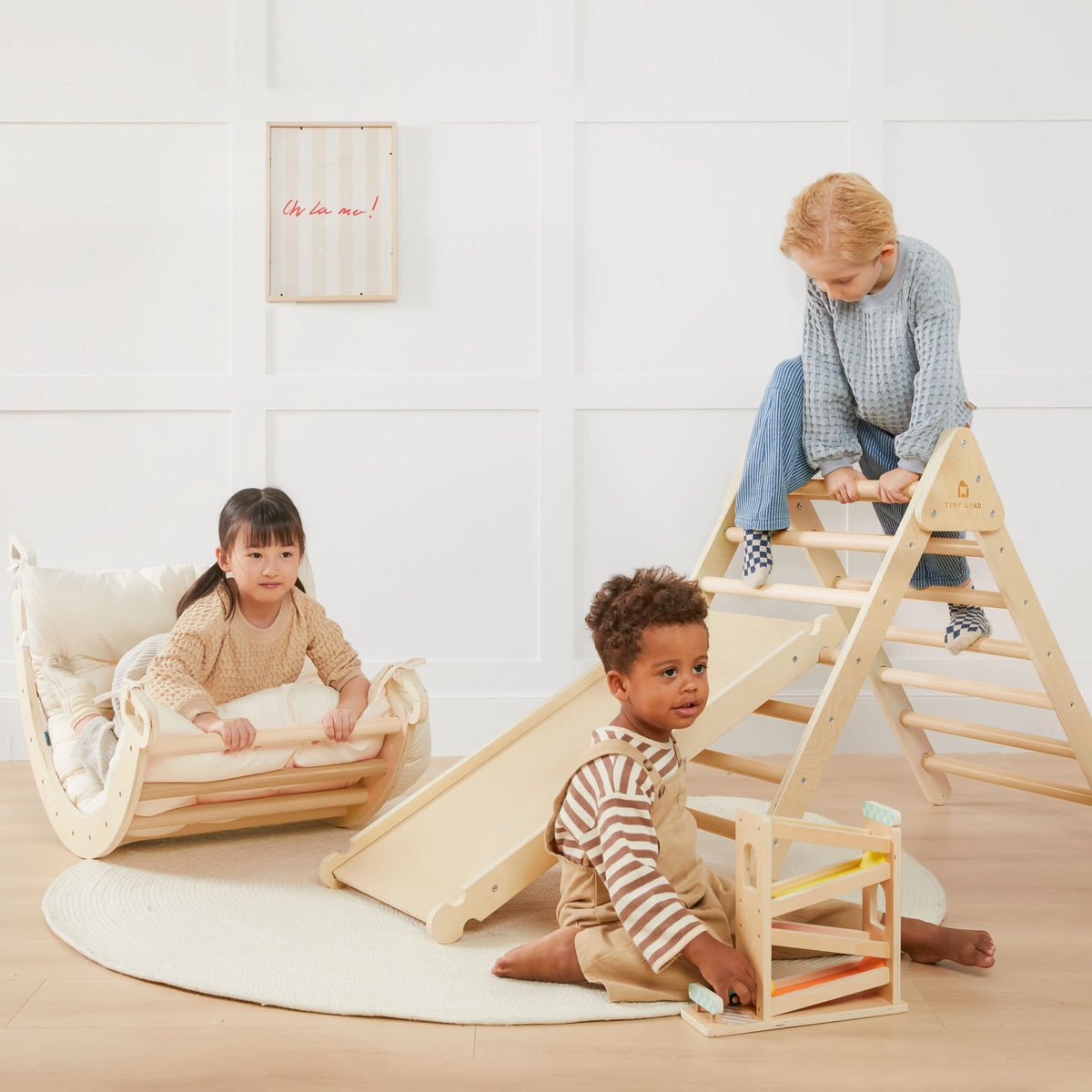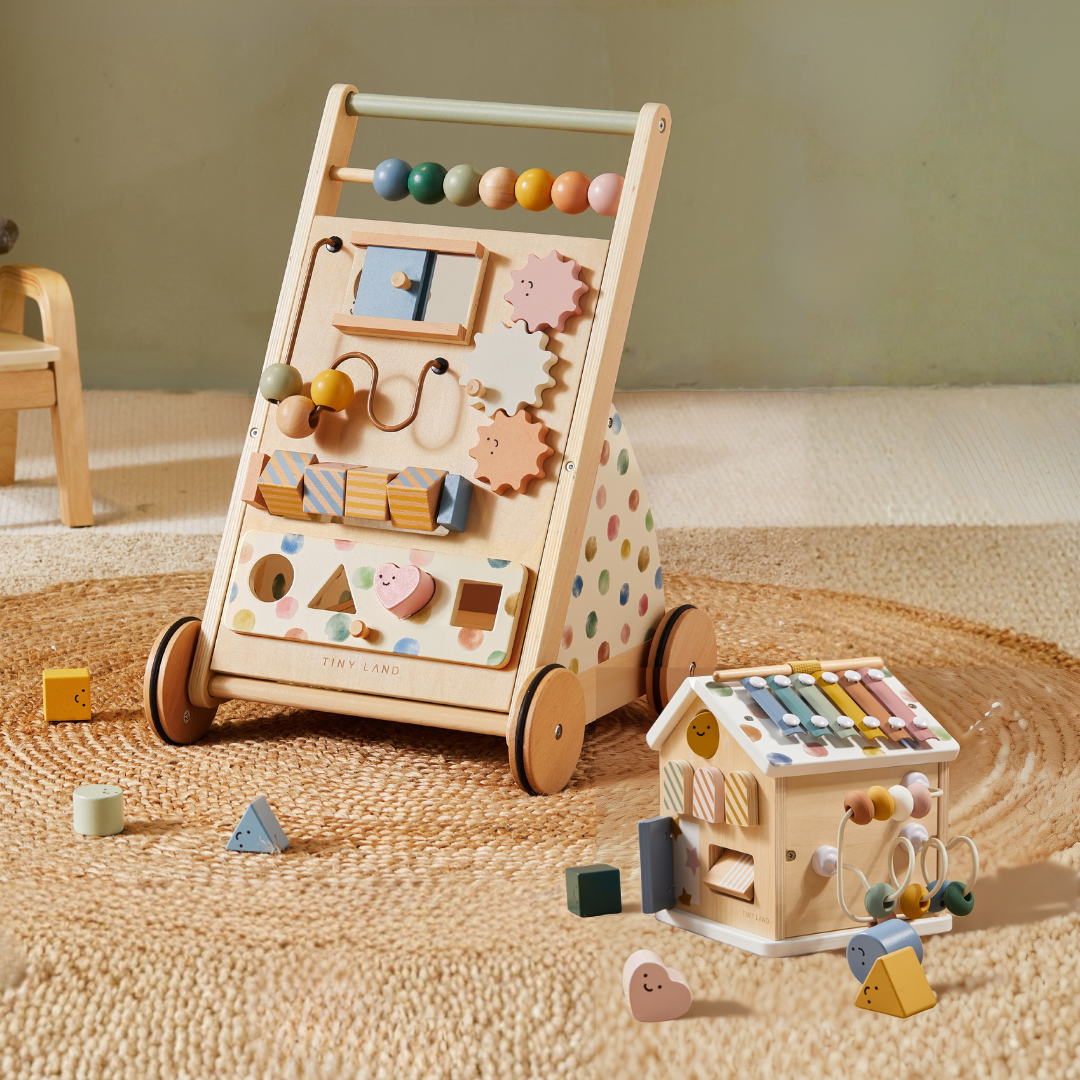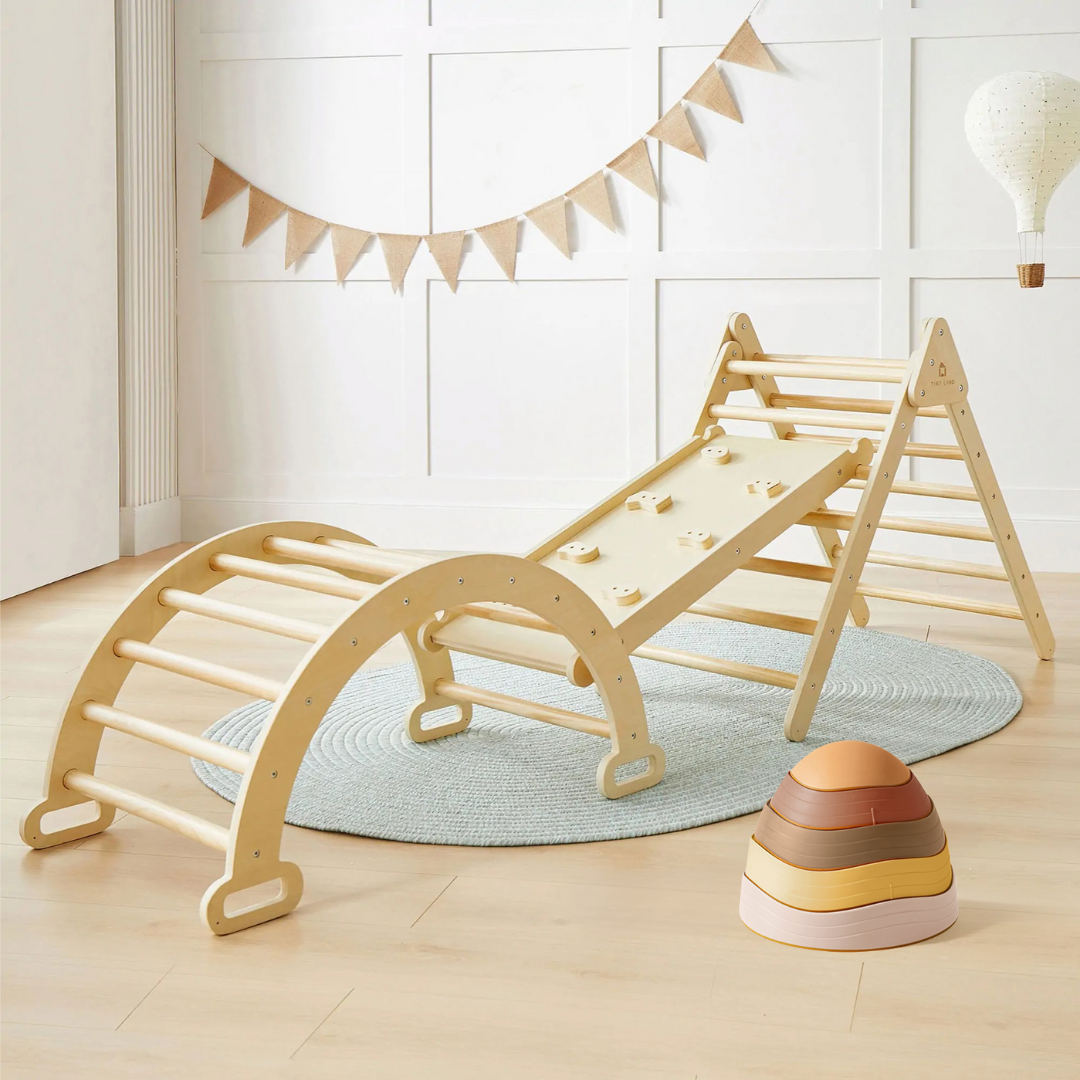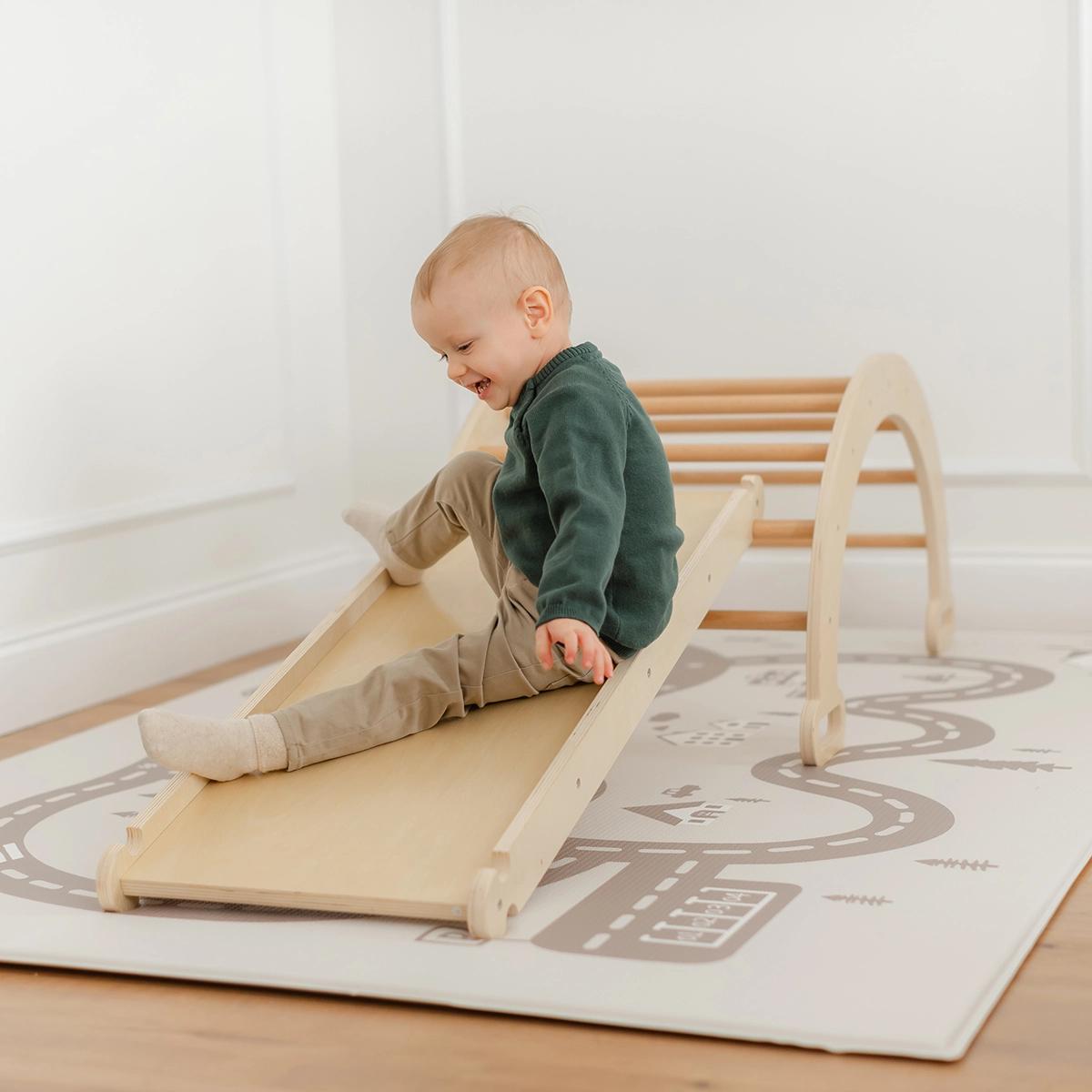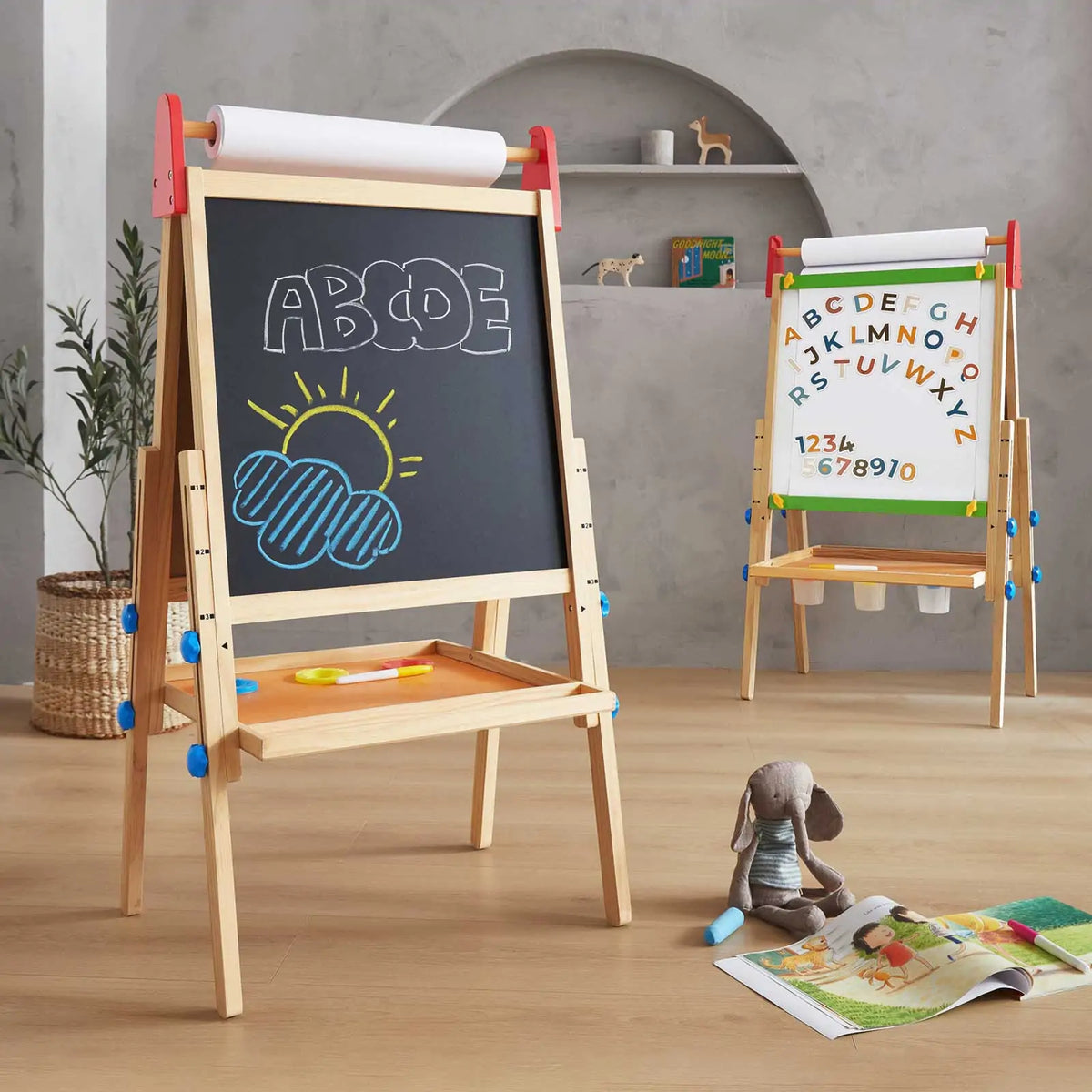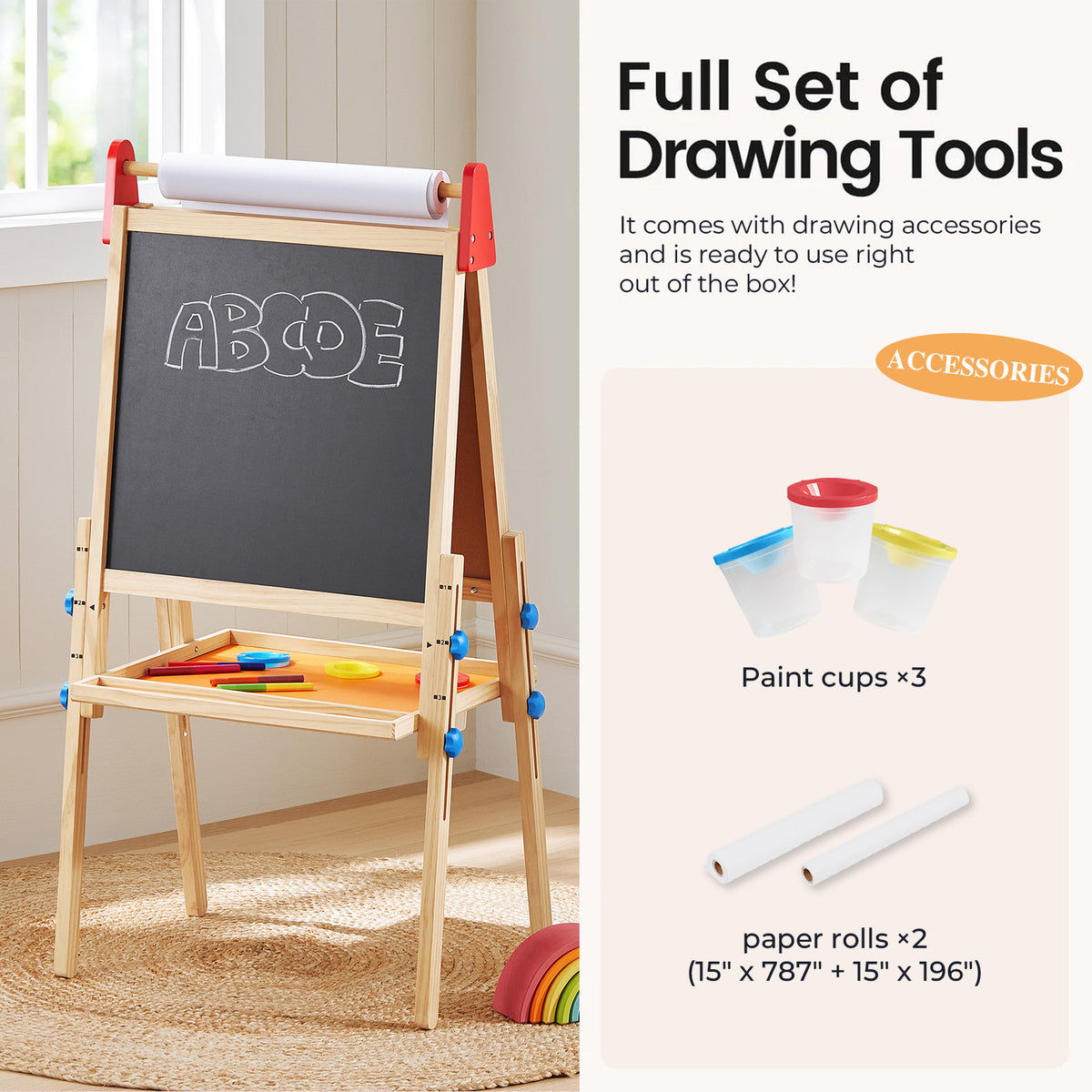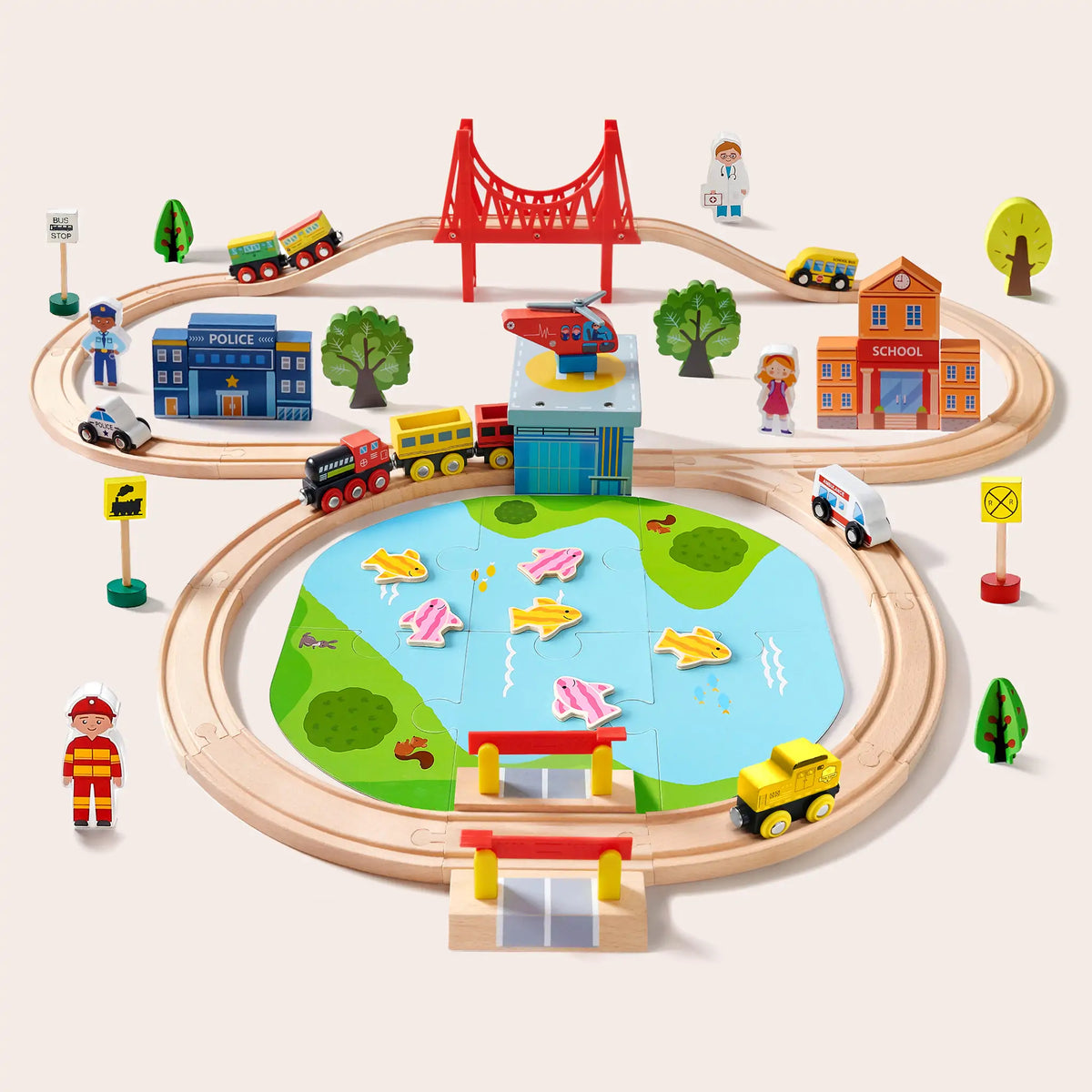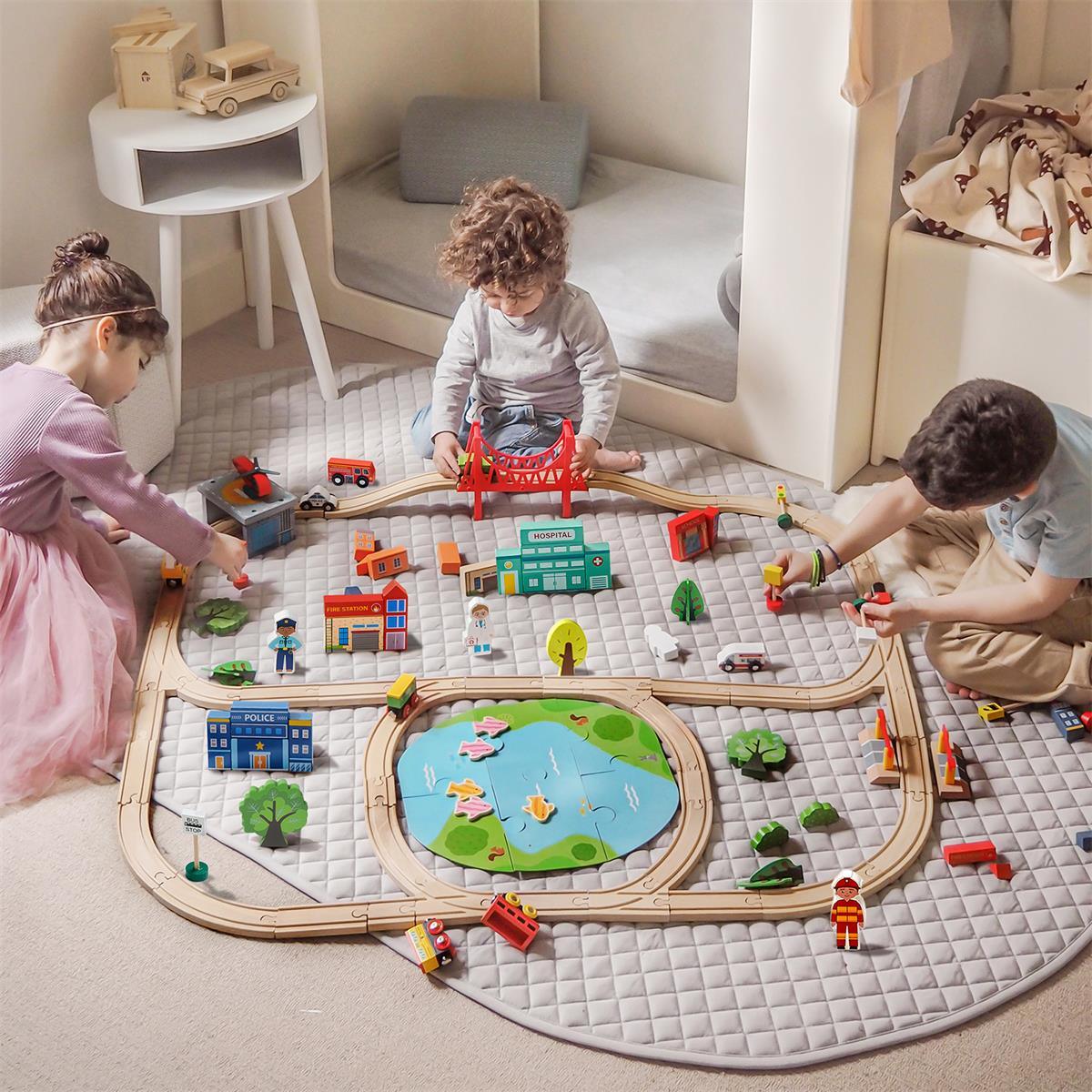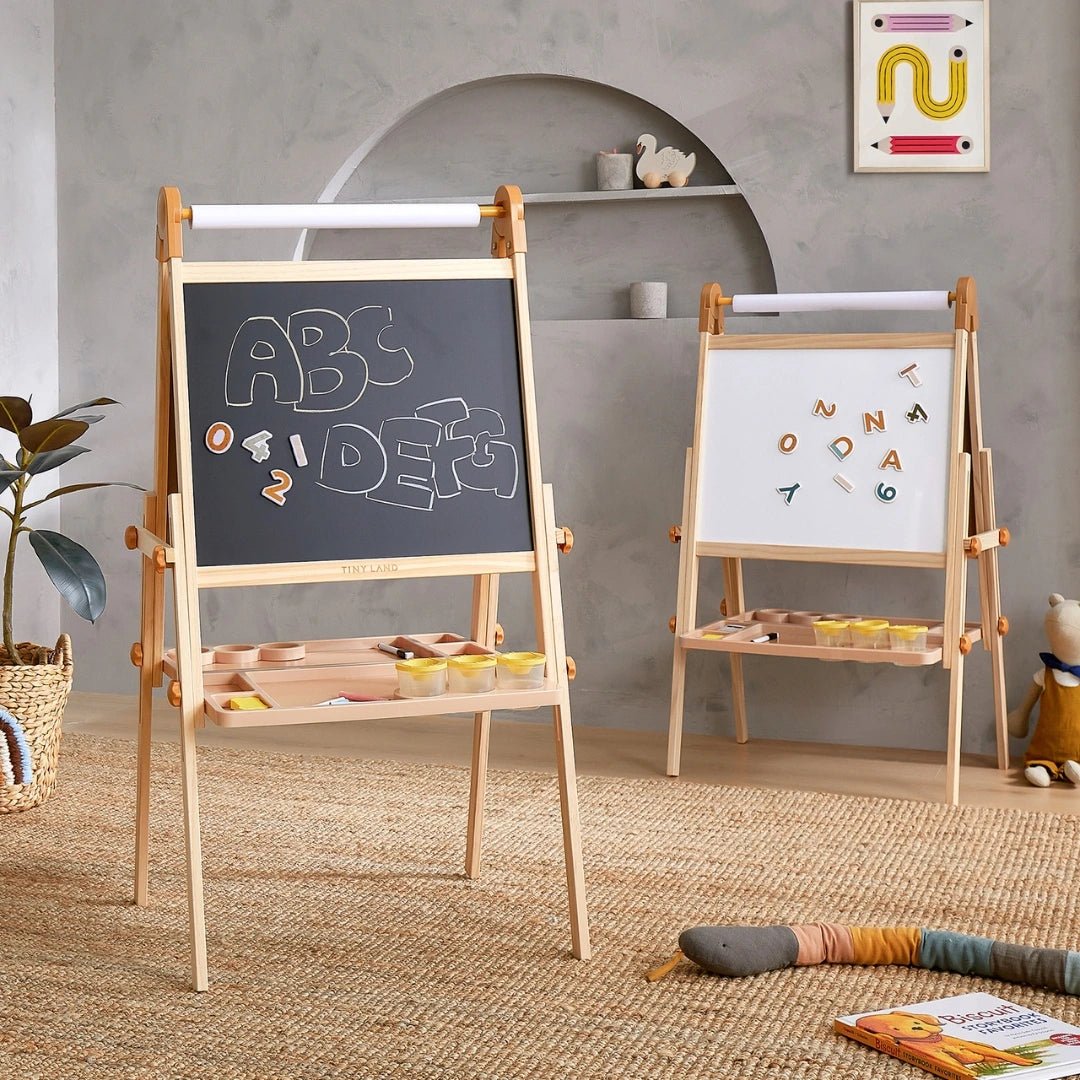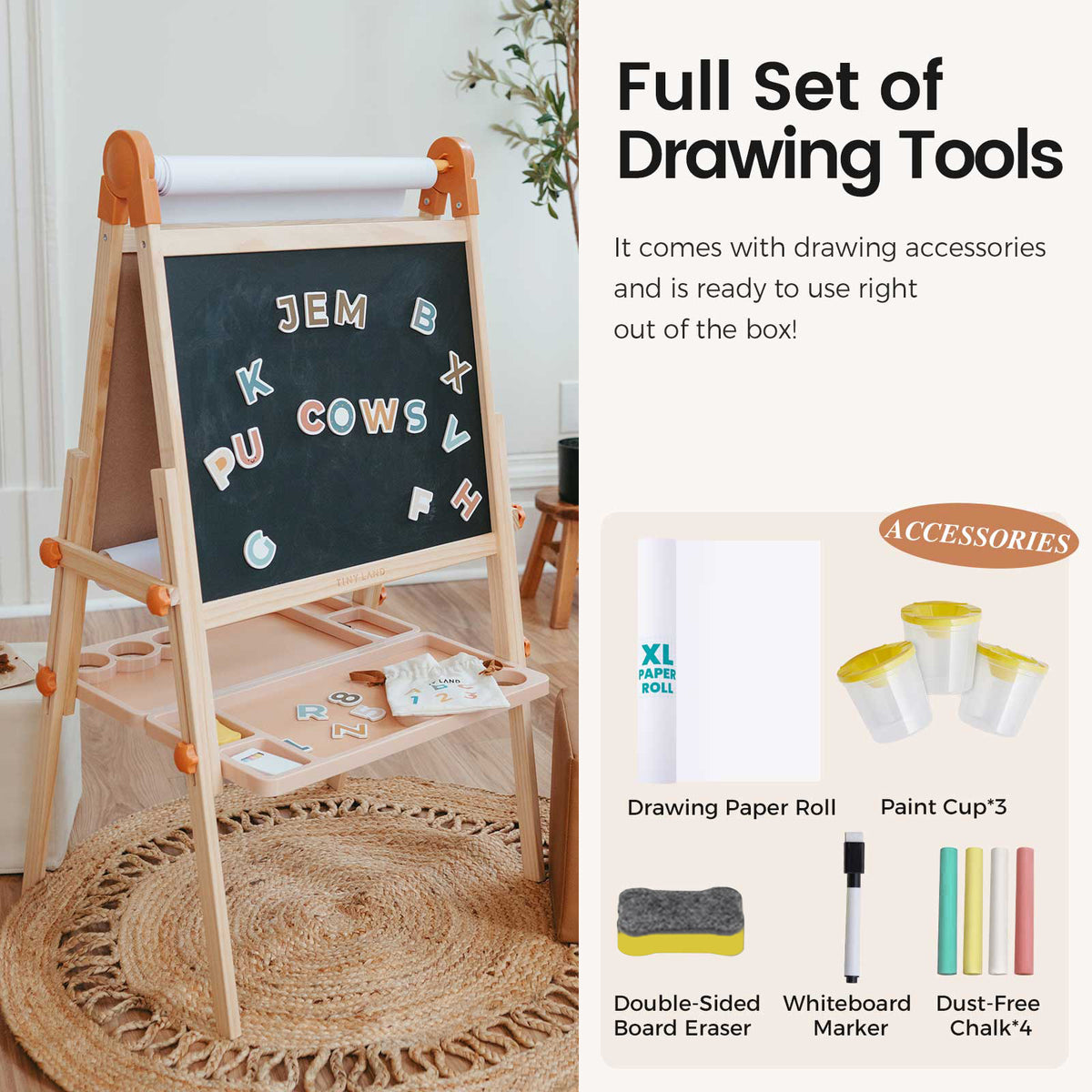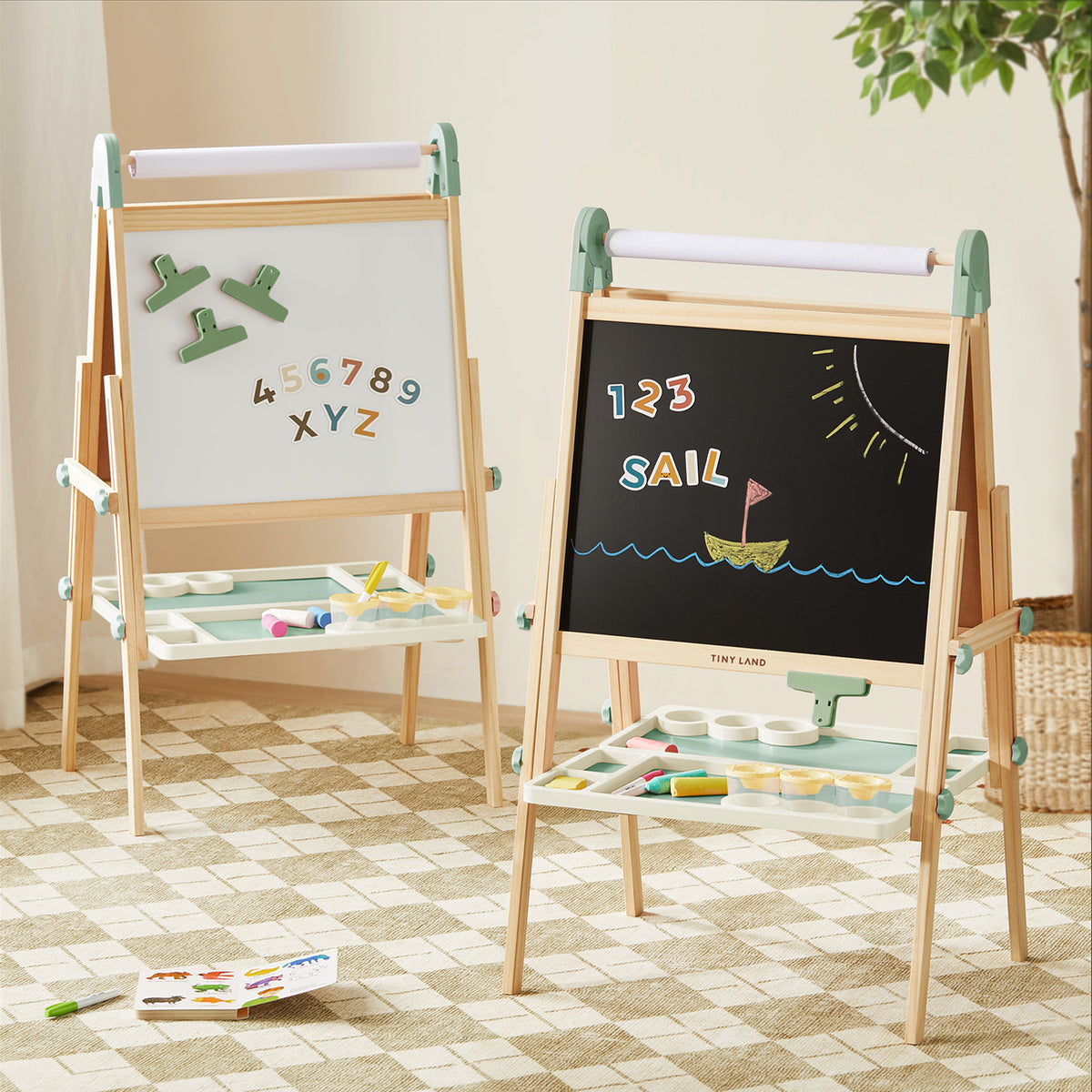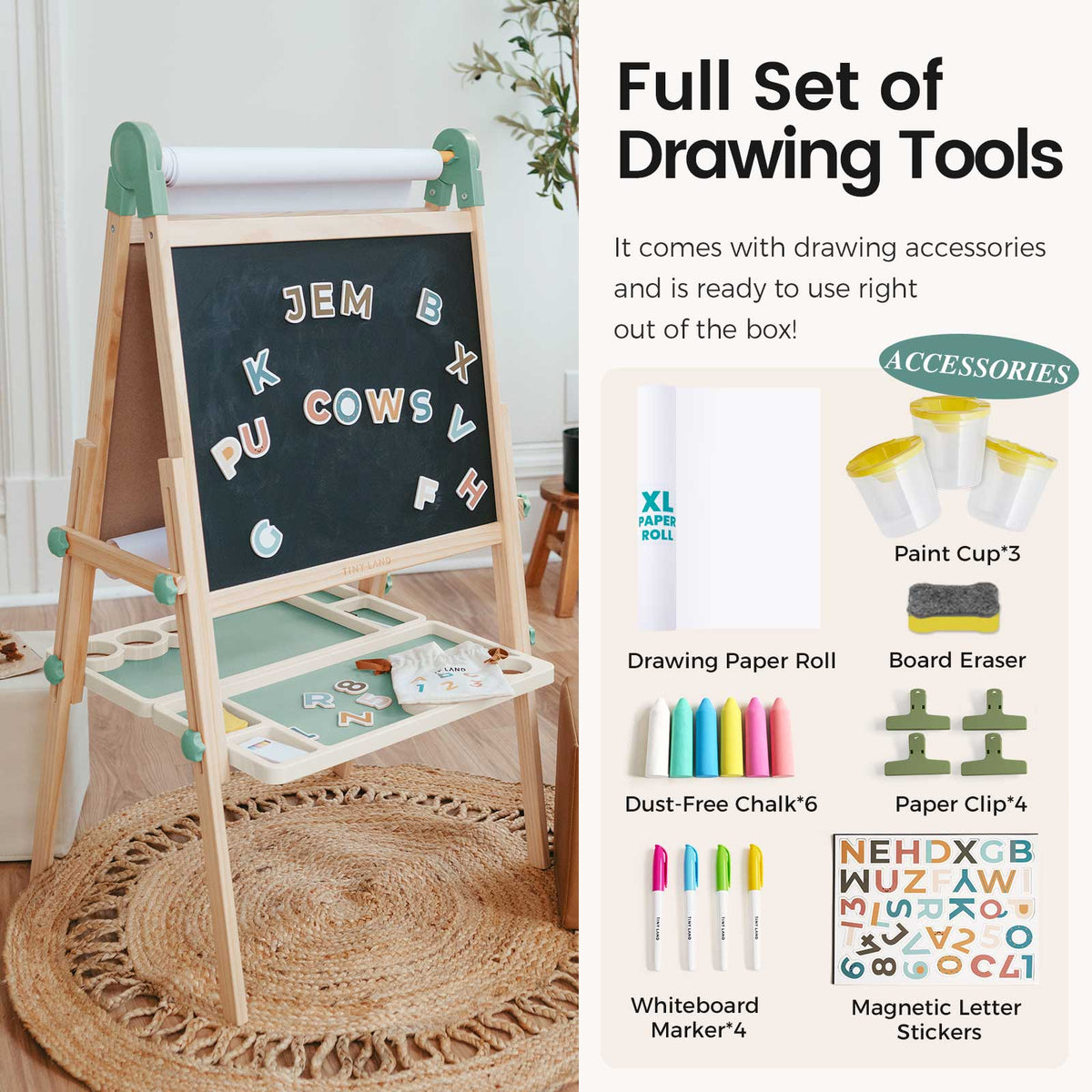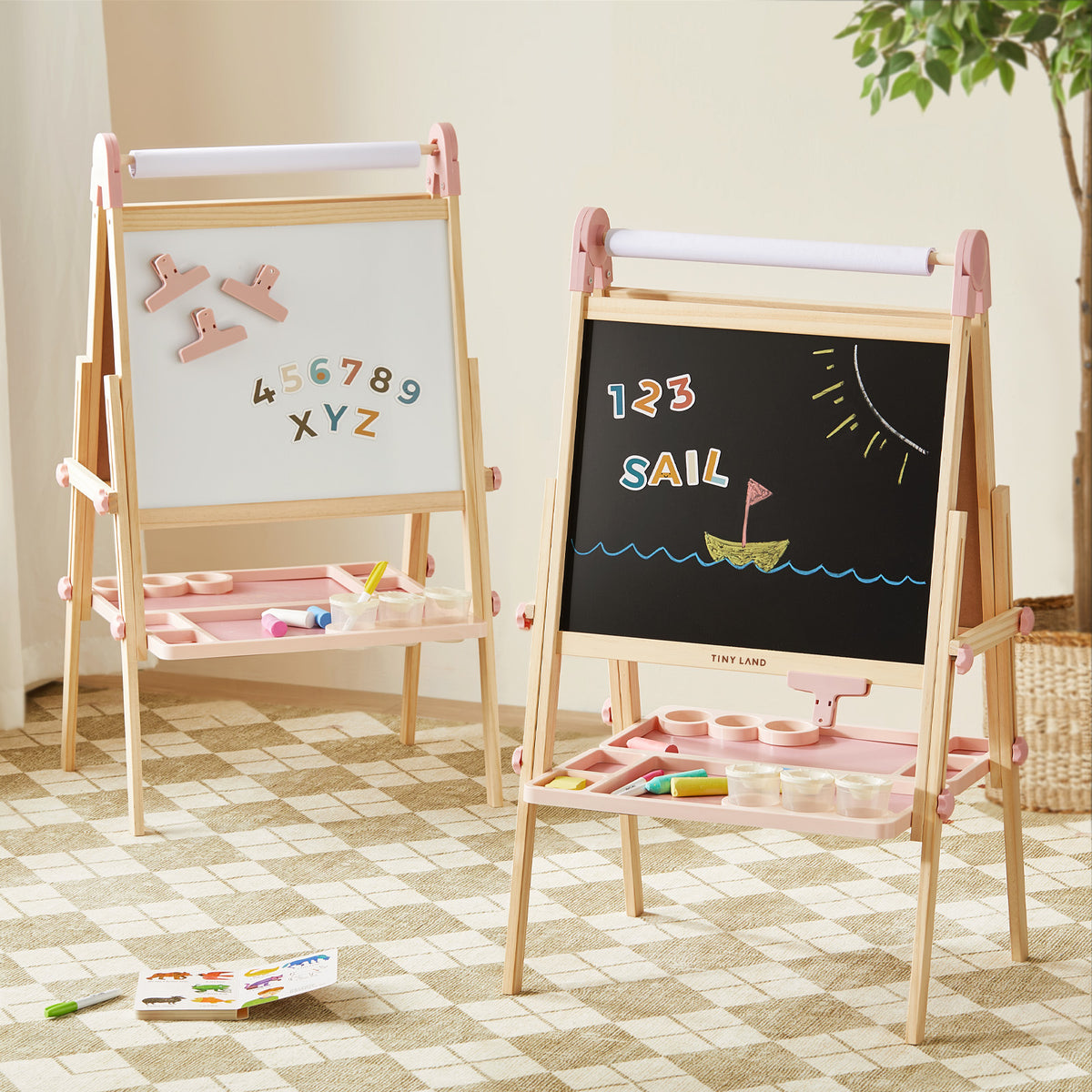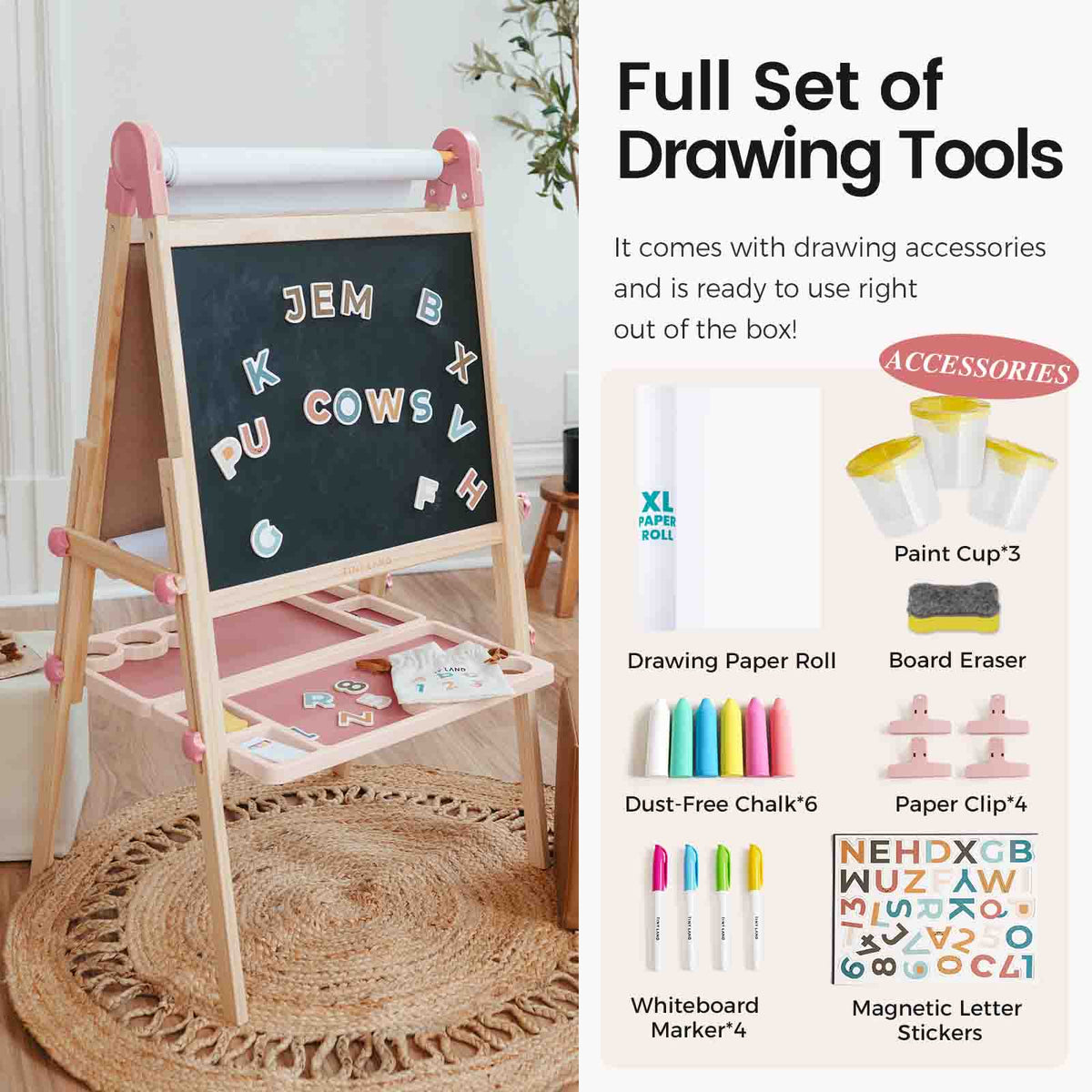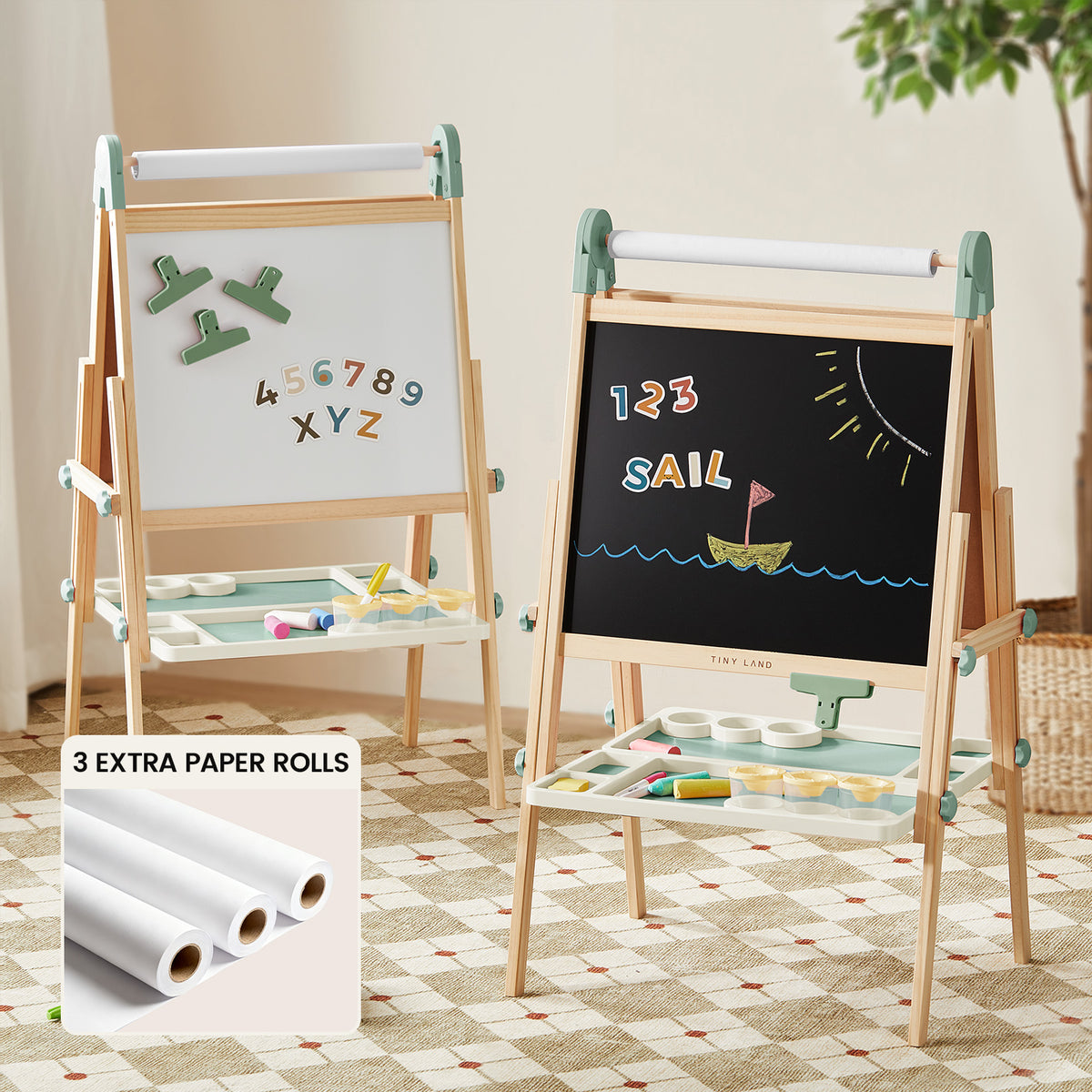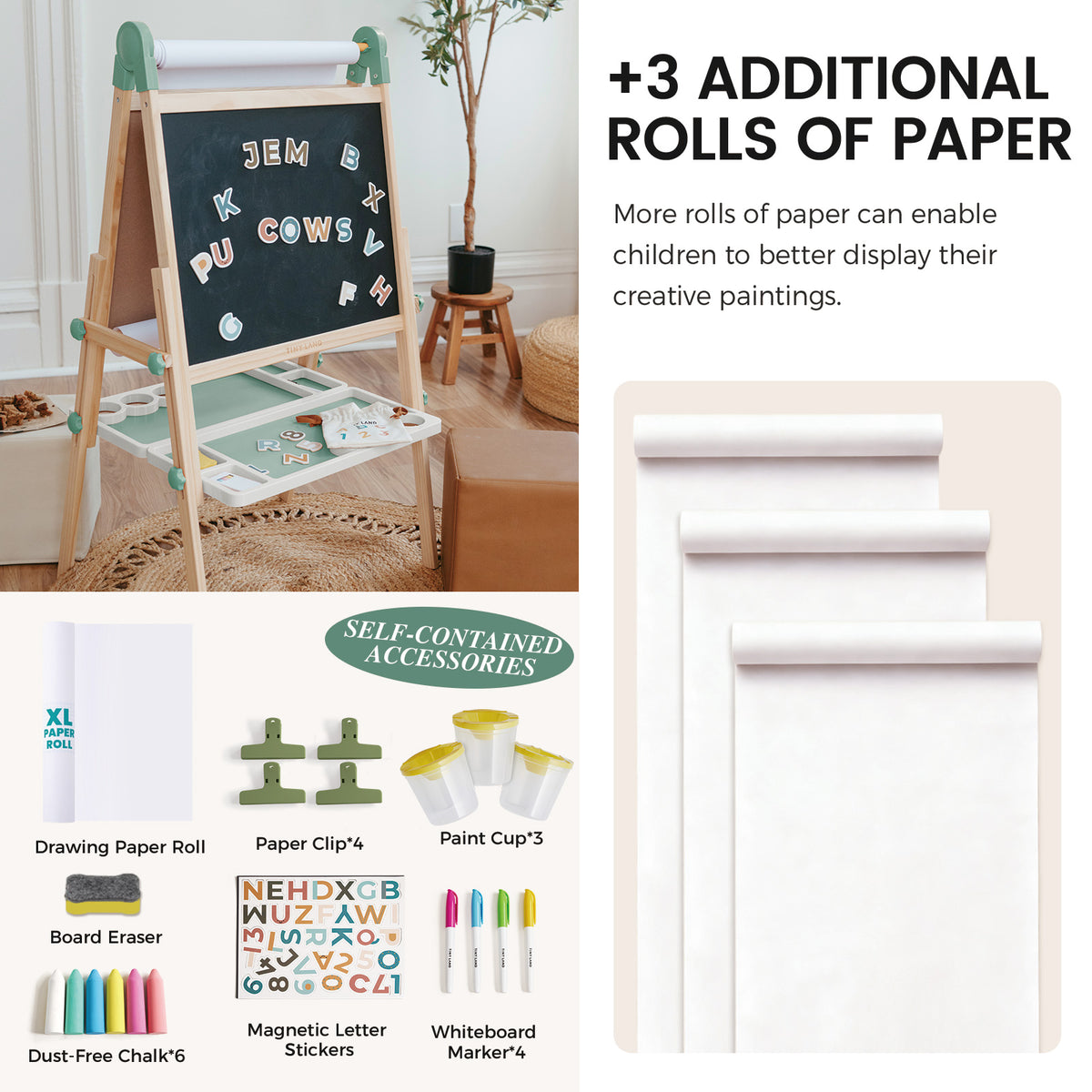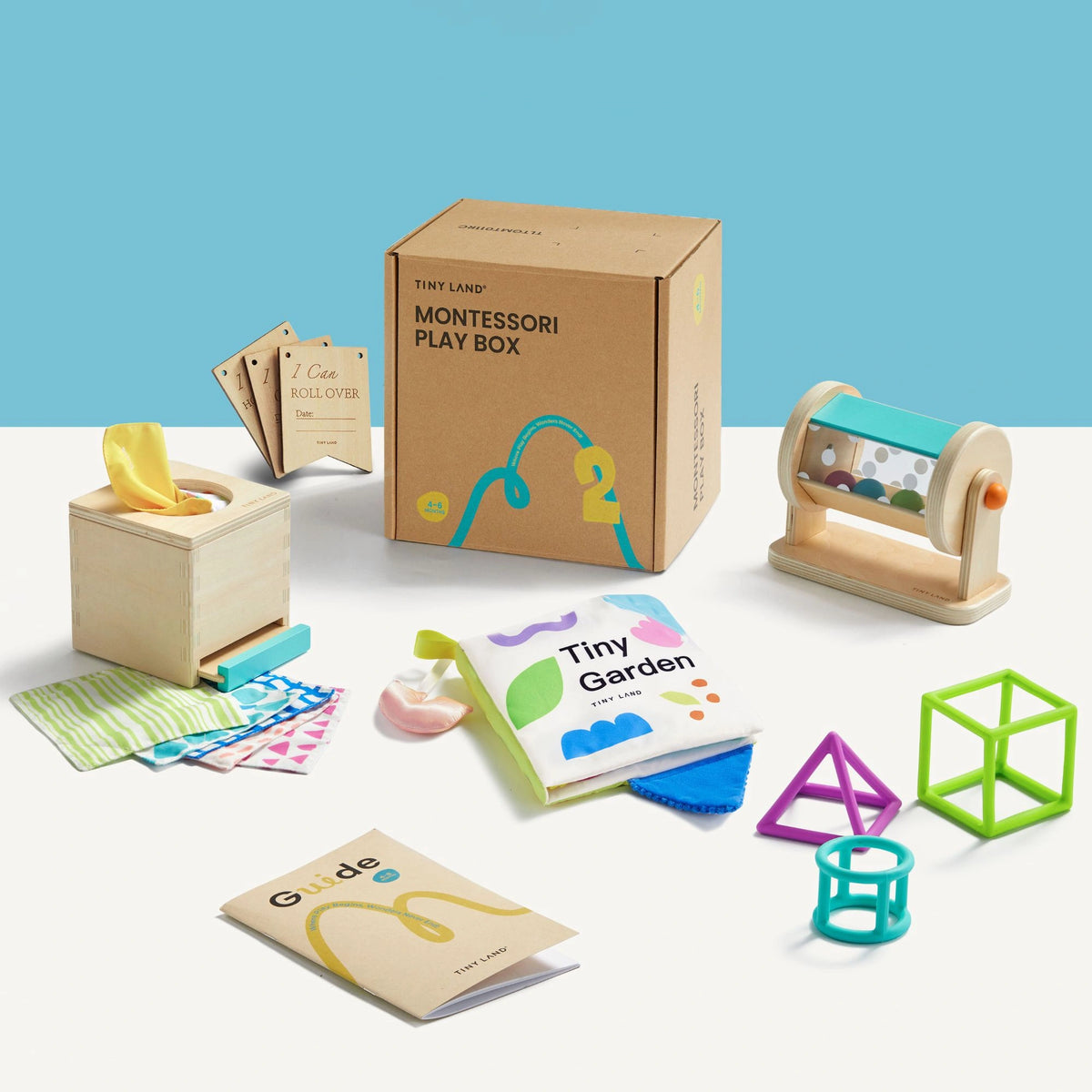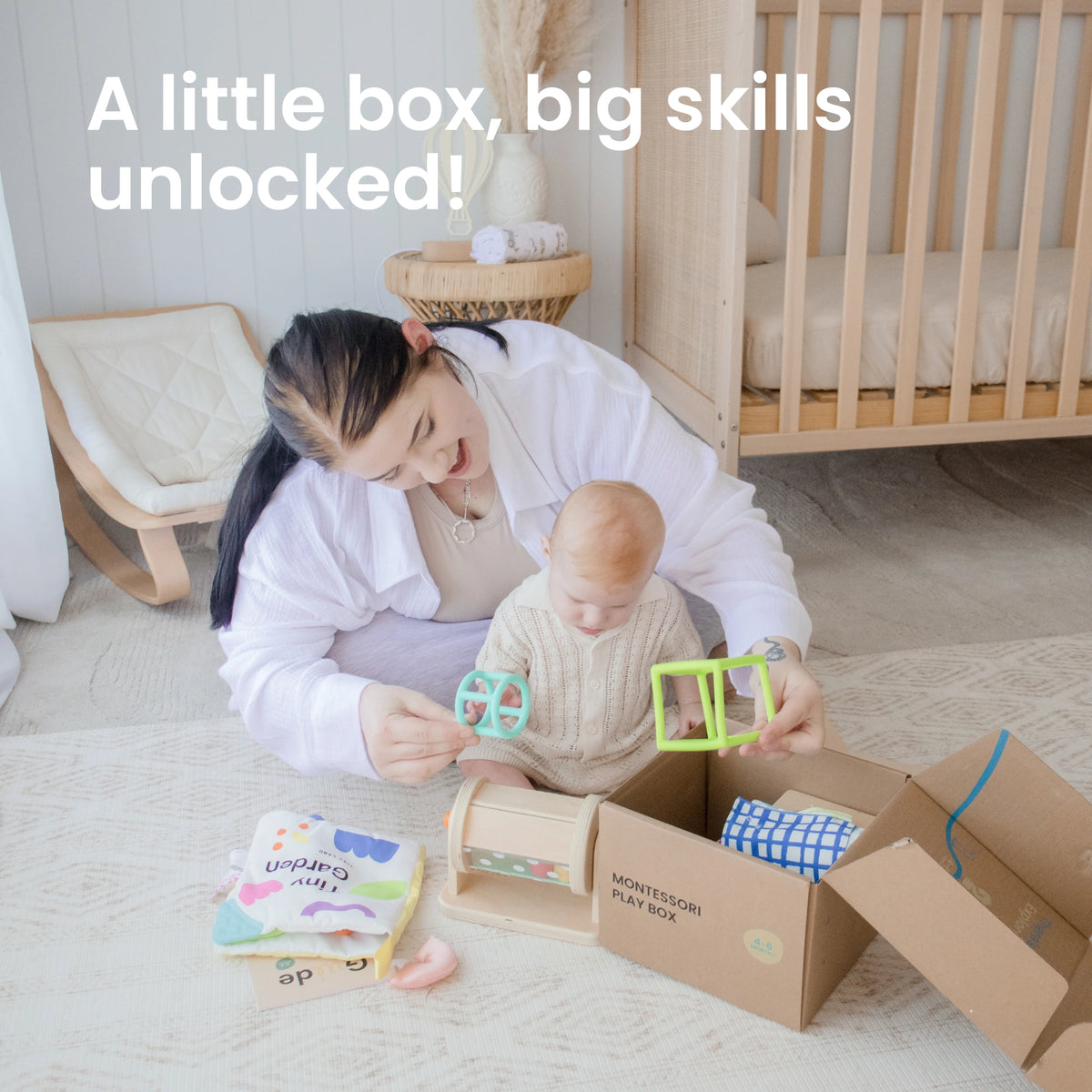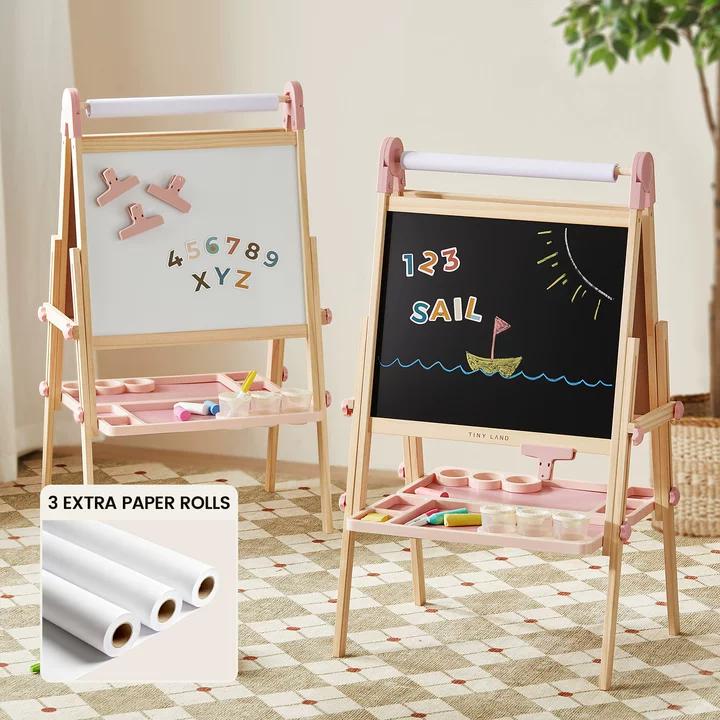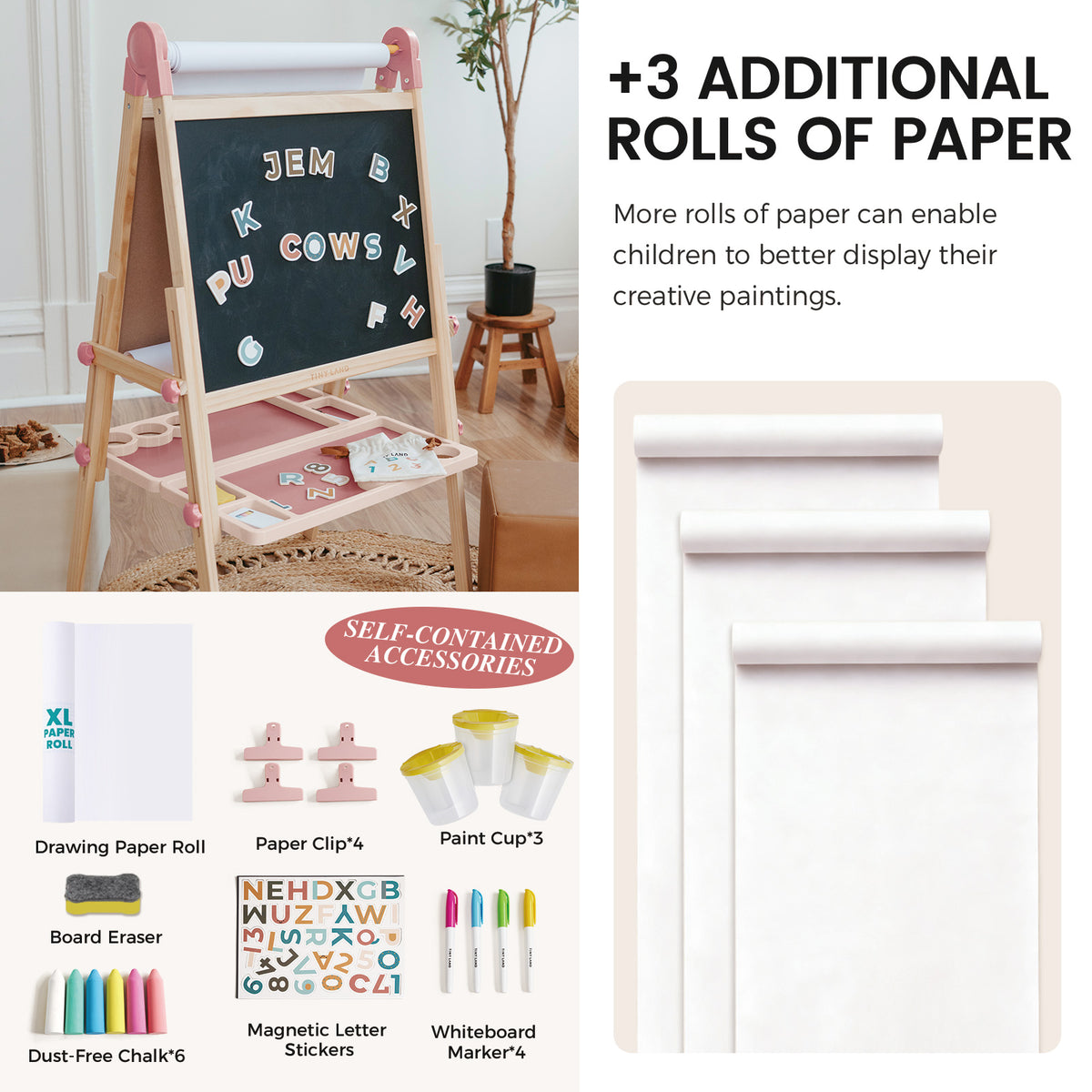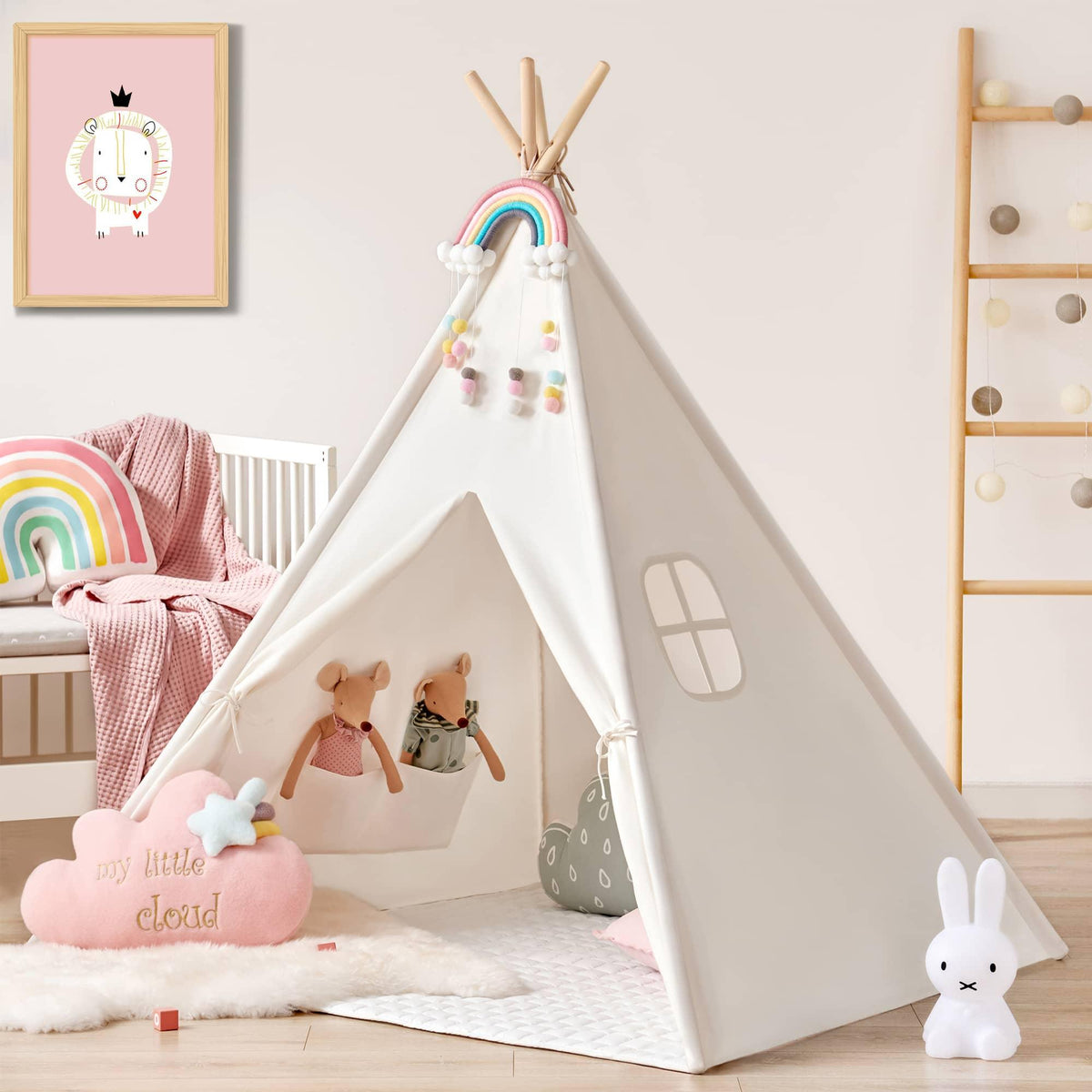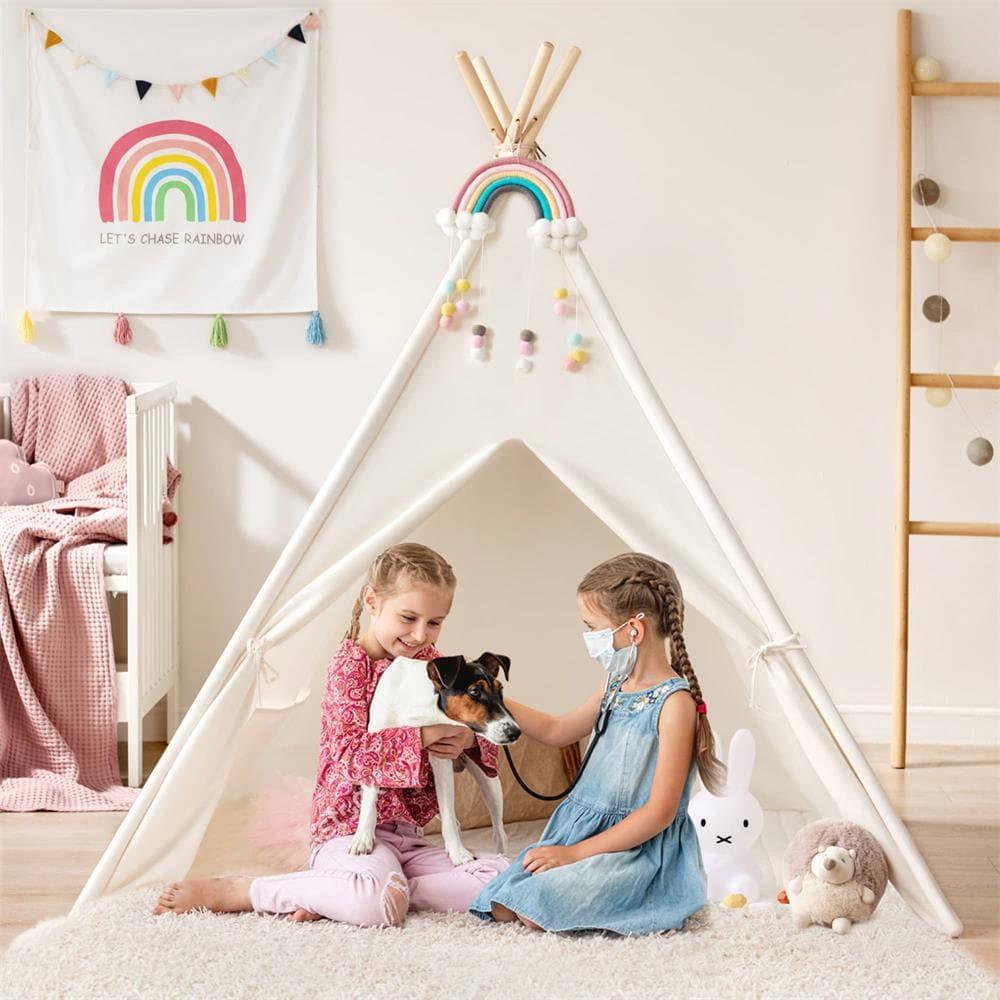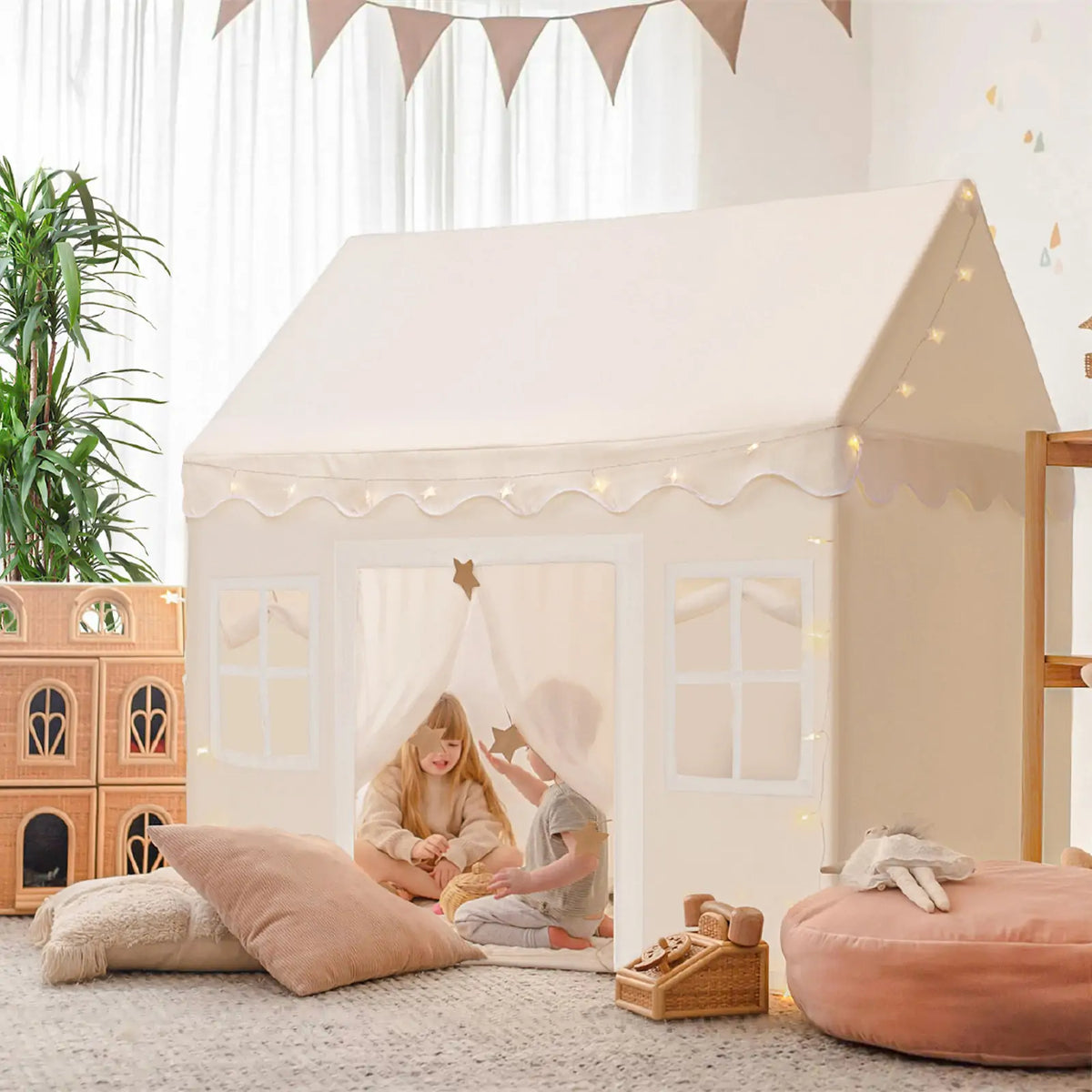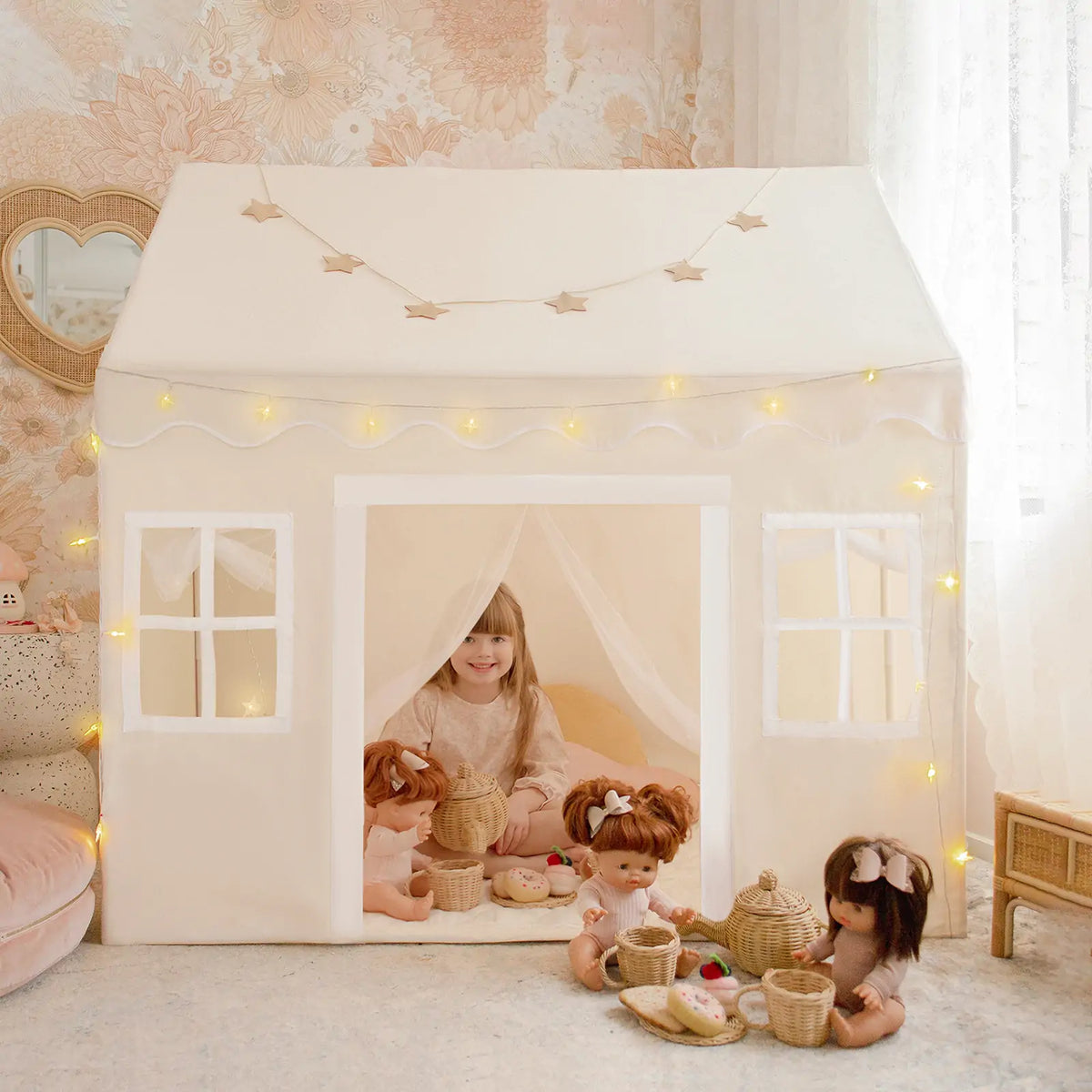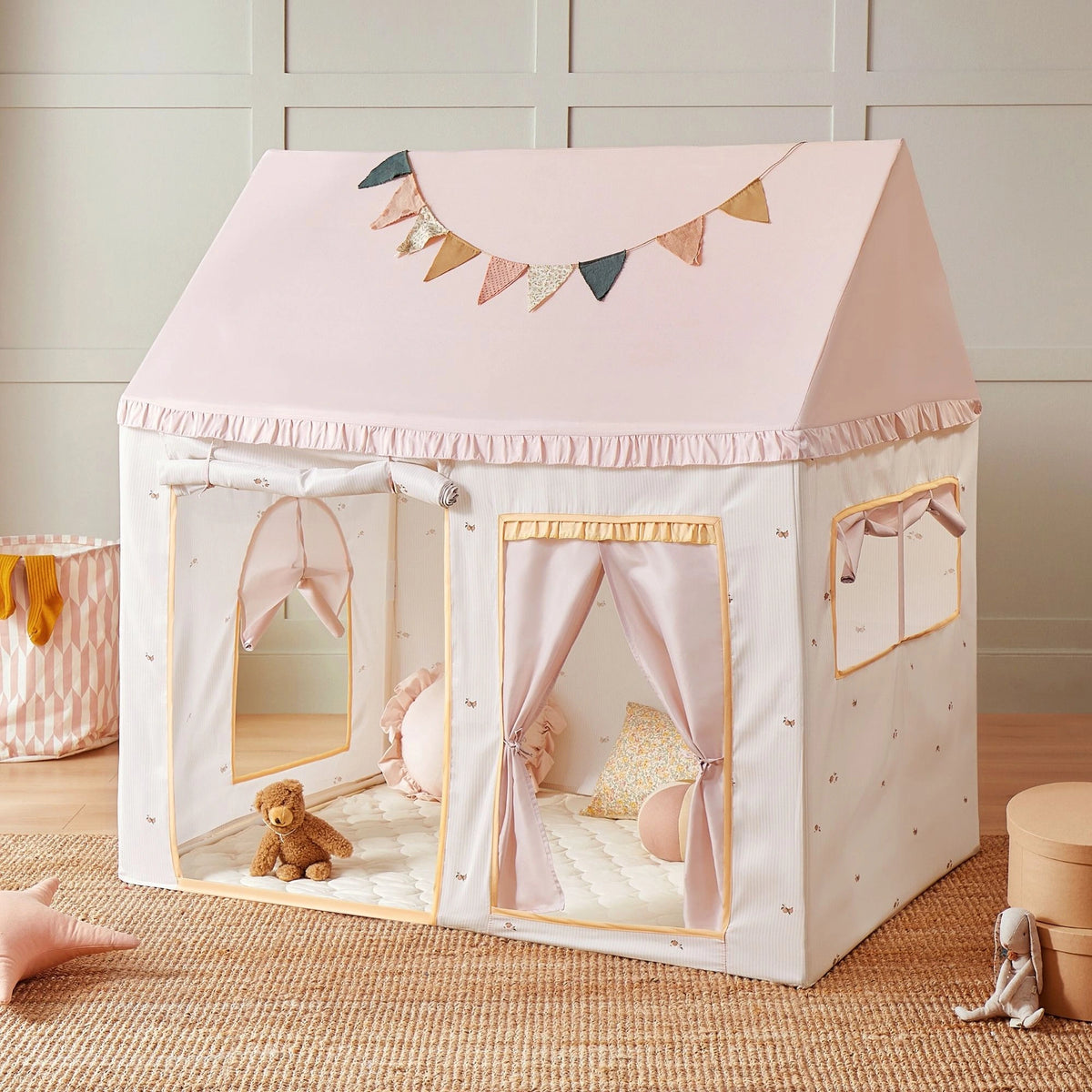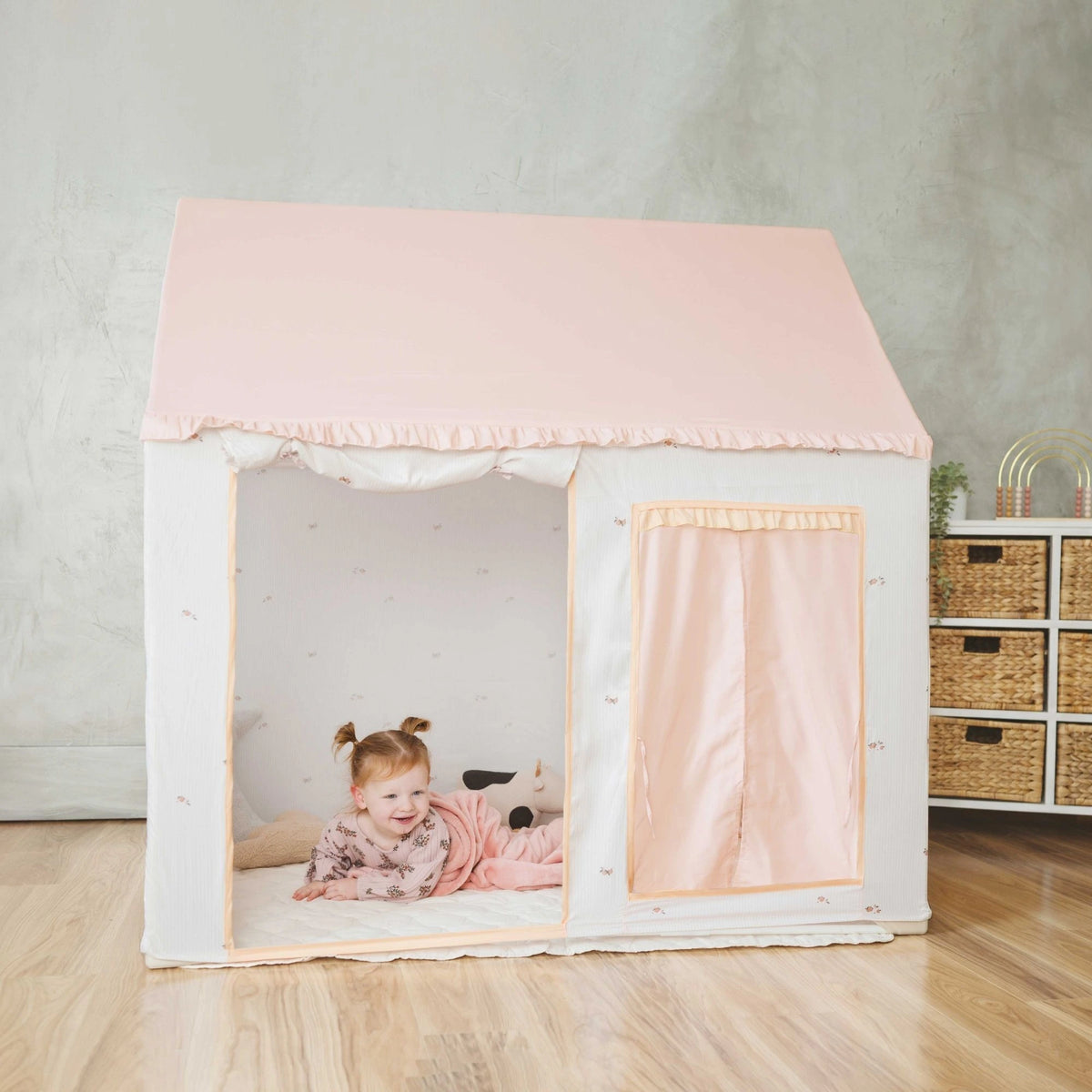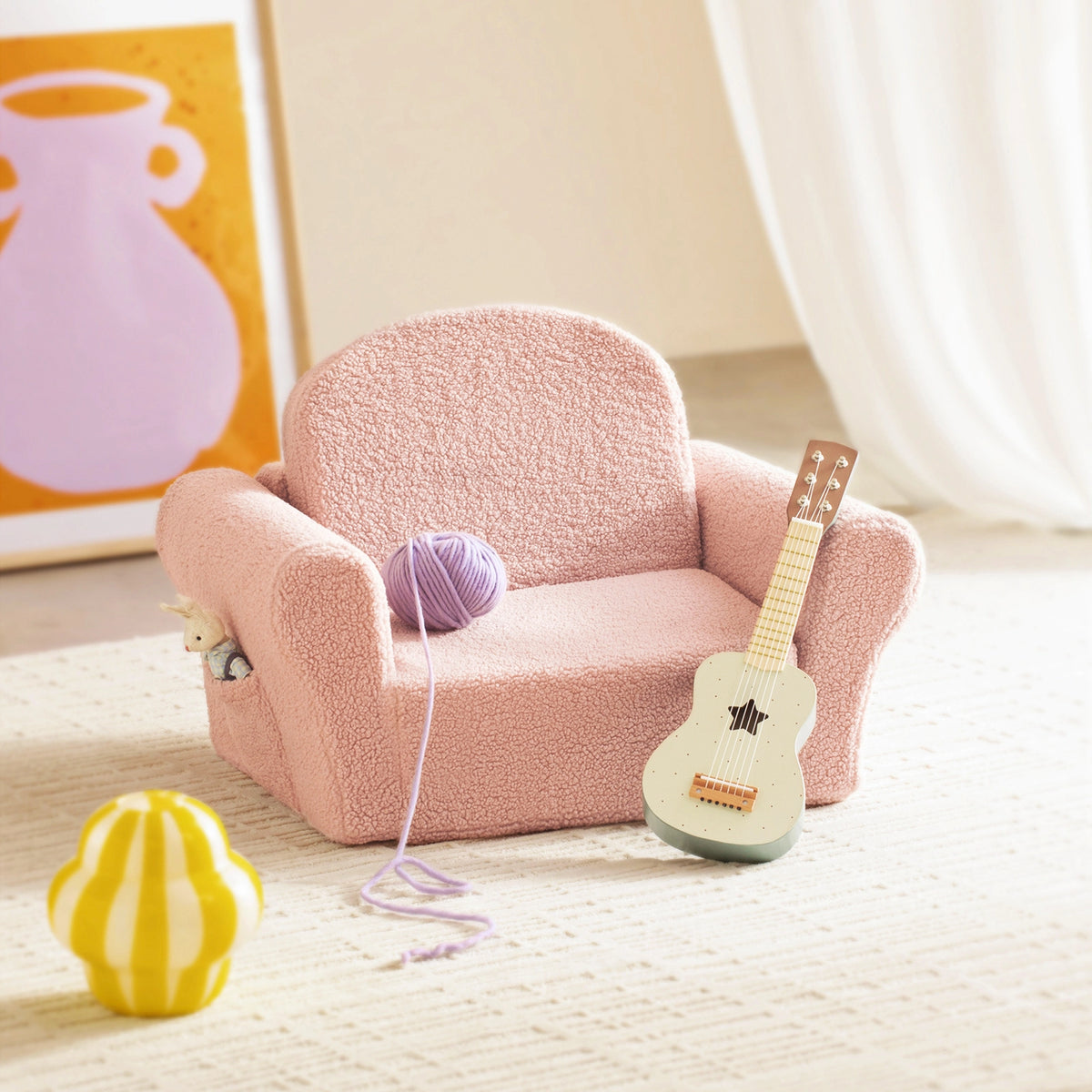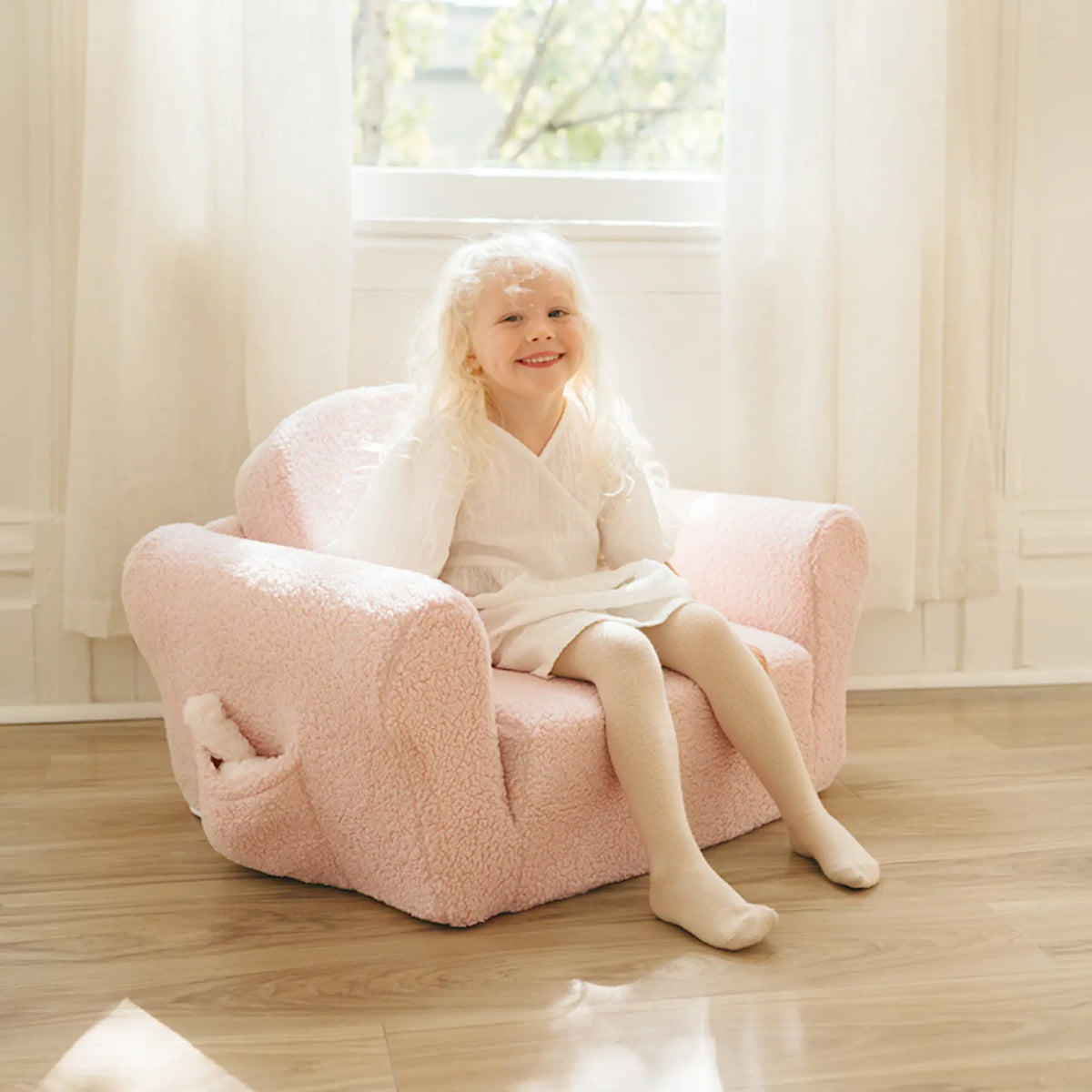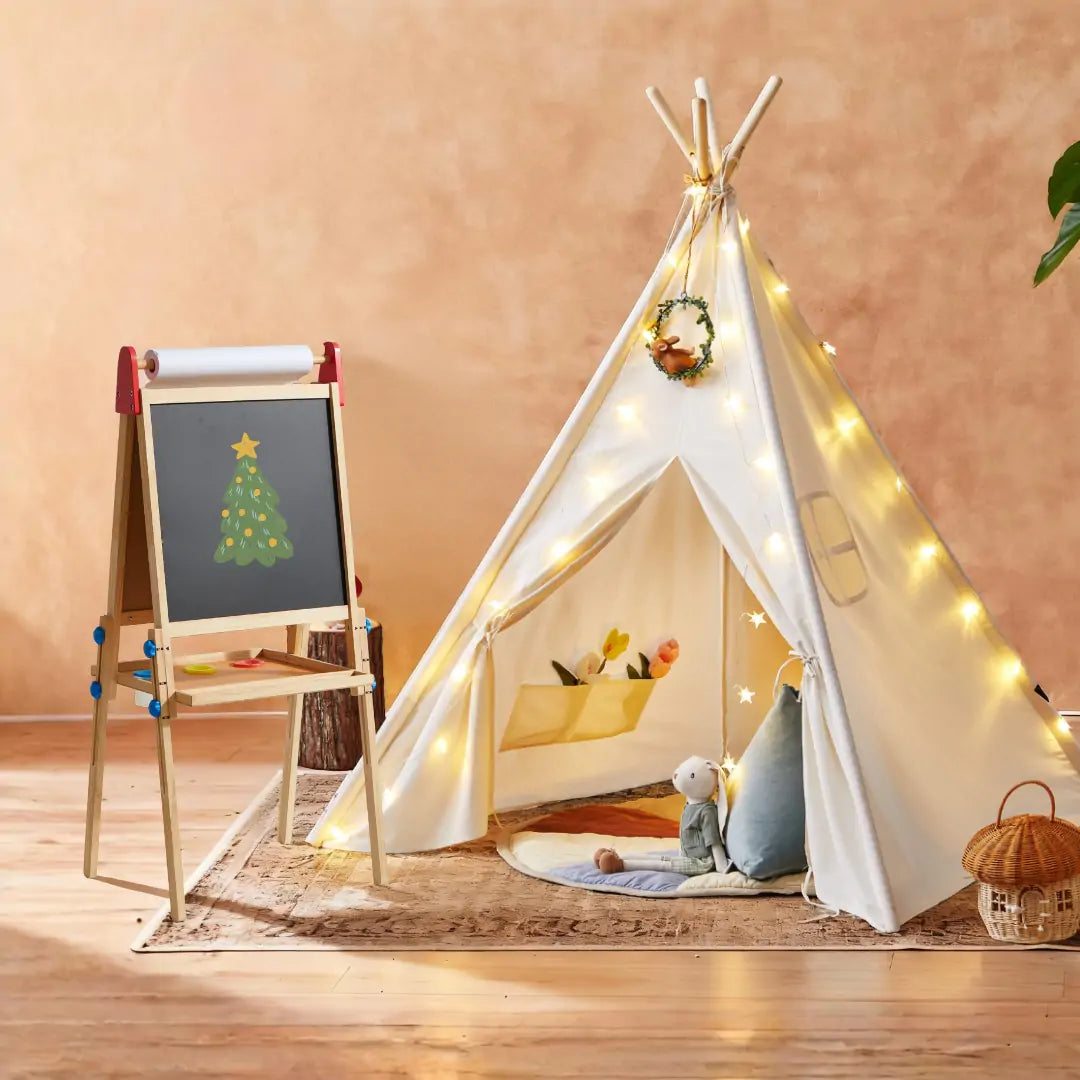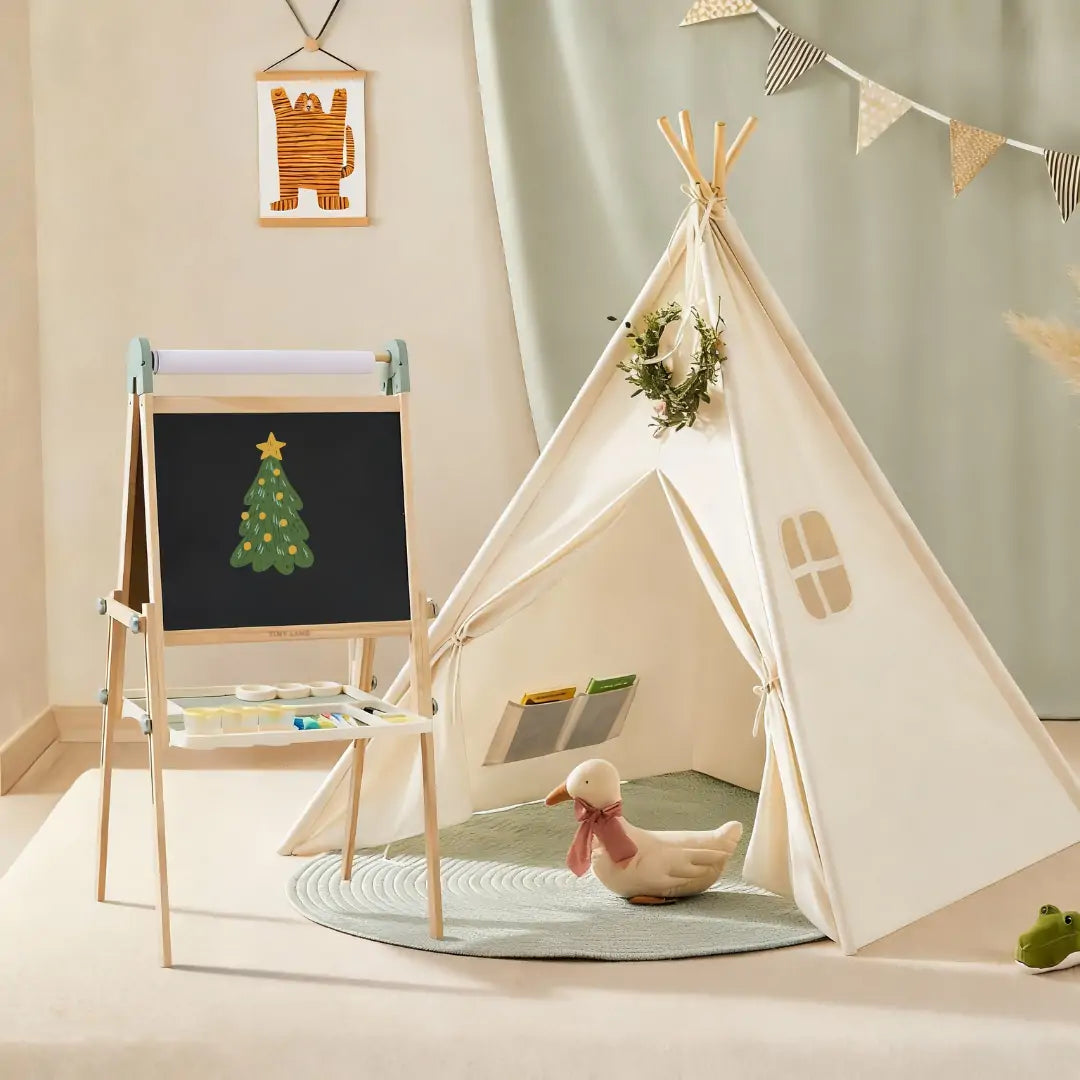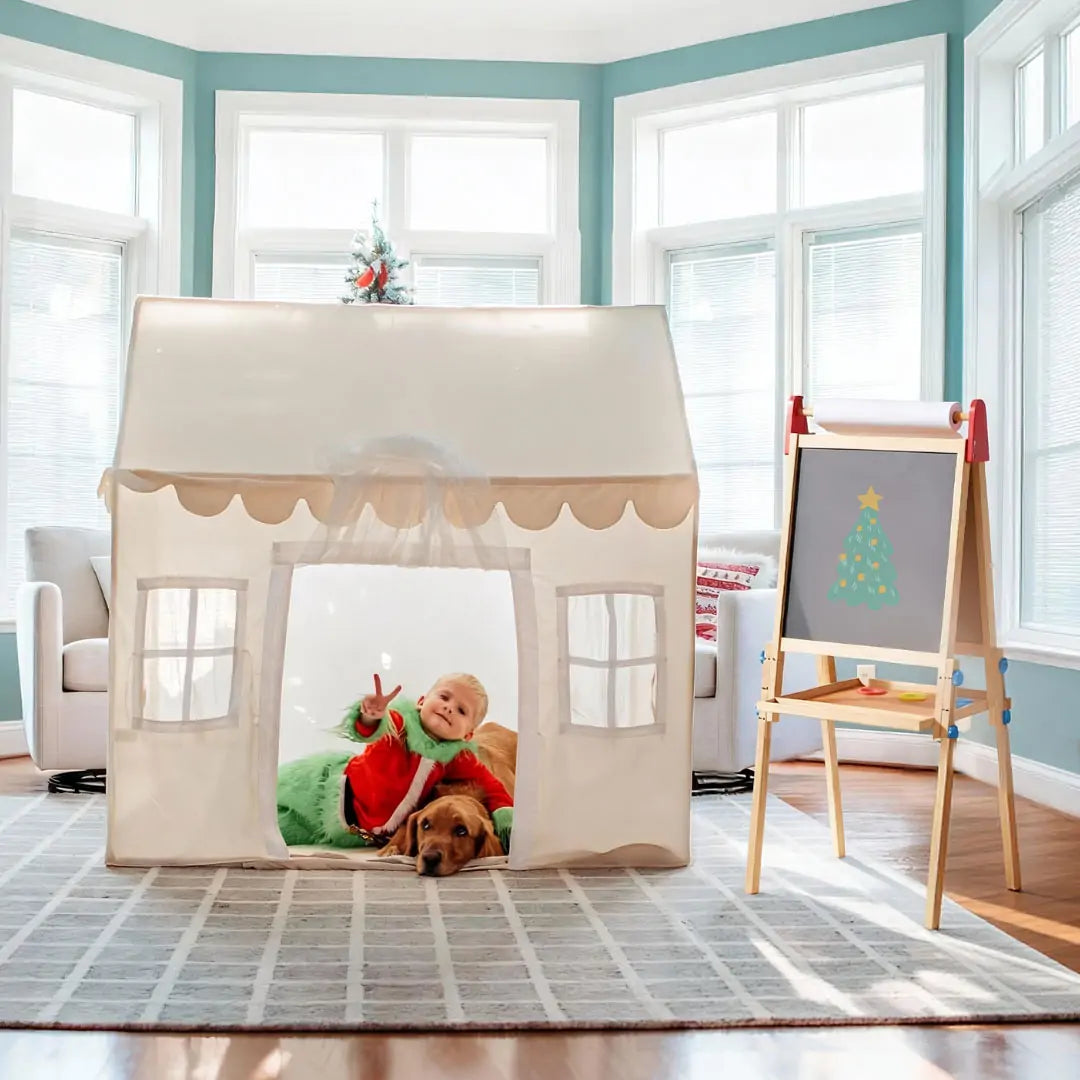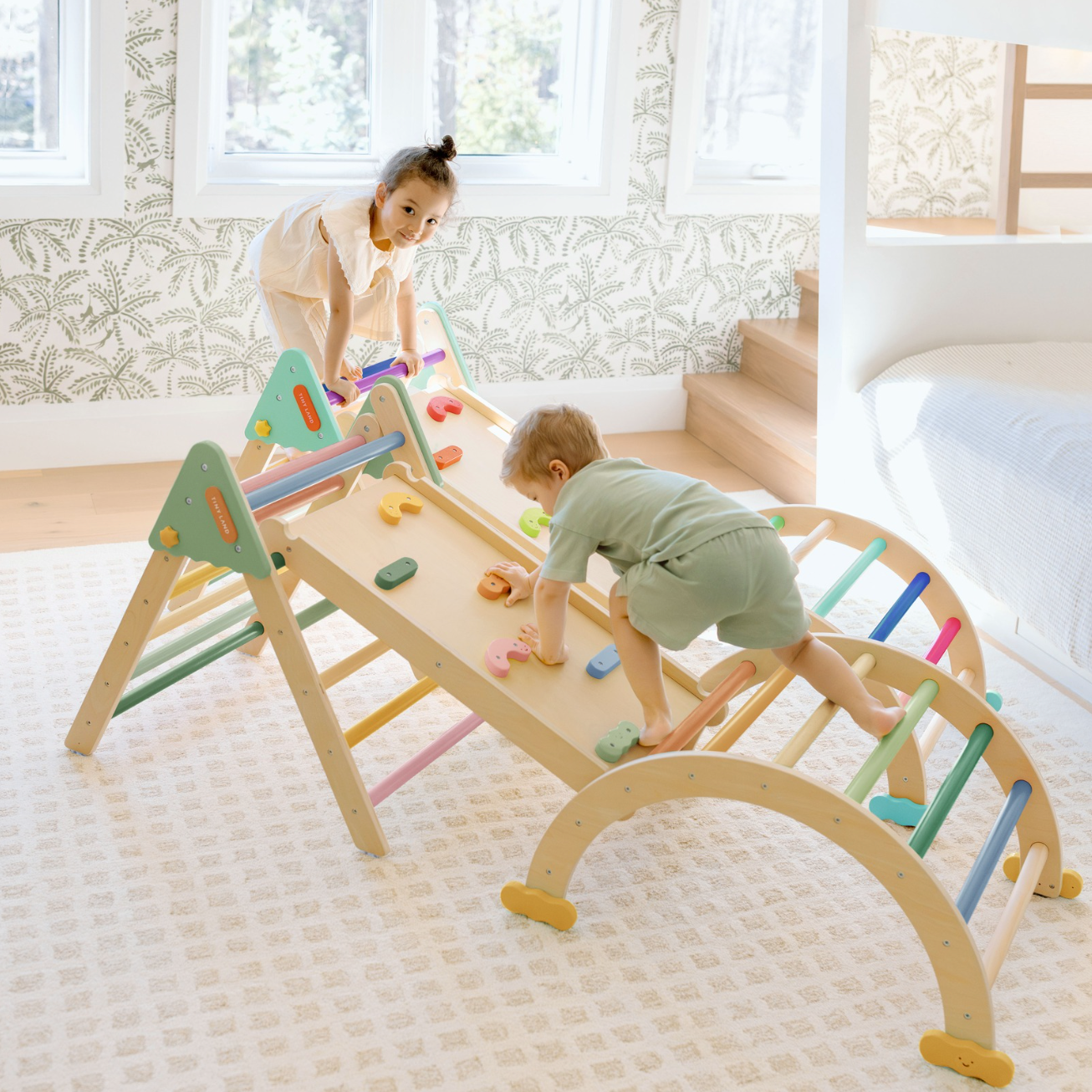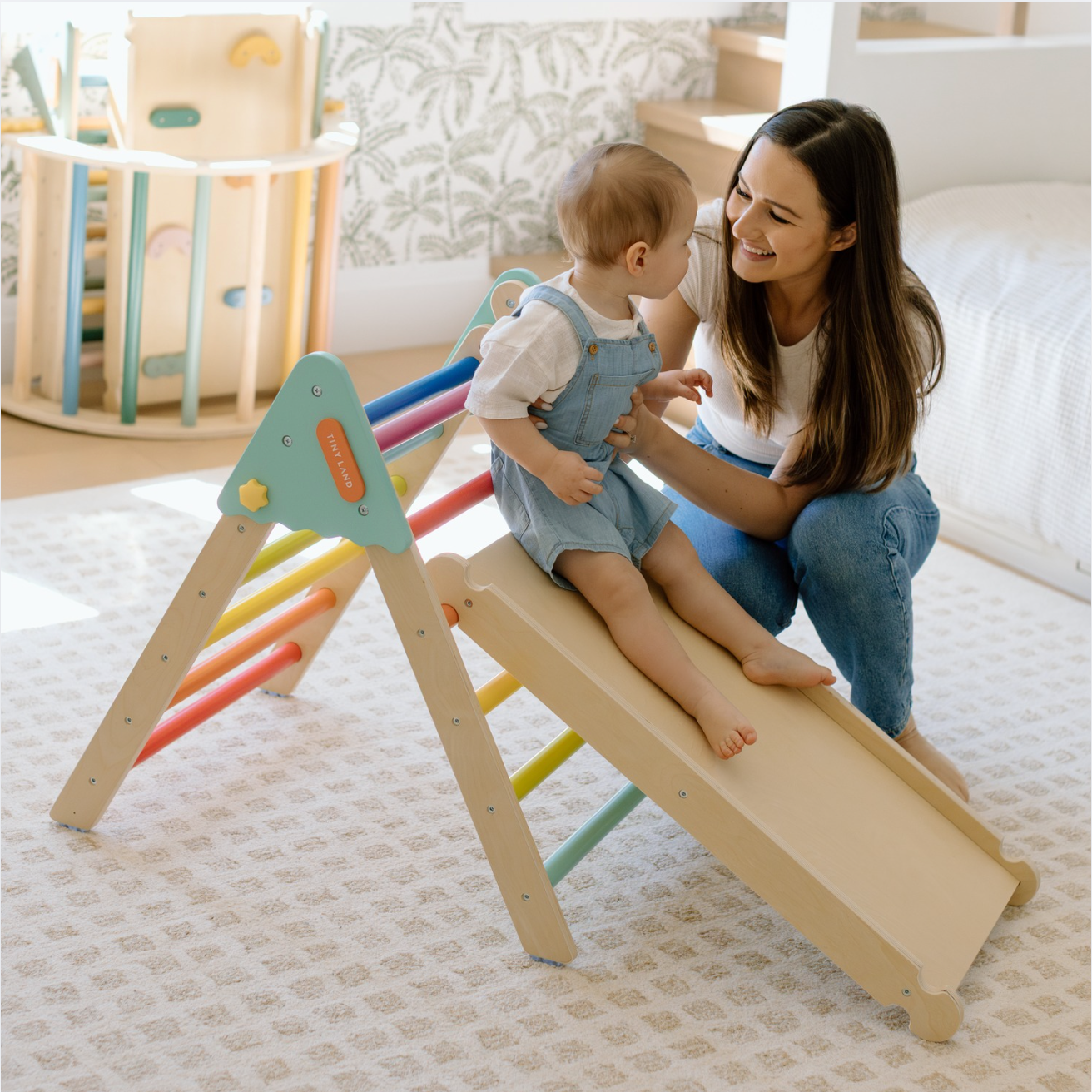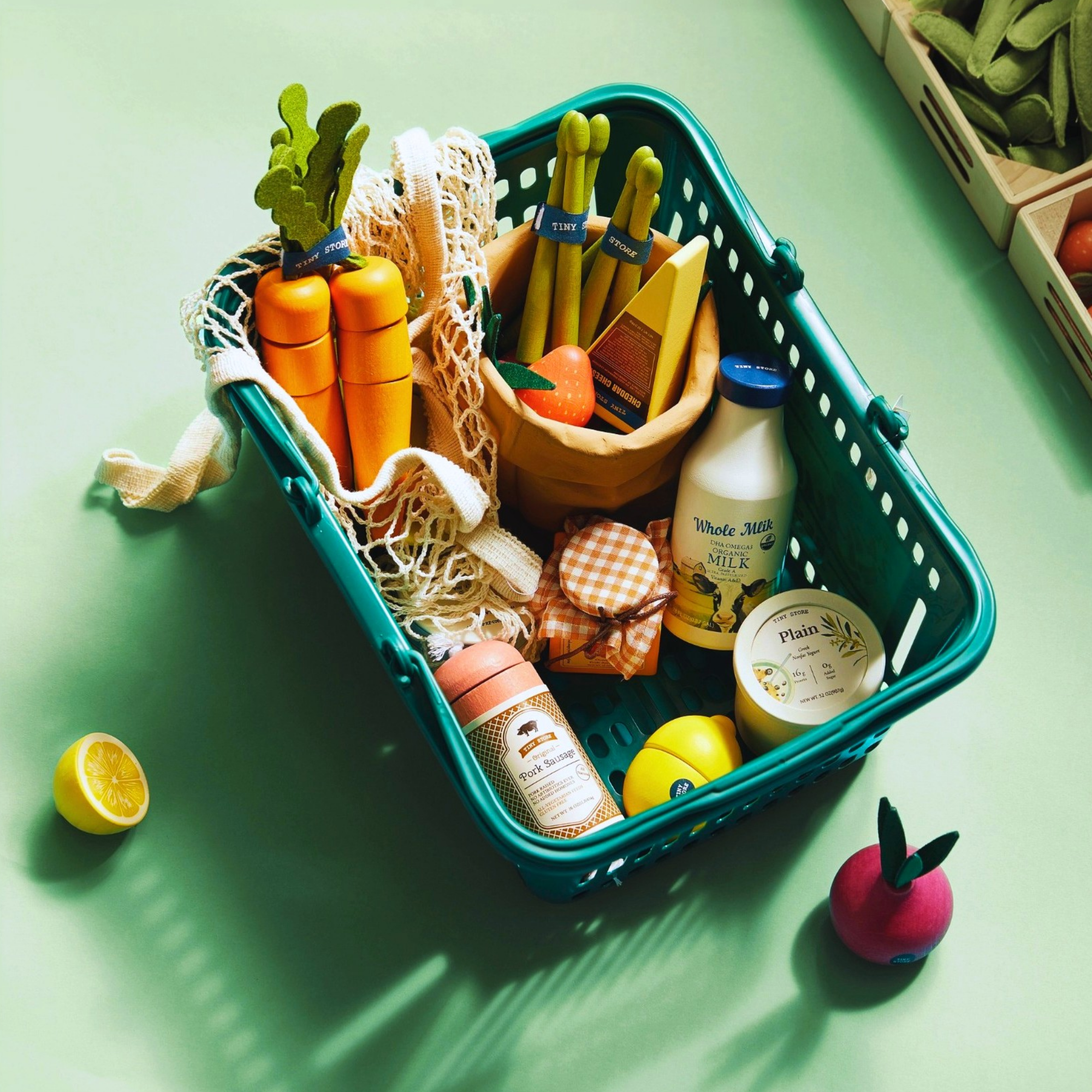It’s tempting to hand a tablet to your child when things get hectic — but what if we swapped screen time for climbing time? Climbing wooden toys offer a calm, tactile escape from screens while nurturing strength, focus, and independence. In this post, we’ll explore how these toys benefit children, how to choose a good one, and how Tiny Land’s Montessori line brings it all to life in your own home.

What Makes Montessori Climbing Toys a Smart Choice
Unlike flashy electronic gadgets, Montessori climbing toys emphasize motion, choice, and thoughtful design. They encourage children to explore at their own pace, building confidence through physical challenge rather than virtual reward. Because they are intentionally simple, they also fit beautifully into thoughtfully designed play spaces.
Creating an Indoor Playground at Home
You don’t need a huge backyard — with one good climbing piece, your living room can transform into an indoor playground. By combining a ramp, arch, or bridge with a climbable frame, you offer varied movement options while staying indoors and close by.

Why Motion Matters: Linking Play to Motor Skills & Gross Motor Skills
When children climb, they use big muscles, balance, and coordination — the very core of gross motor development. Over time, they also sharpen smaller muscle control, balance adjustments, and spatial awareness. With climbing, physical growth and motor development go hand in hand.

What to Look for in Toddler Climbing Toys
Here’s a checklist for non-expert parents:
- Natural wood construction with smooth, rounded edges
- A stable frame that resists tipping
- Design that fits toddlers now and grows with them
- Options for imaginative play (forts, tunnels, bridges)
- Compact or foldable design so it doesn’t dominate your space
- Safe, non-toxic touches and strong joints

How Climbing Supports Problem Solving, Confidence & Joy
climbing is an invitation to experiment: “Which angle works best? Can I use that rung?” This nurtures mental flexibility and problem solving skills. Every small success fosters self-trust — children feel, “I made it.” And yes — climbing is fun, not just developmental.

Spotlight: Tiny Land’s Montessori Climbing Set
Meet the Tiny Land 7‑in‑1 Montessori Climbing Set — a beautiful, modular climbing solution that checks all the boxes:

- Made of solid natural wood with child-safe finishes
- Includes triangle, ramp, slide, arch — multiple ways to climb and play
- Designed for indoor playground setups
- Supports both motor skills and cognitive growth
- Gives kids room for creativity and movement
- Folds for easier storage, so it’s practical in real homes
- Encourages montessori climbing set use and independent play
This set blends aesthetic appeal with educational purpose — ideal for parents who want something that looks intentional and performs beautifully.
Tips to Make It Thrive in Your Home
- Start with the triangle or lower ramp — let children get comfortable first.
- Use a soft mat underneath to buffer slips.
- Rotate configurations (e.g. ramp one day, arch the next) to keep play fresh.
- Step back sometimes — let them struggle a bit. That’s where growth happens.
- Celebrate attempts, not just successes — small efforts matter.

FAQ
What is a Pikler triangle used for?
It’s used to provide children with a safe climbing structure to practice balance, coordination, confidence, and creative movement in a controlled setting.
When can babies use a Pikler triangle?
Most parents start offering gentle climbing options when children begin pulling up (often around 6–9 months) — always with supervision.
How do climbing toys support imaginative play?
They invite children to turn ordinary structures into extraordinary adventures — bridges, forts, castles, or caves. This open-ended imaginative play helps them express creativity, practice storytelling, and explore the world through movement.

Conclusion
Climbing wooden toys offer a quiet rebellion against screen saturation — they reconnect children with their bodies, imaginations, and real-world challenge. Tiny Land’s Montessori sets, with their thoughtful design and modular options, bring this vision into everyday life: an elegant, purposeful indoor playground that supports growth, freedom, and joy.


